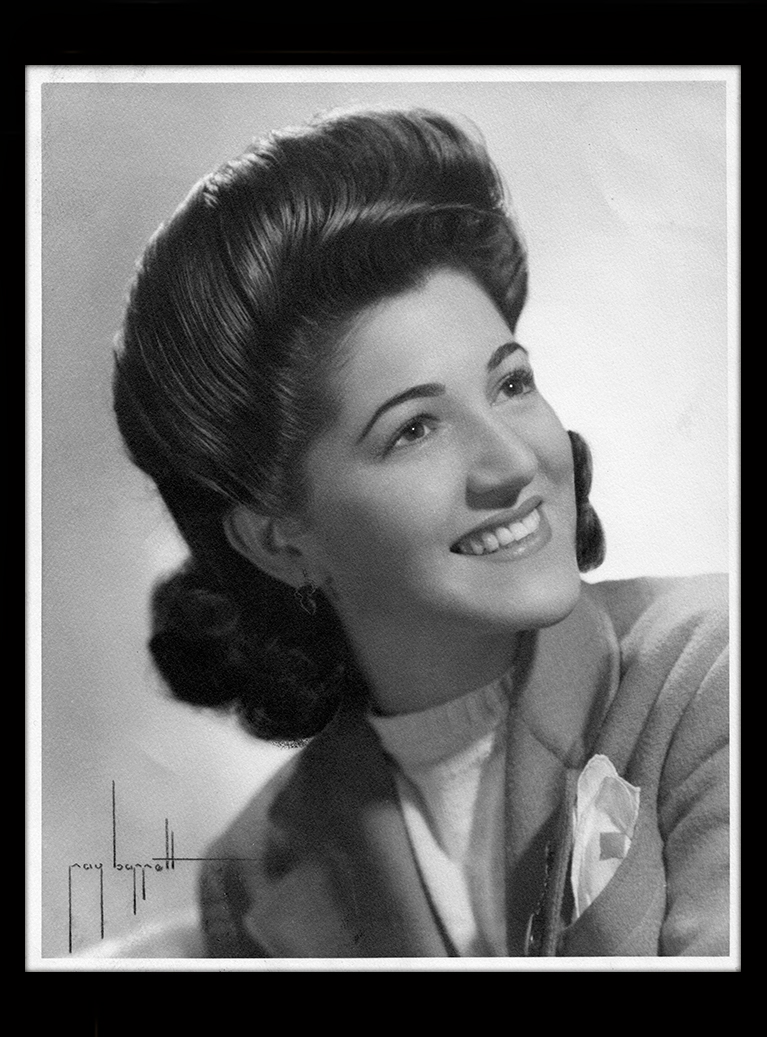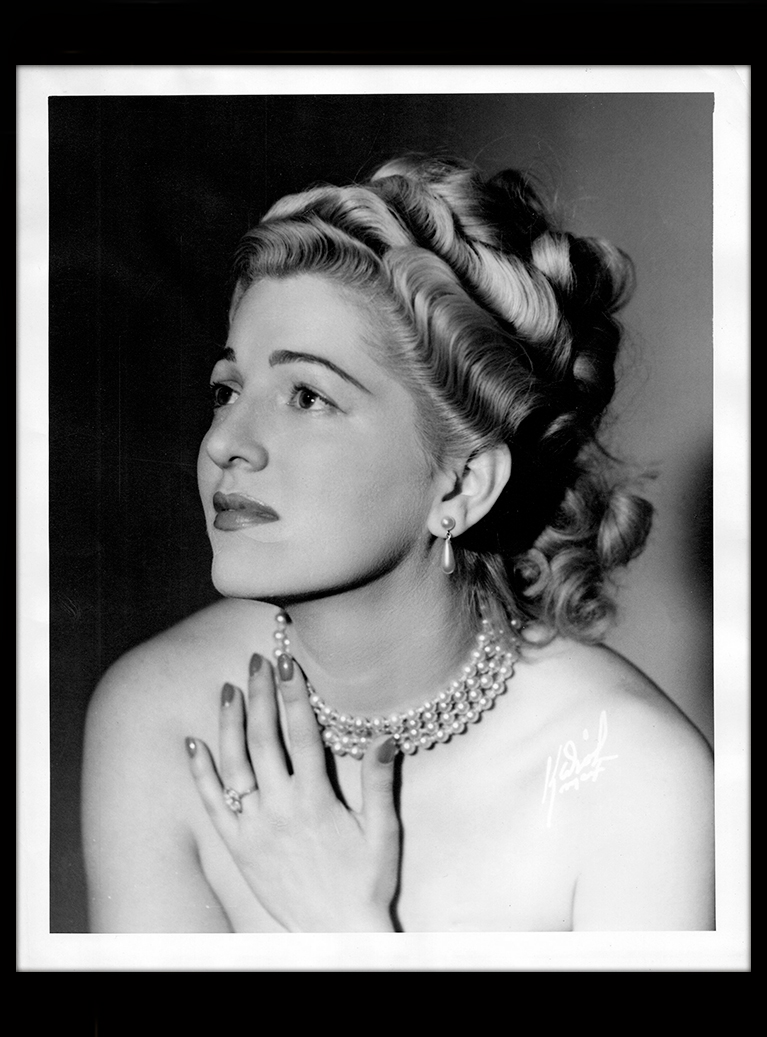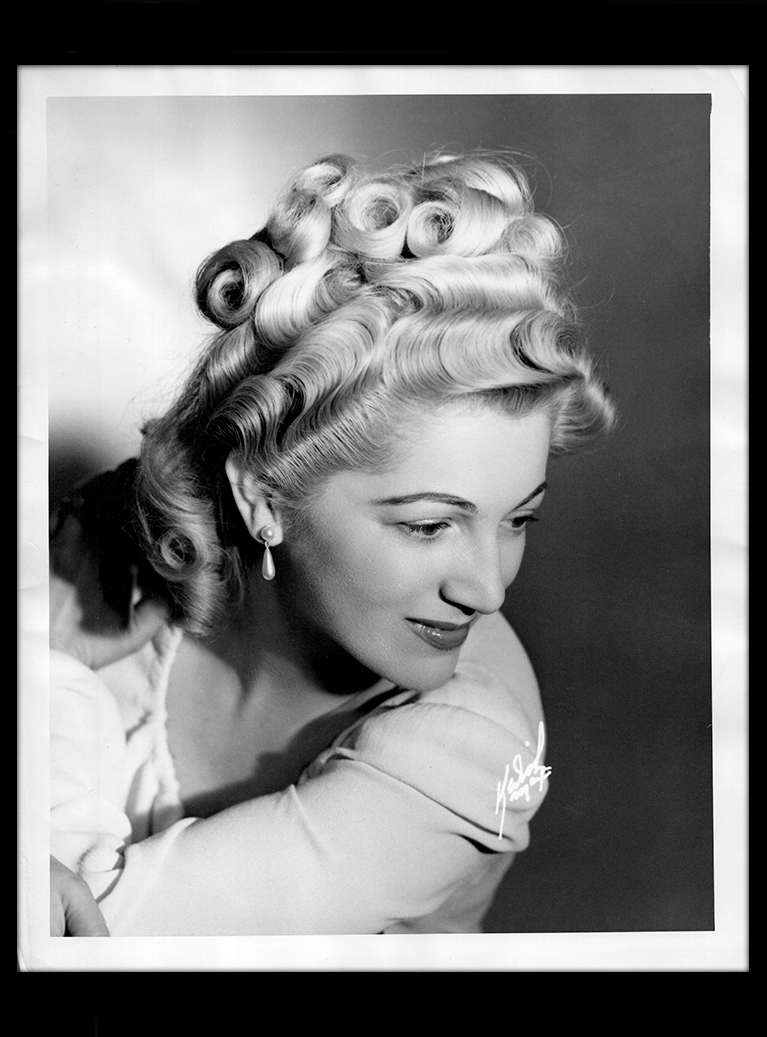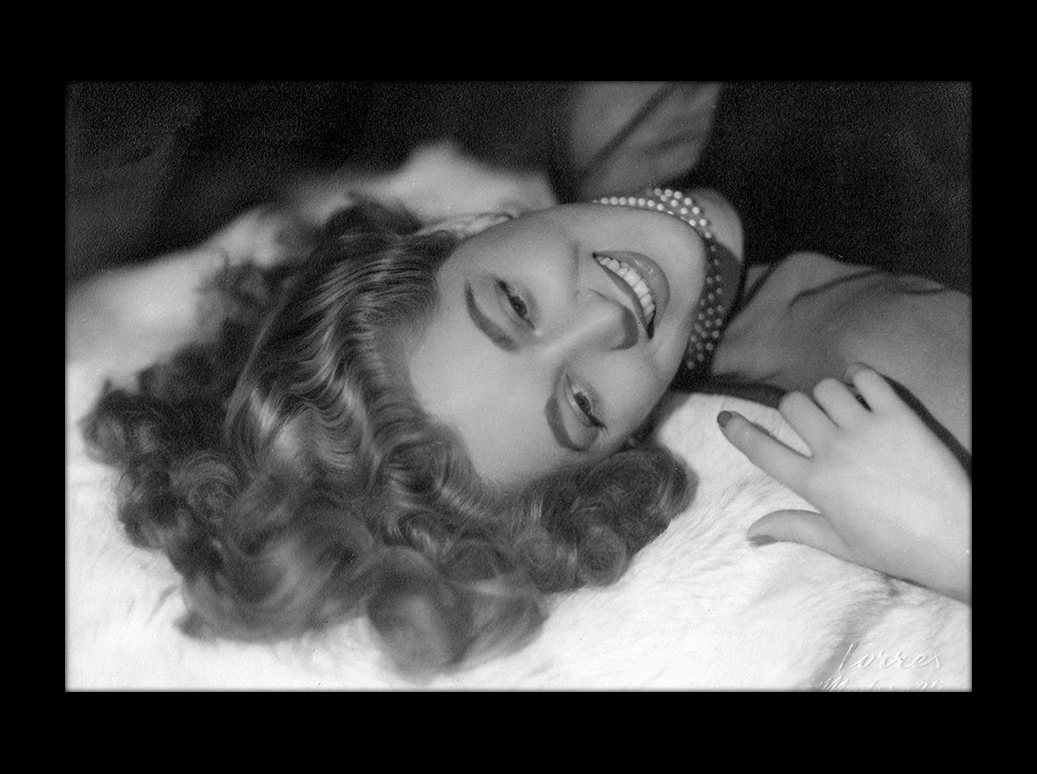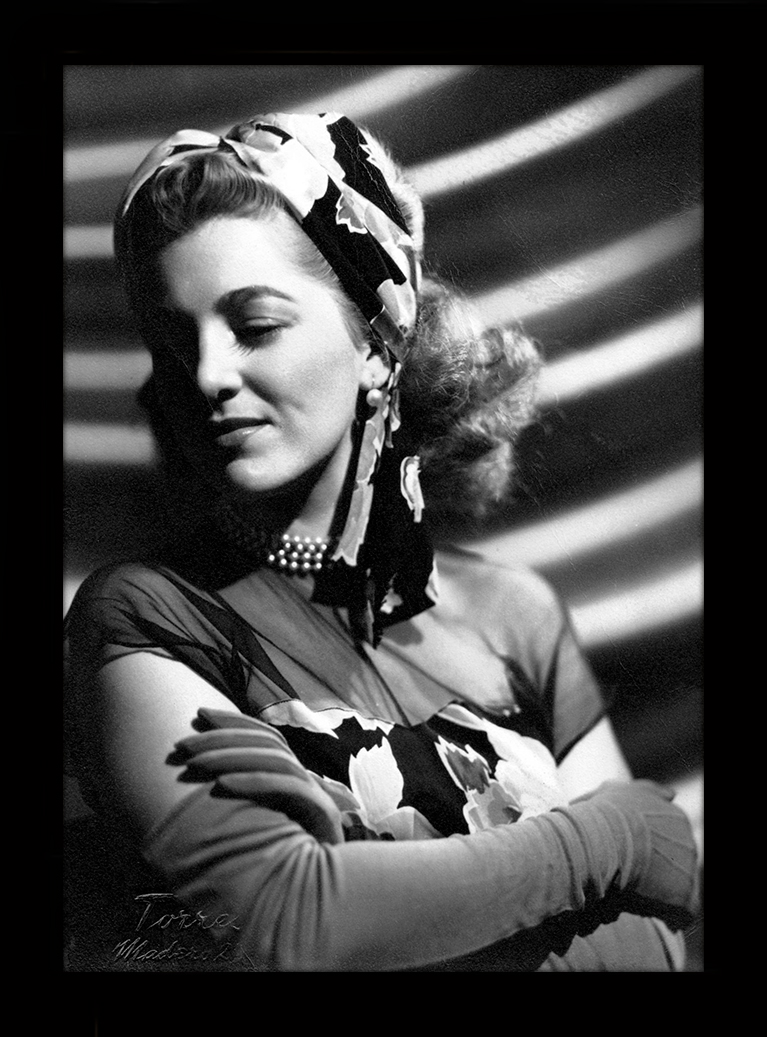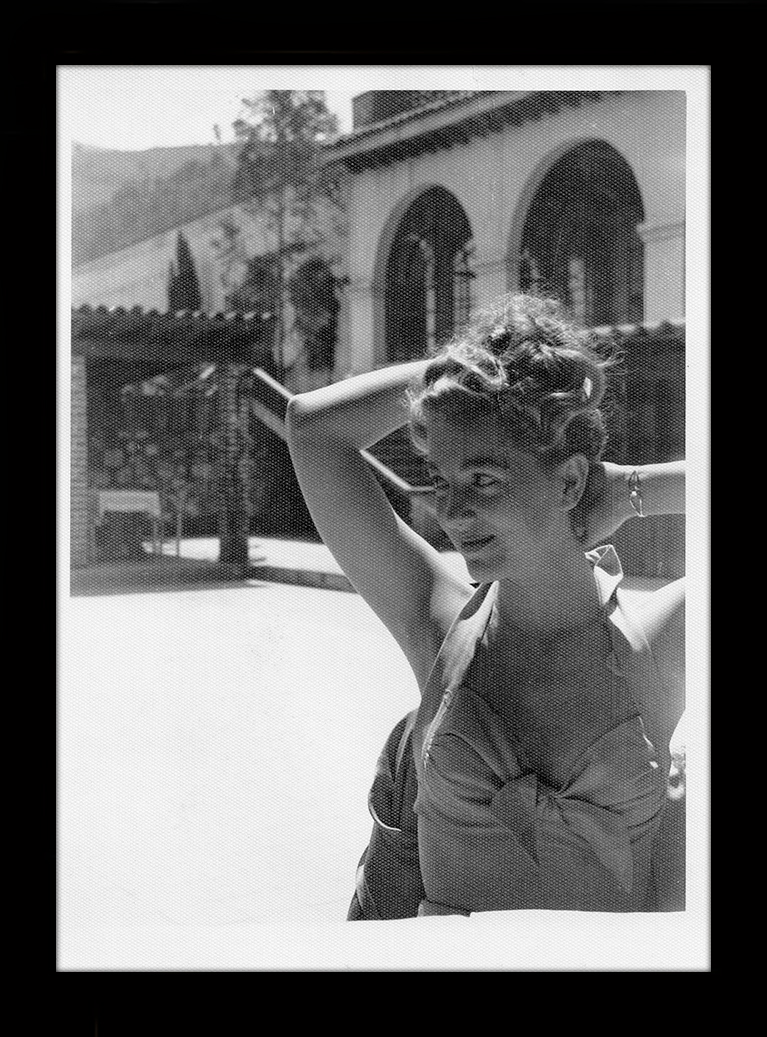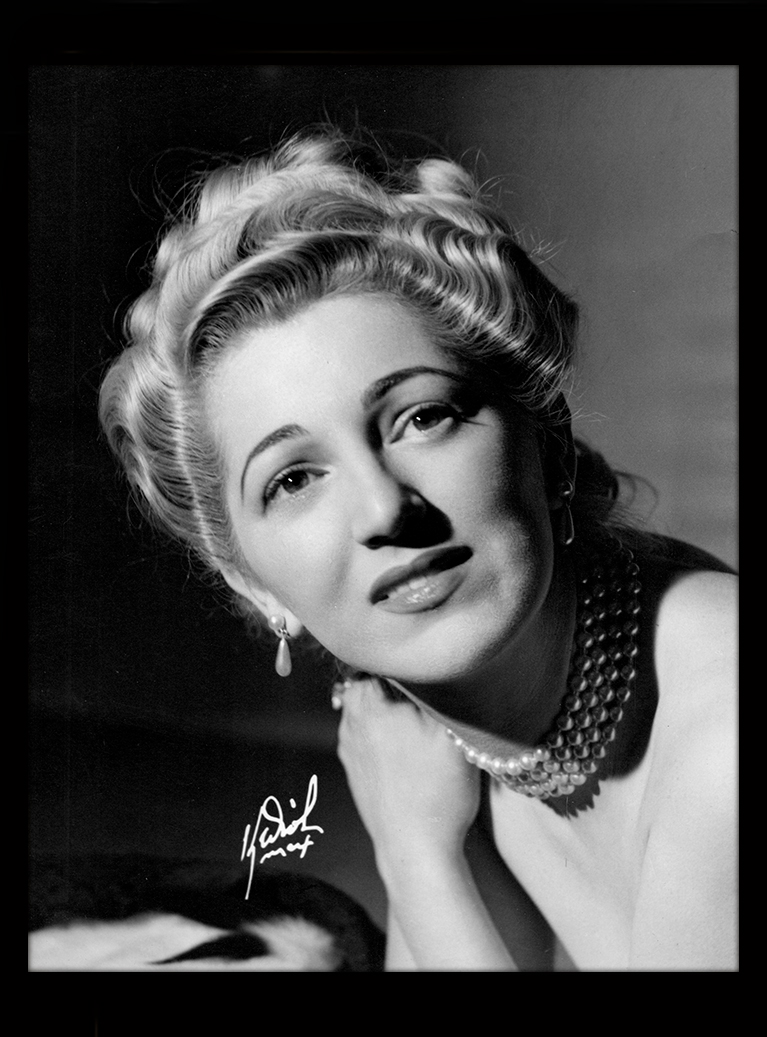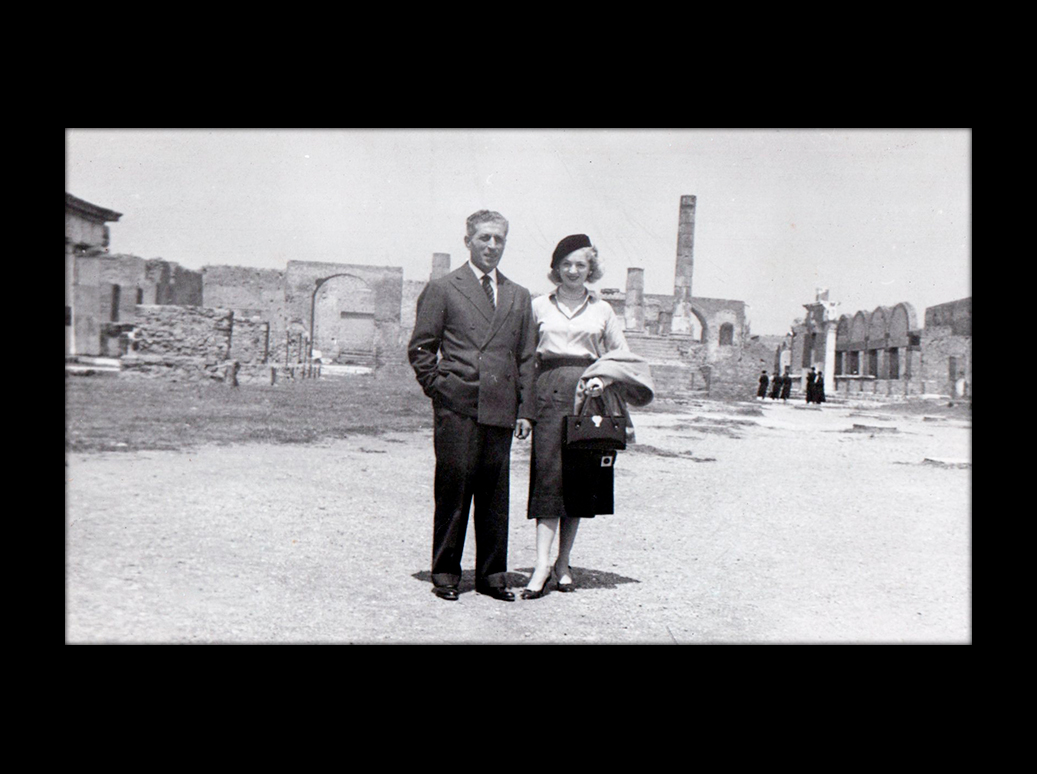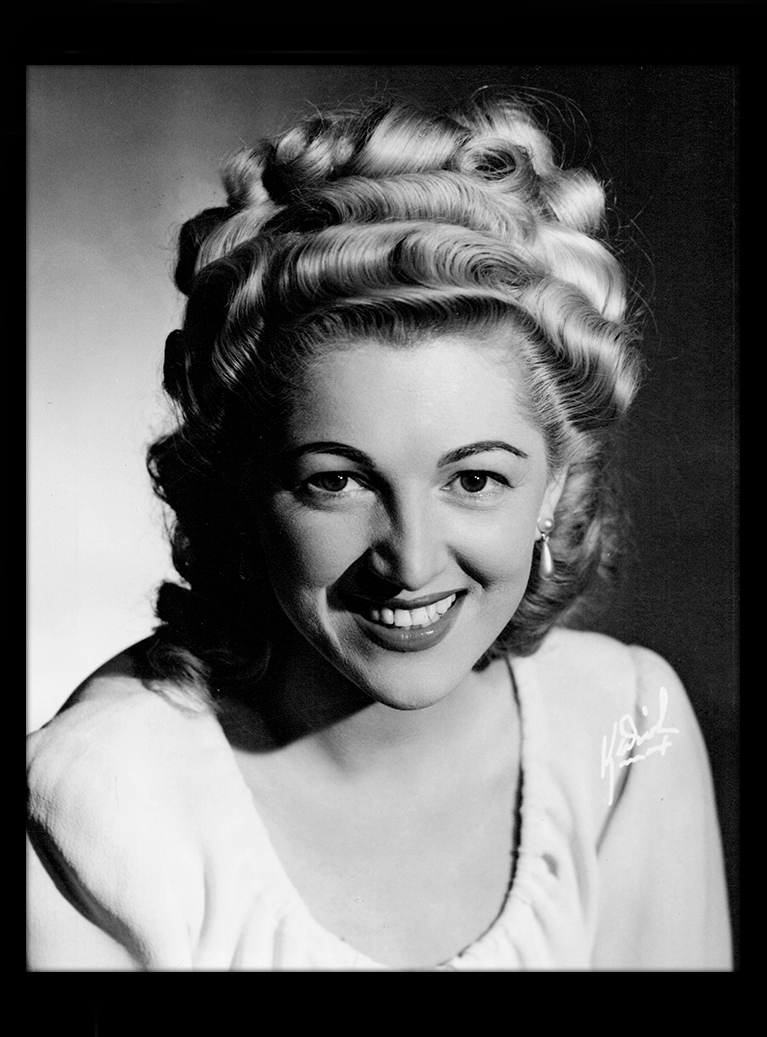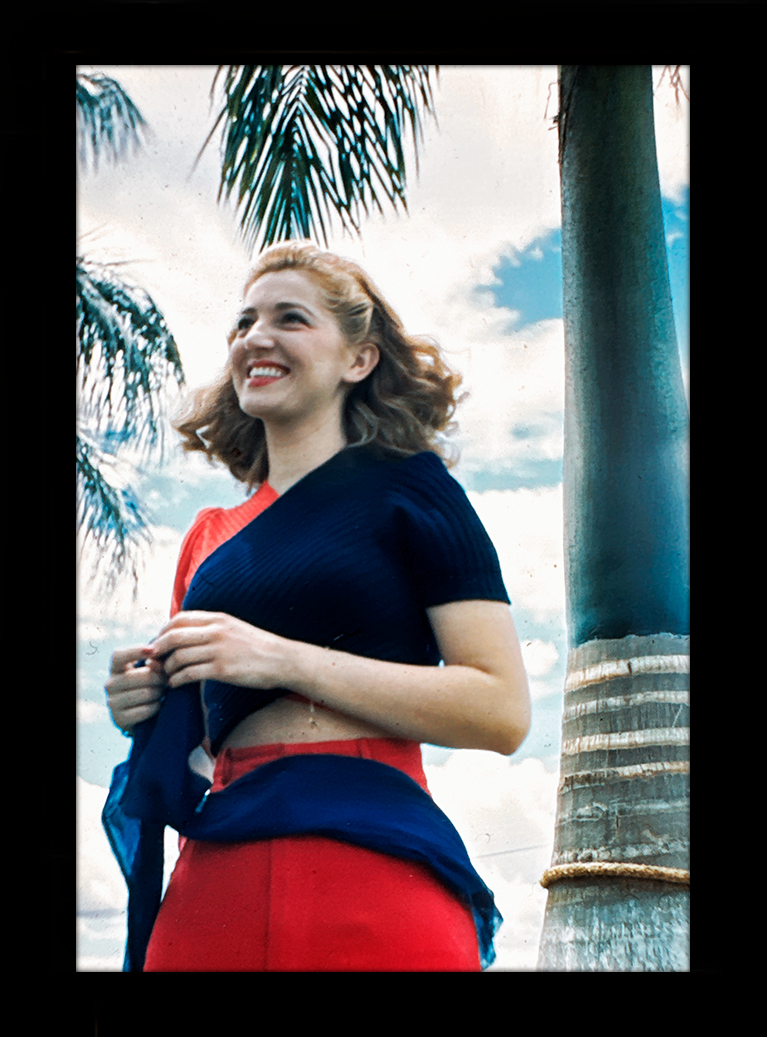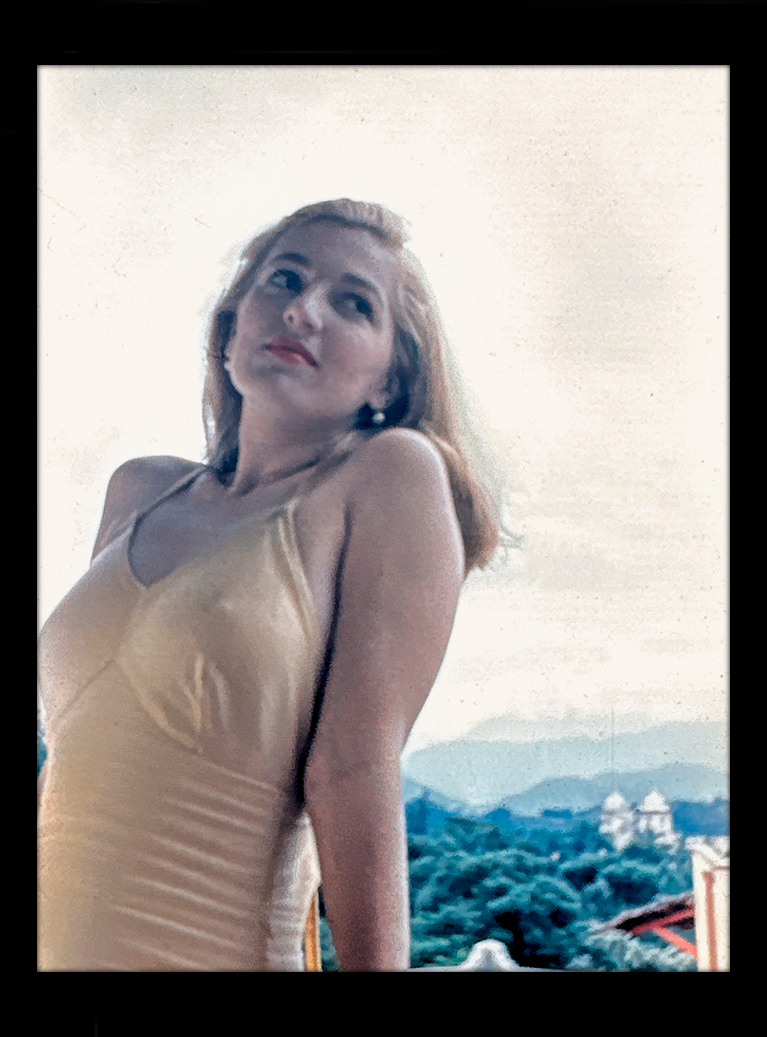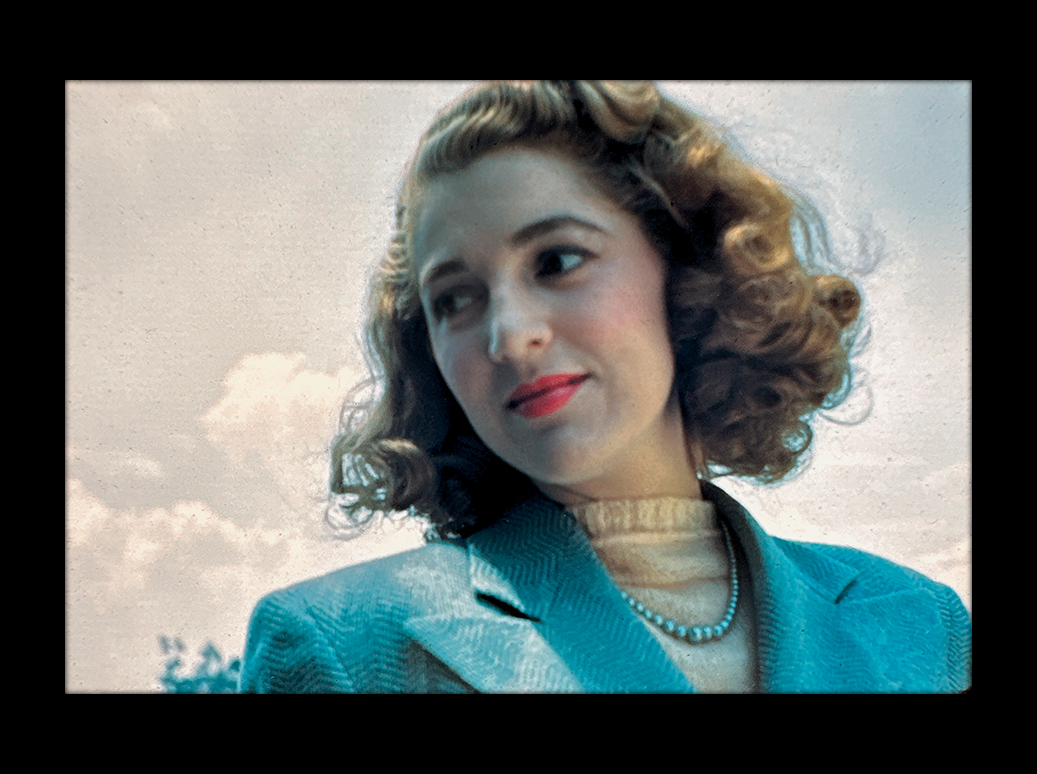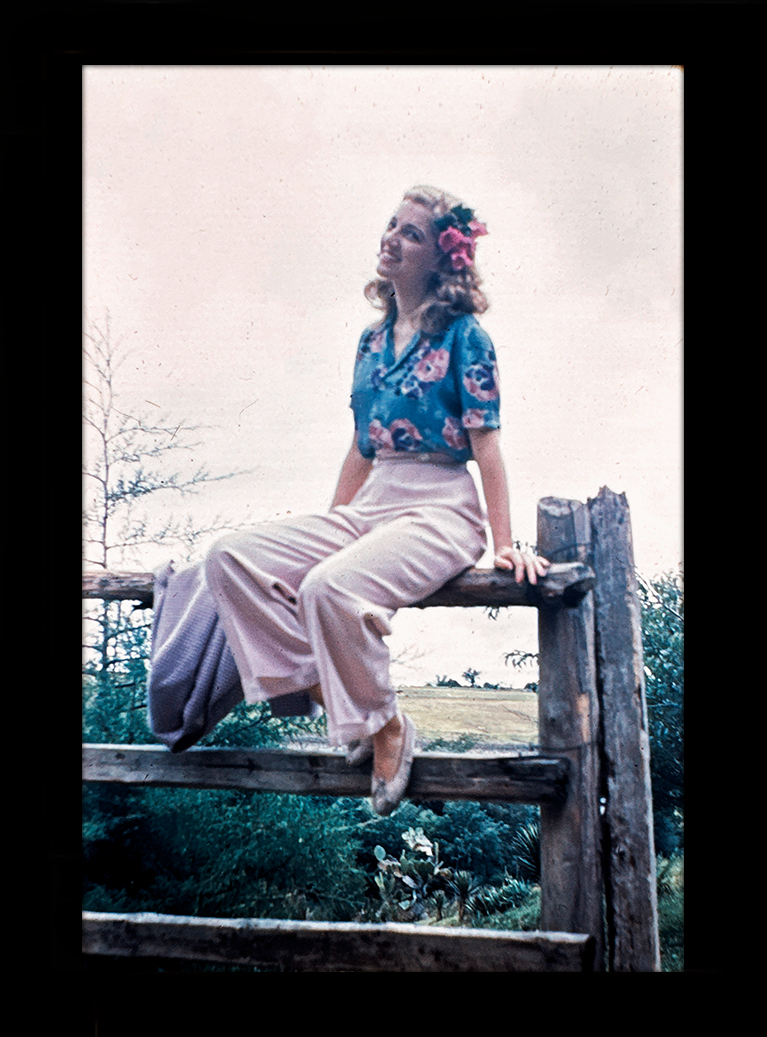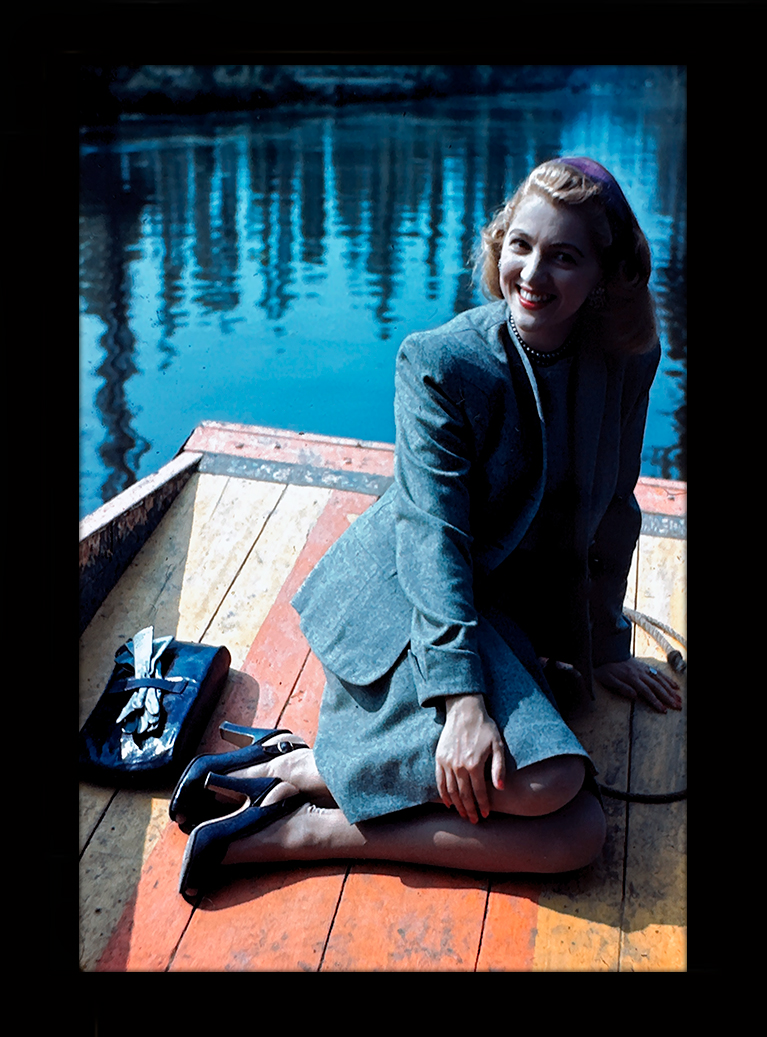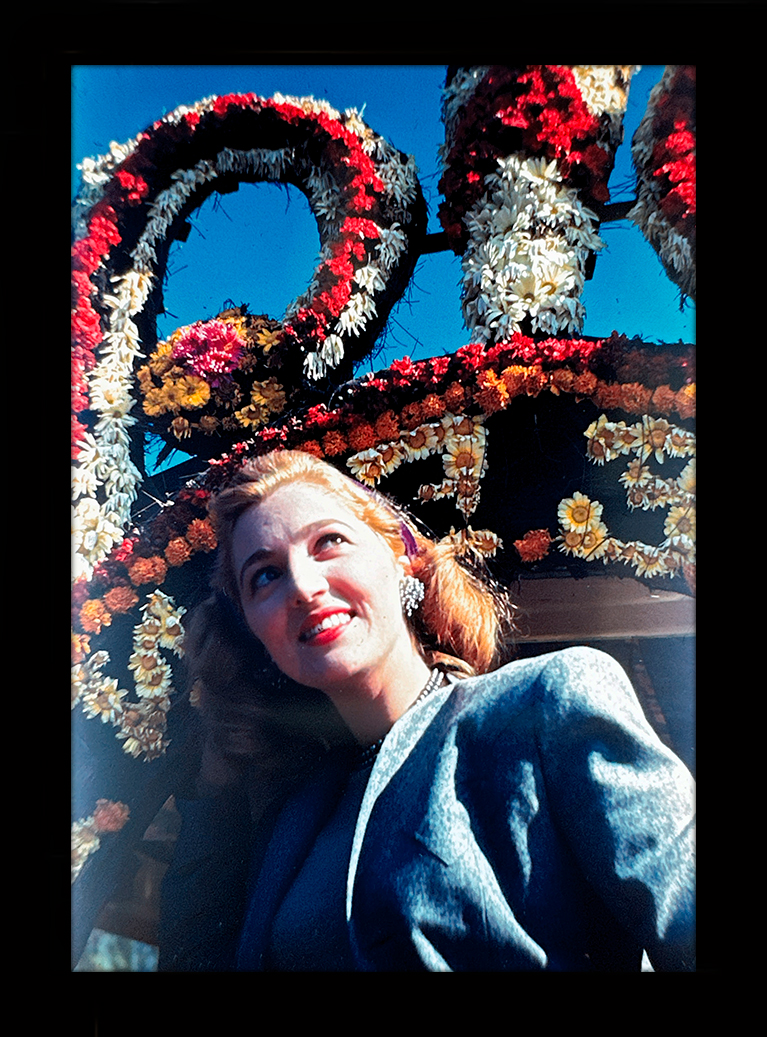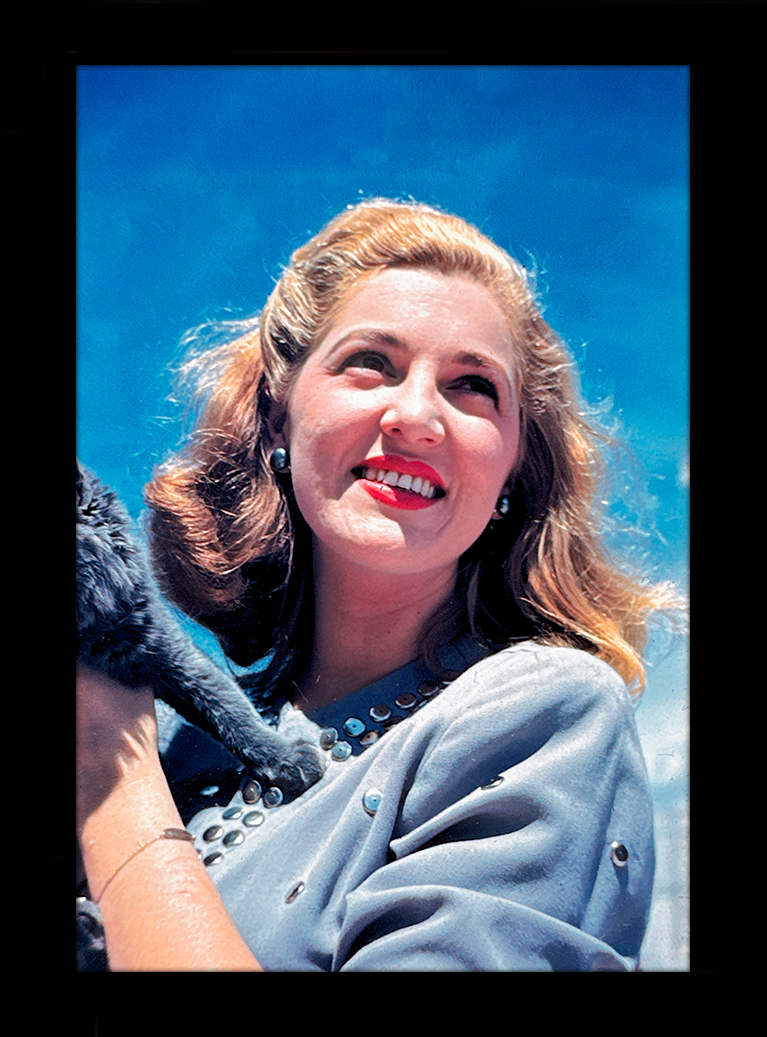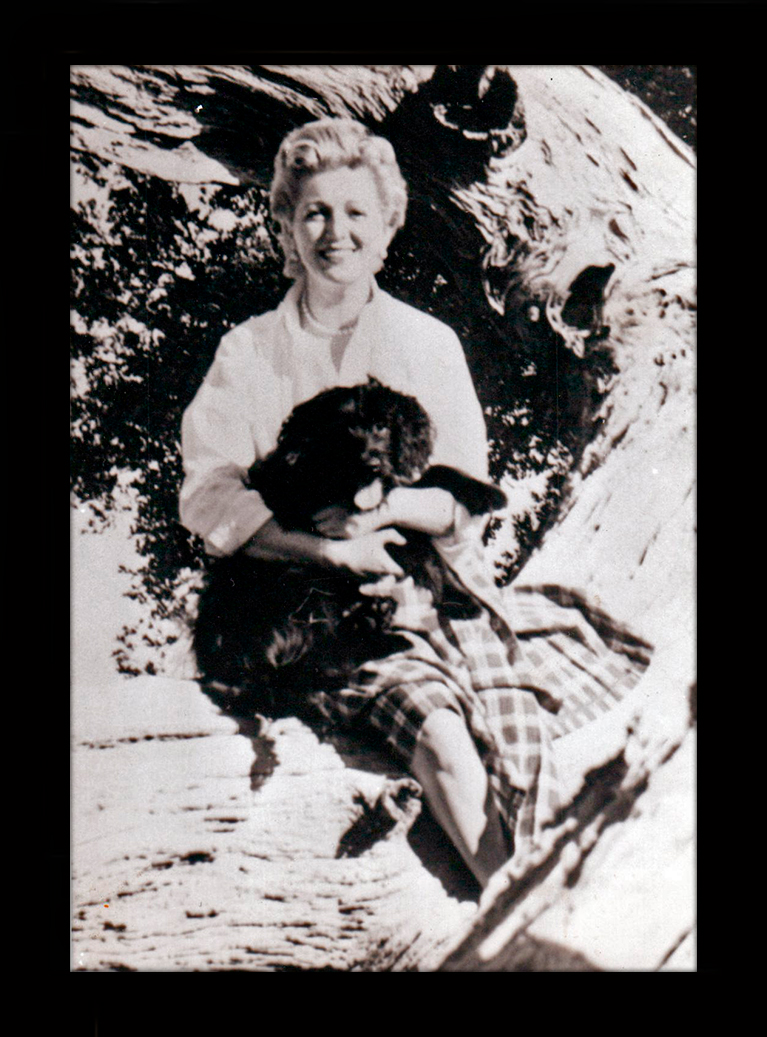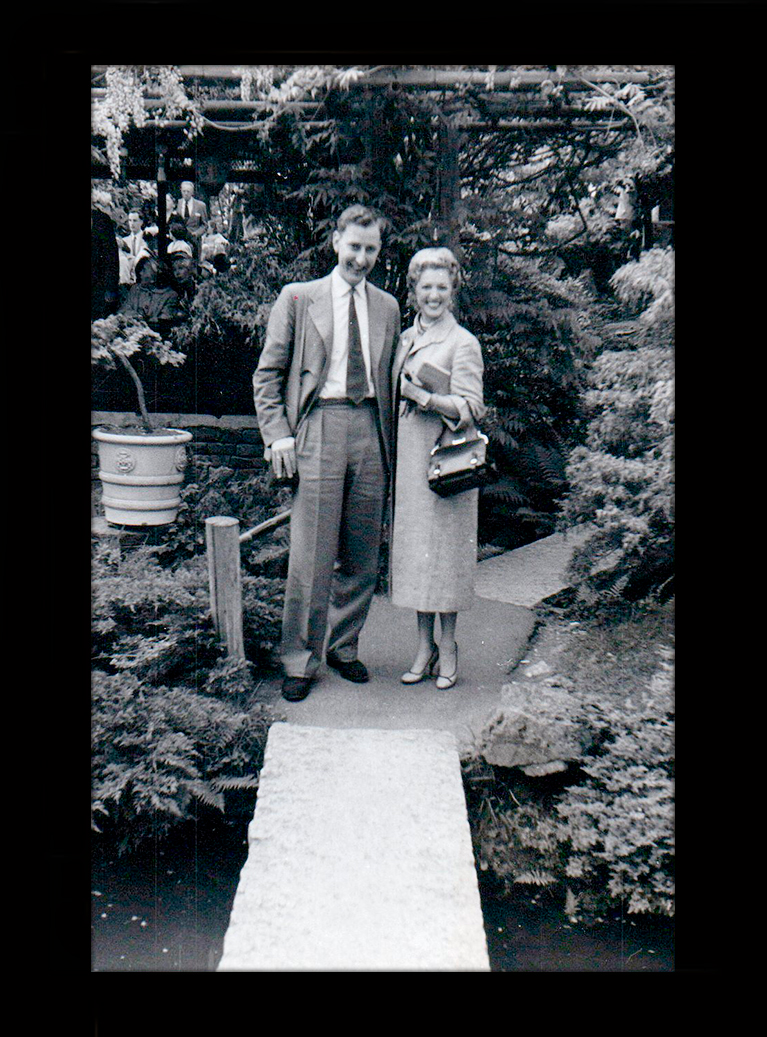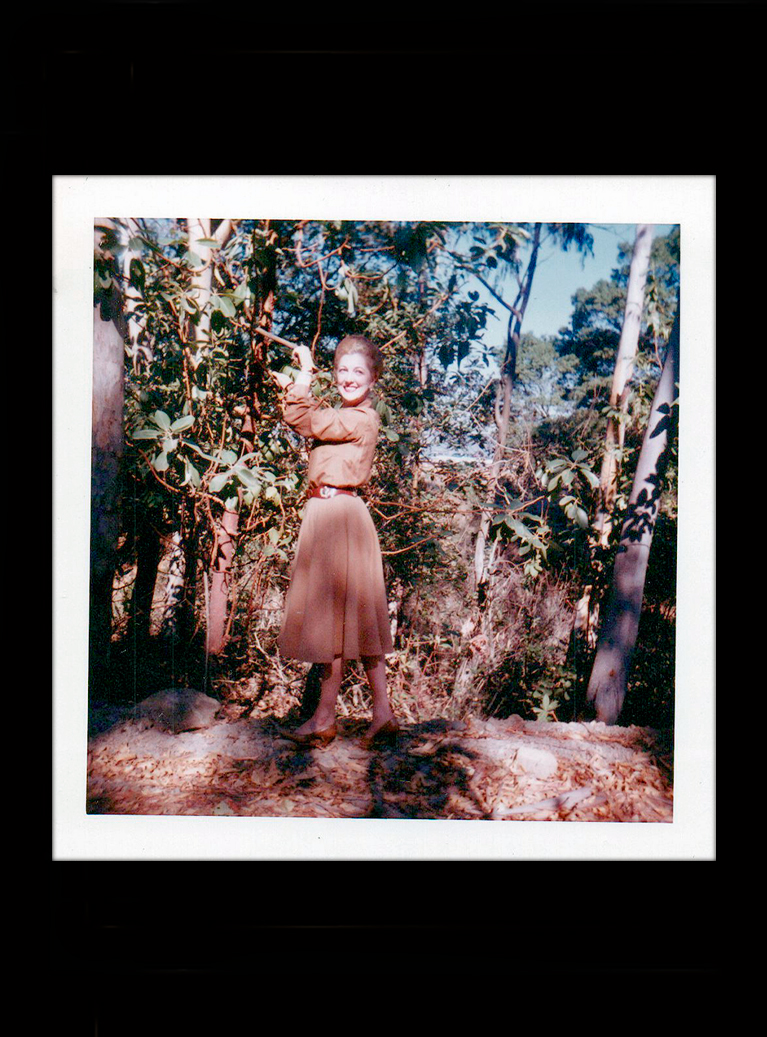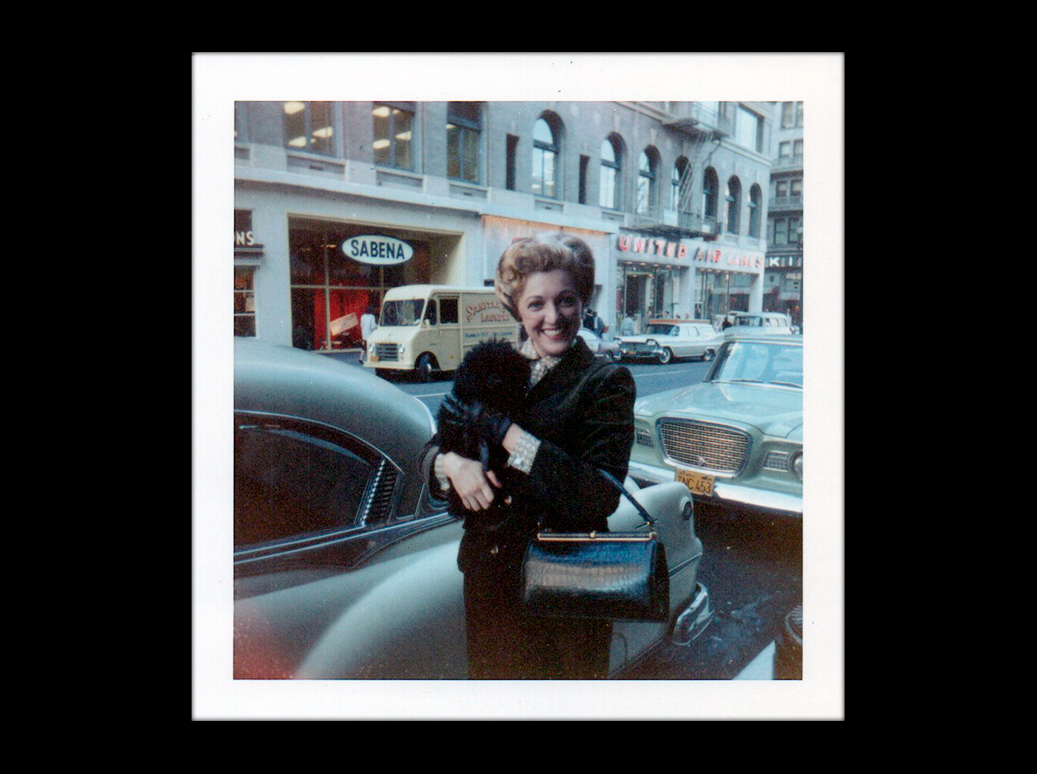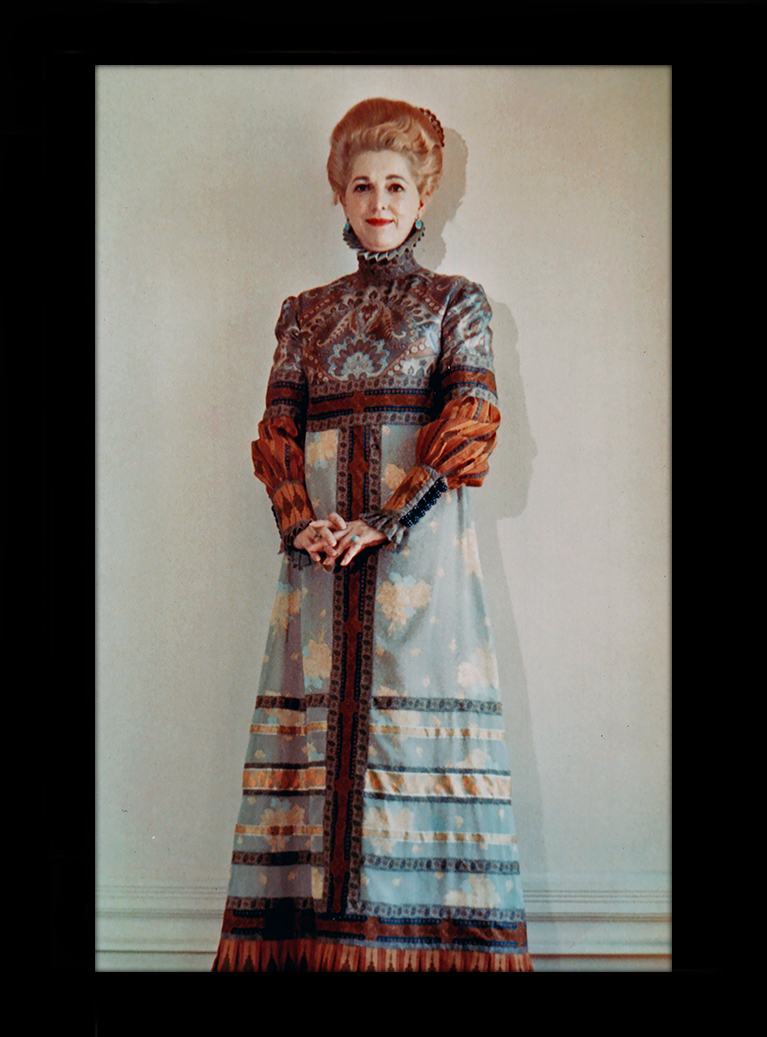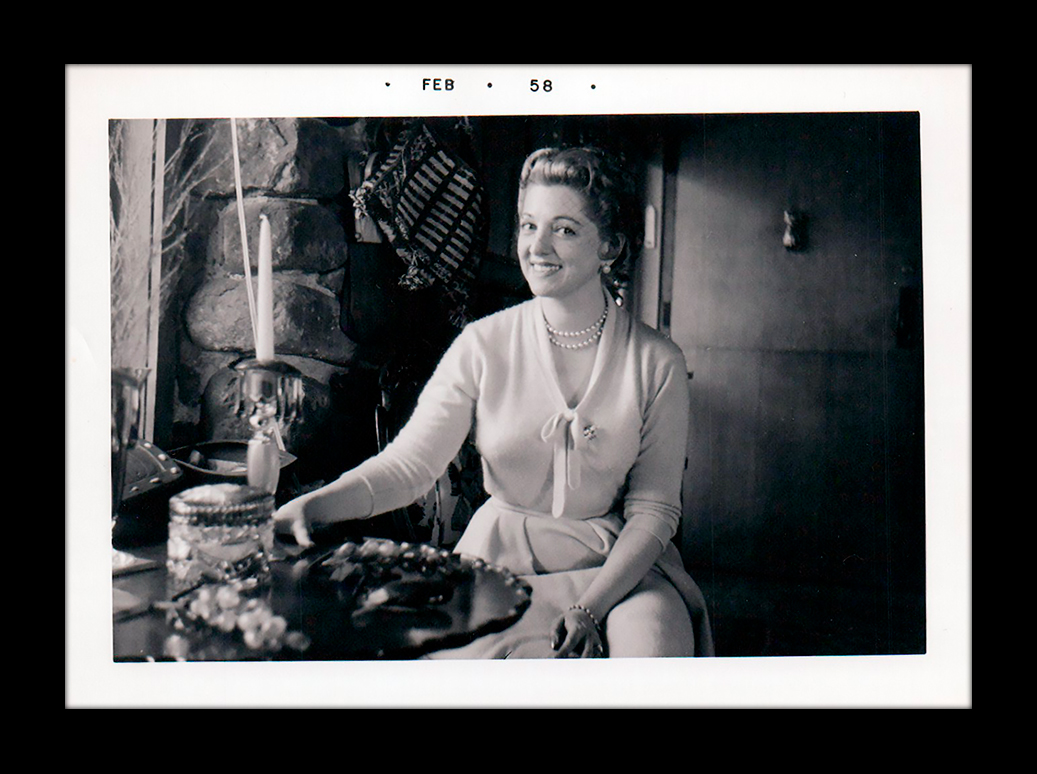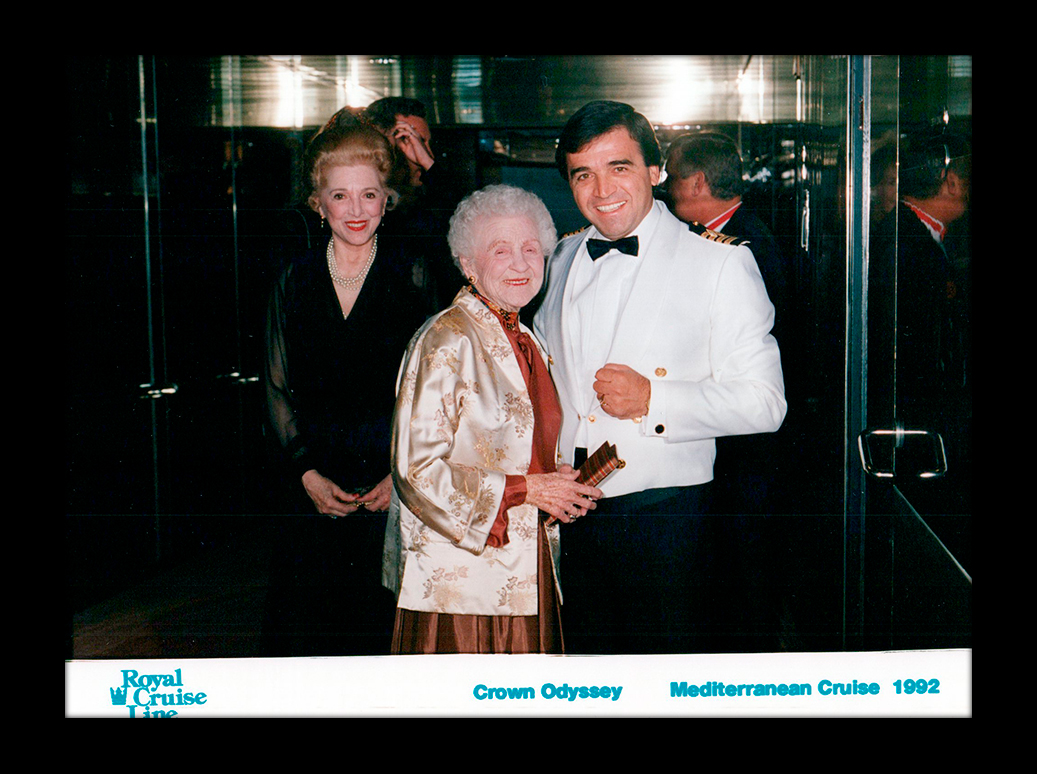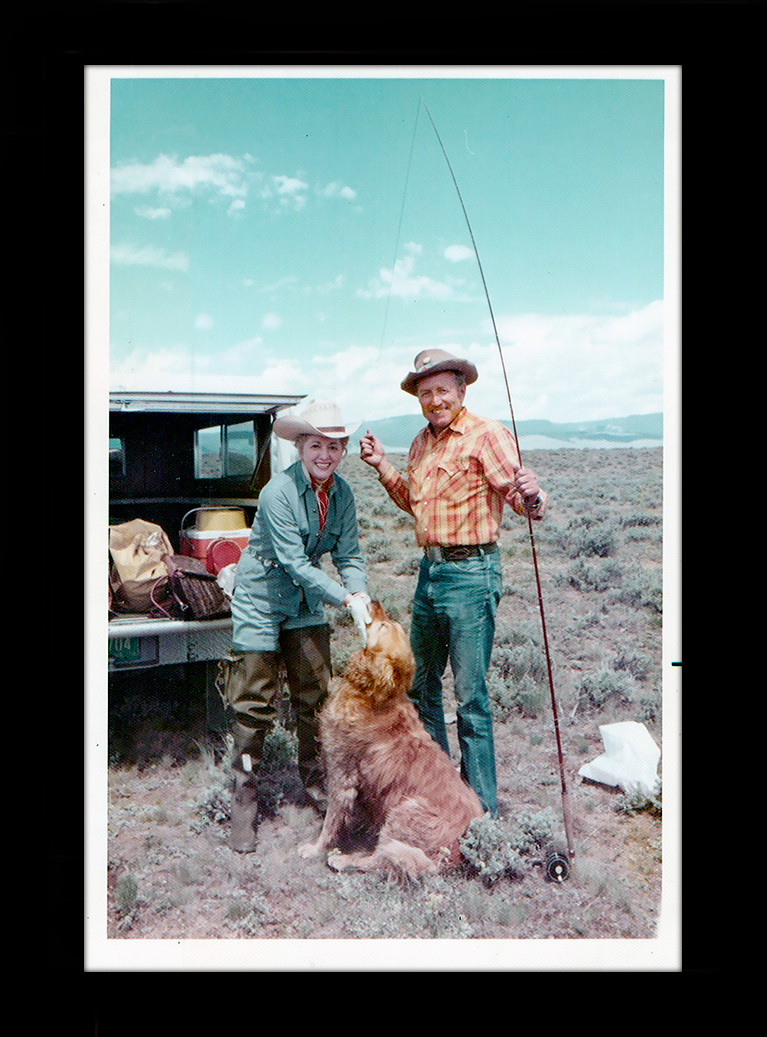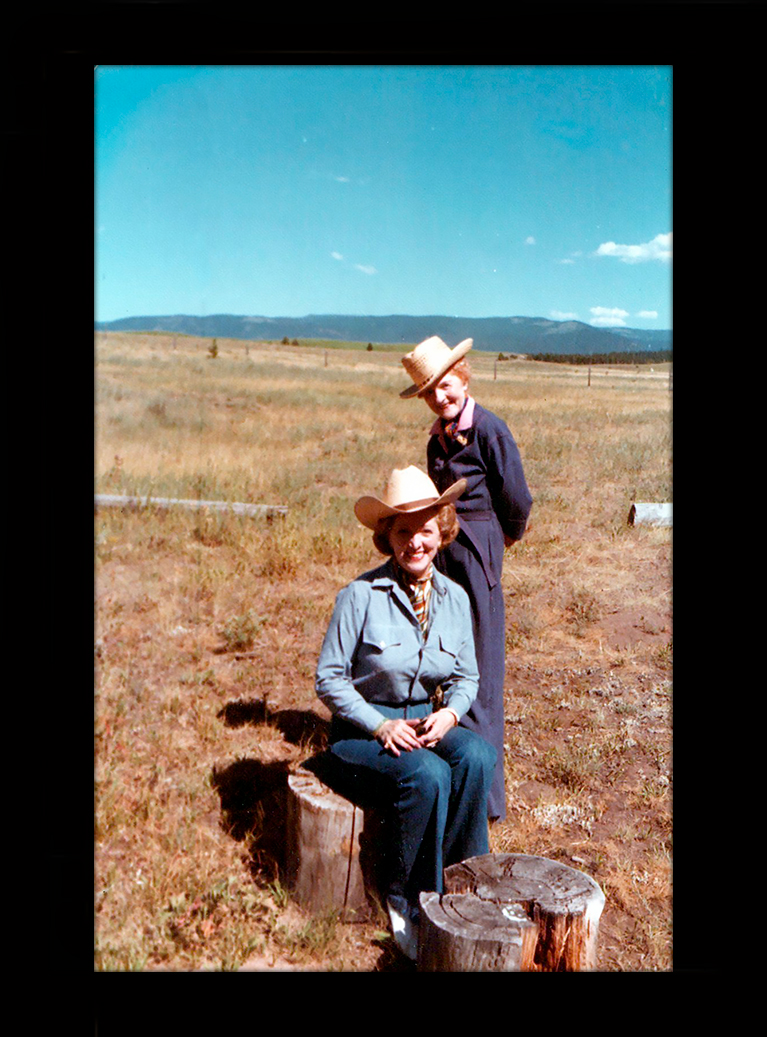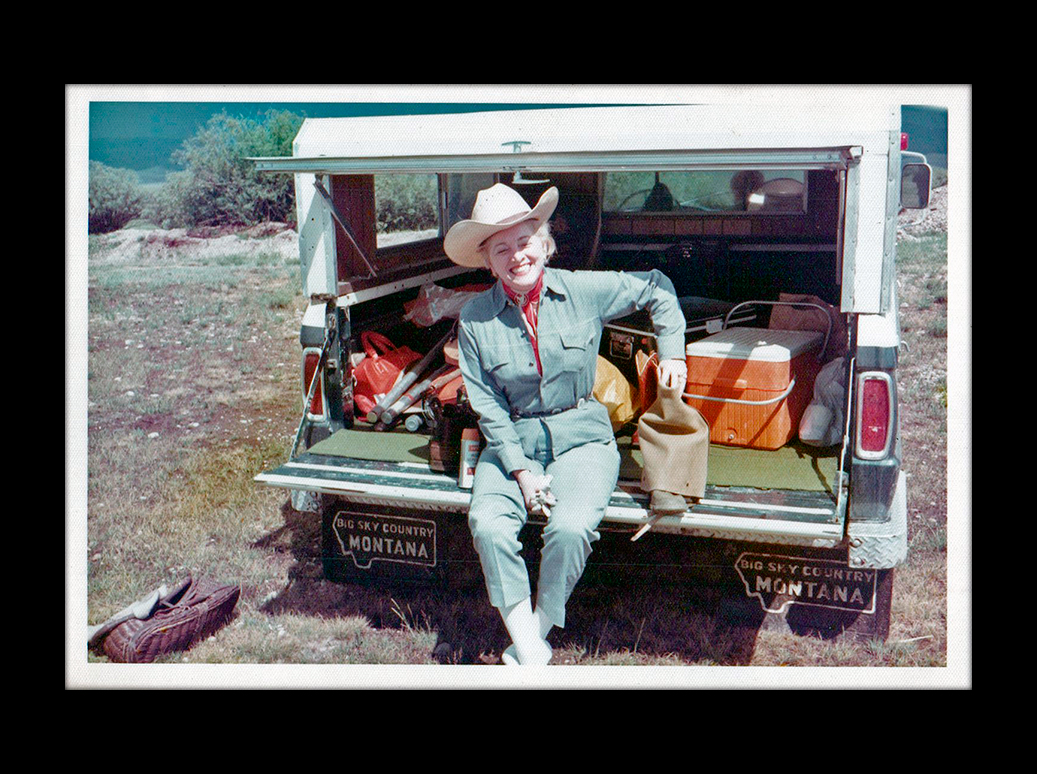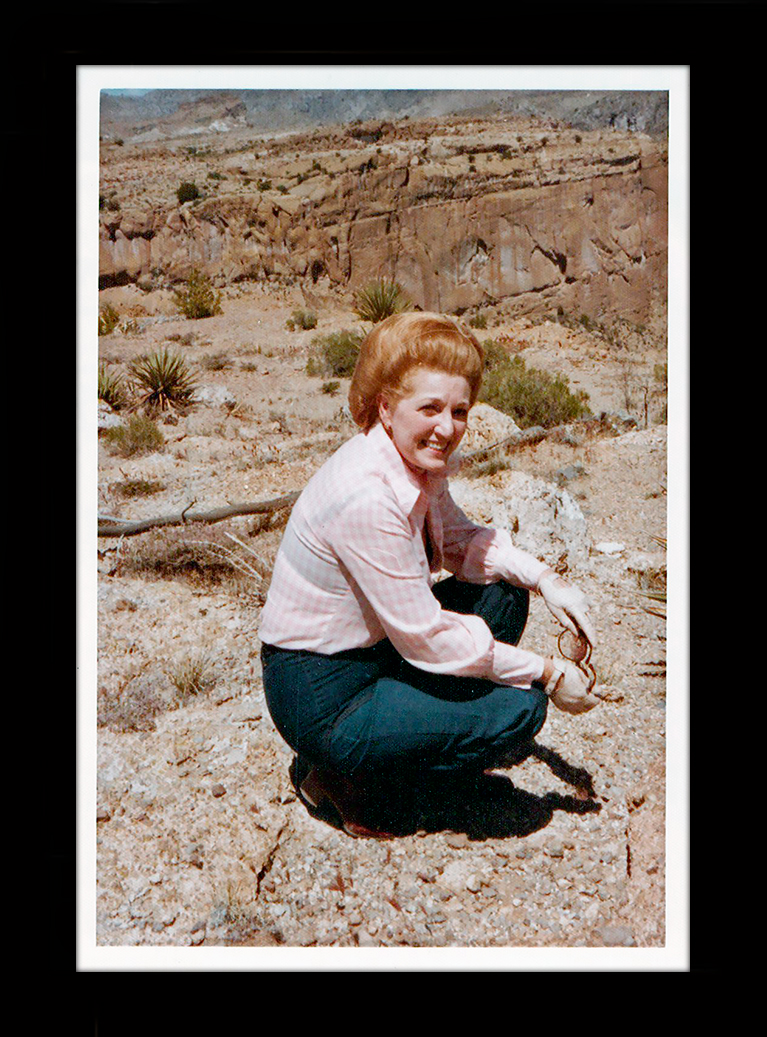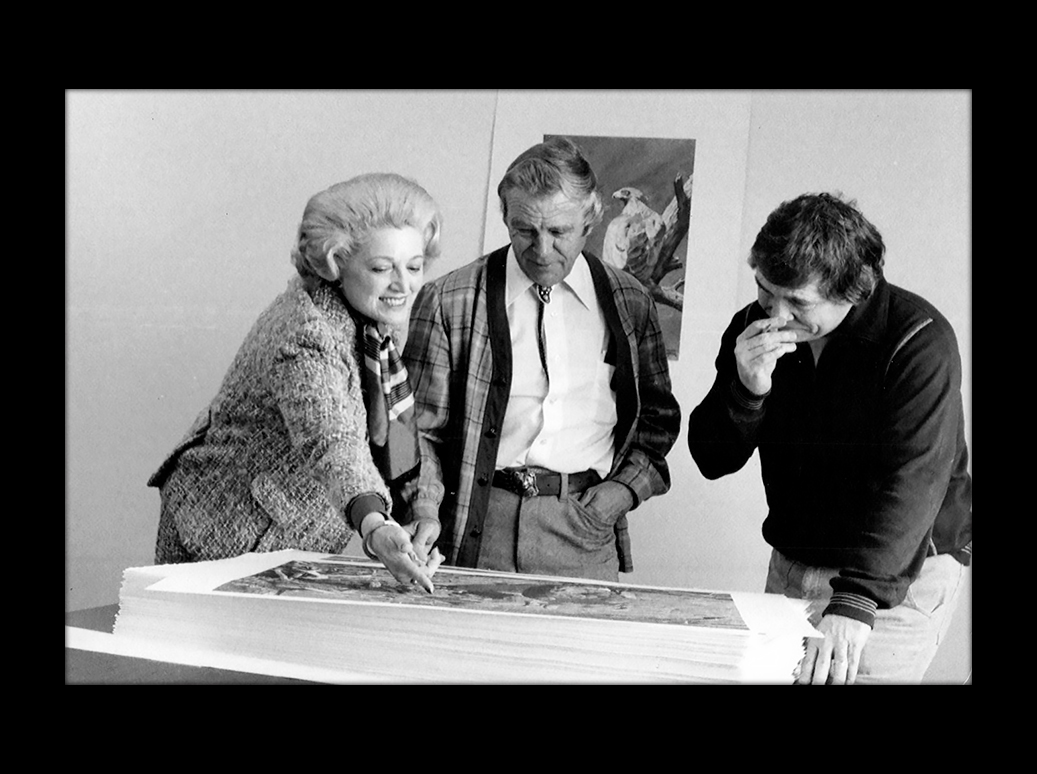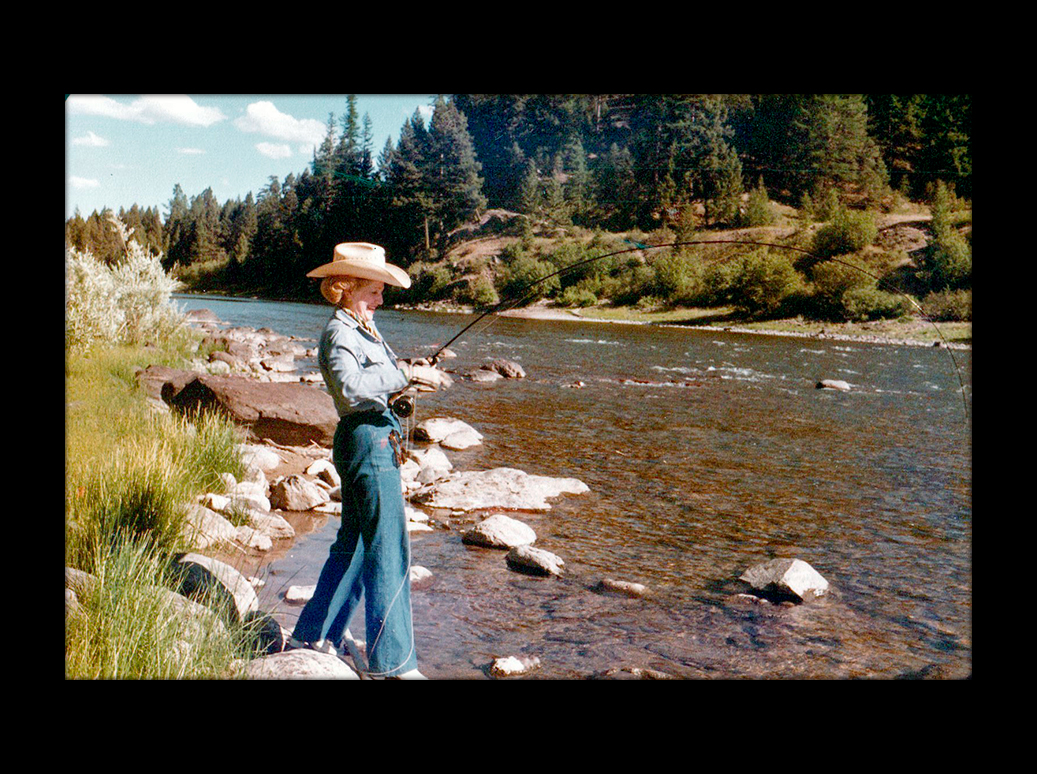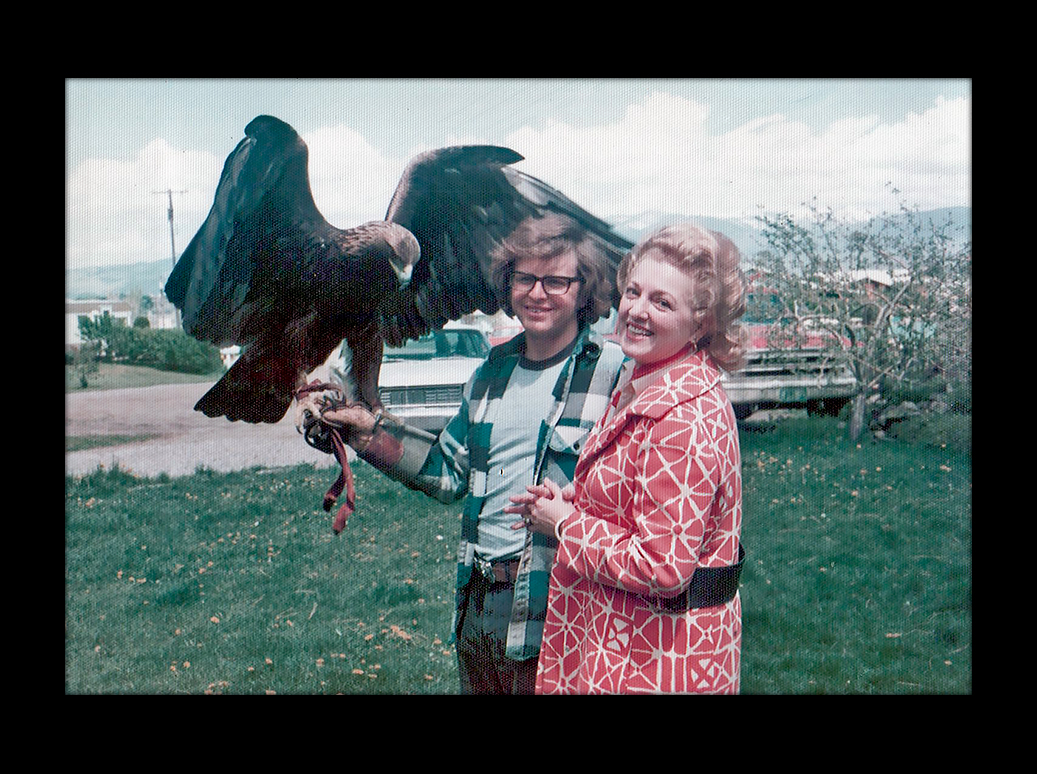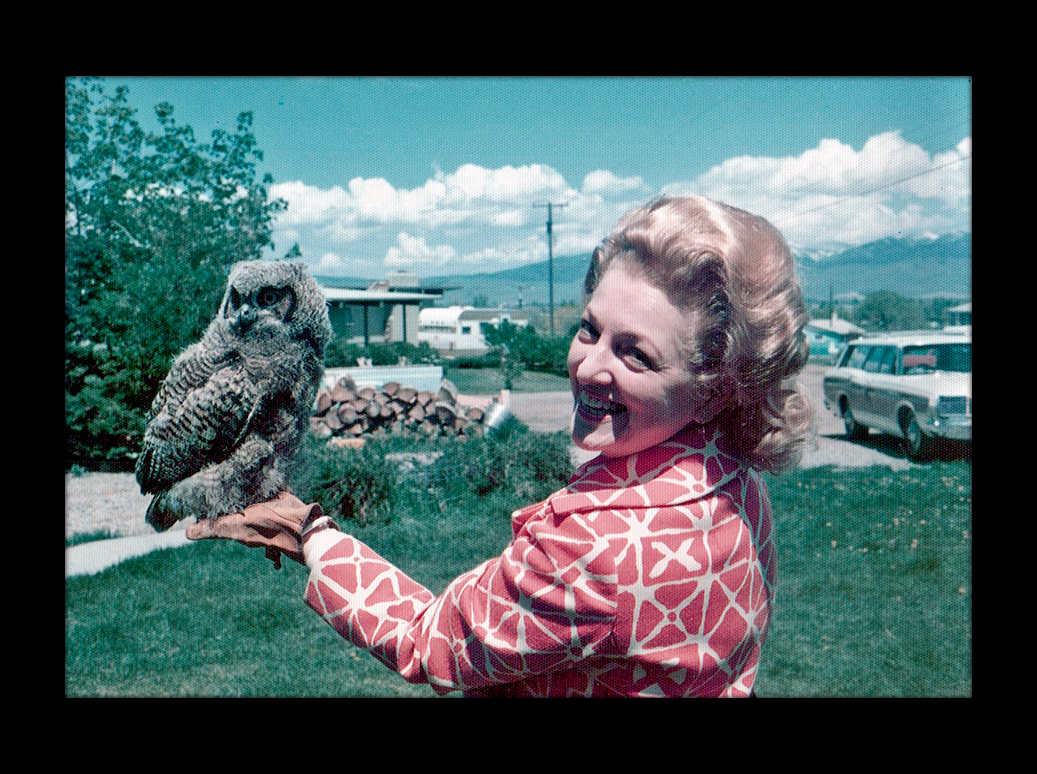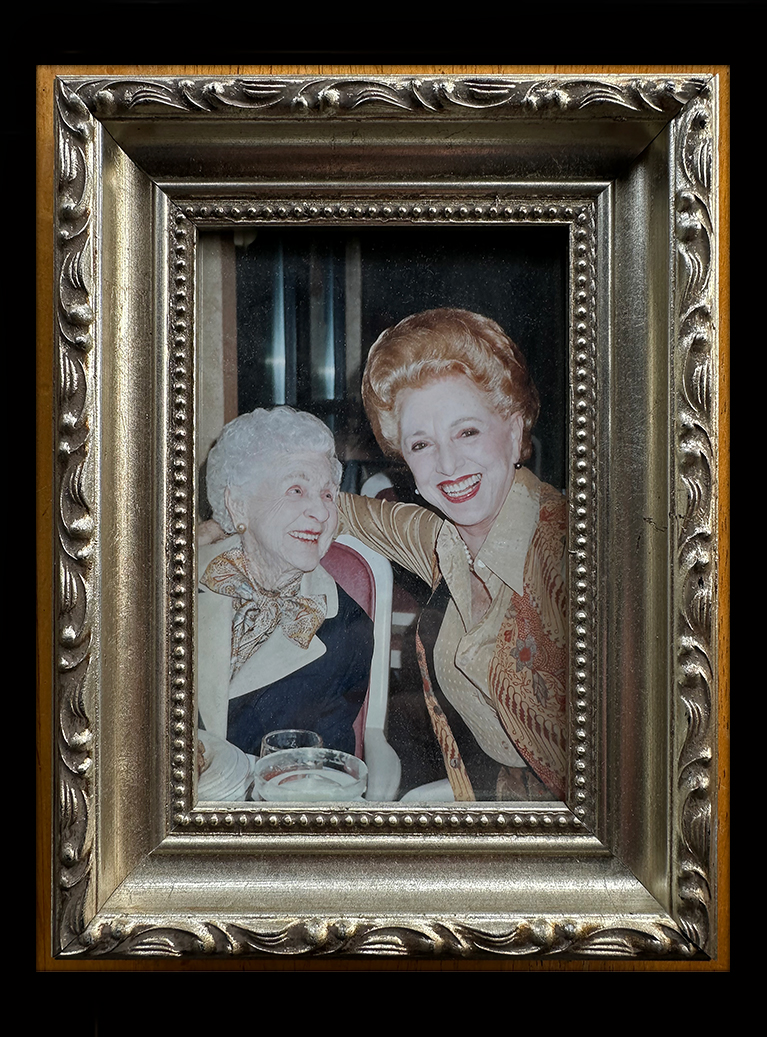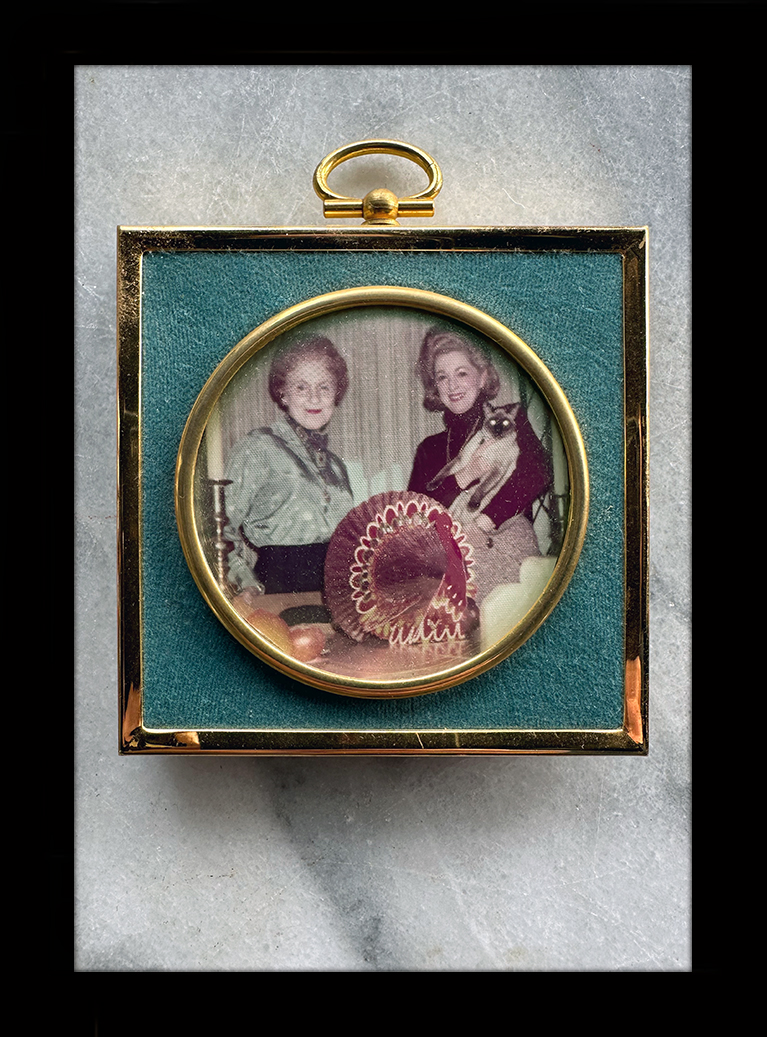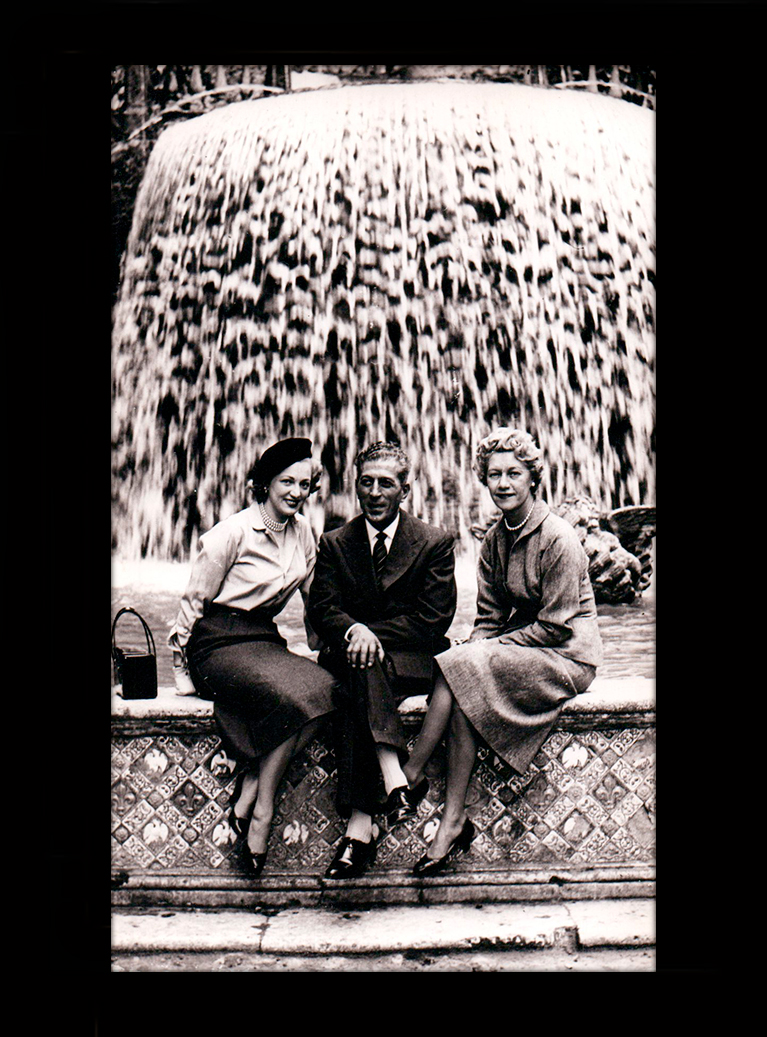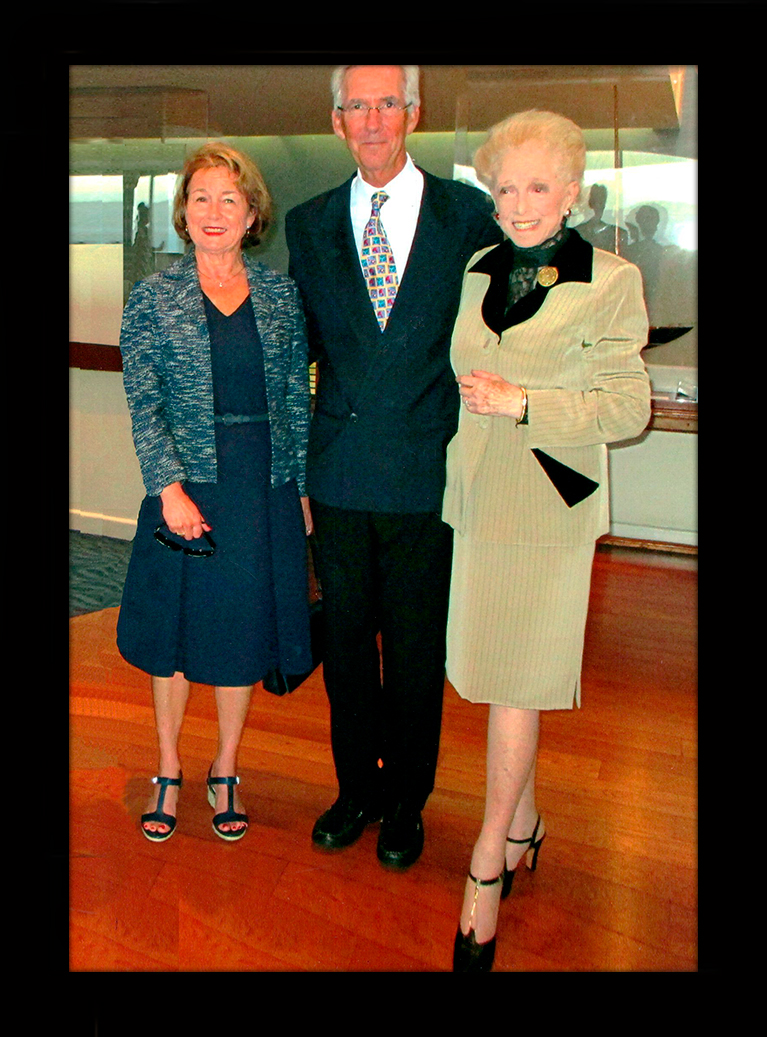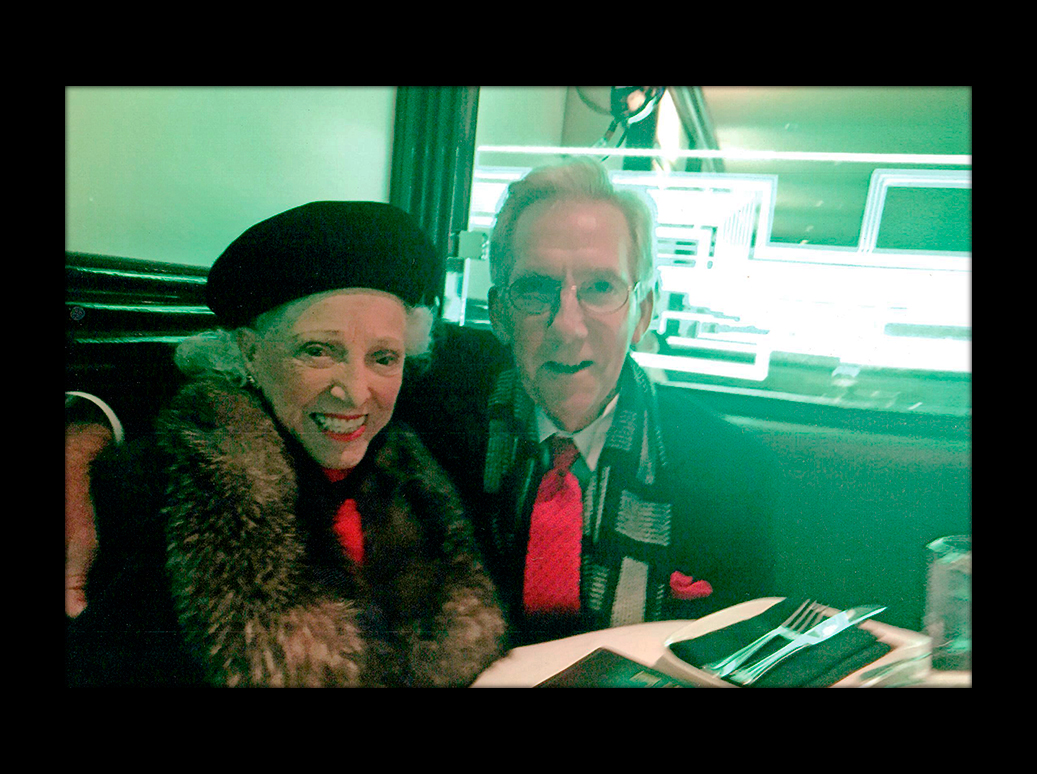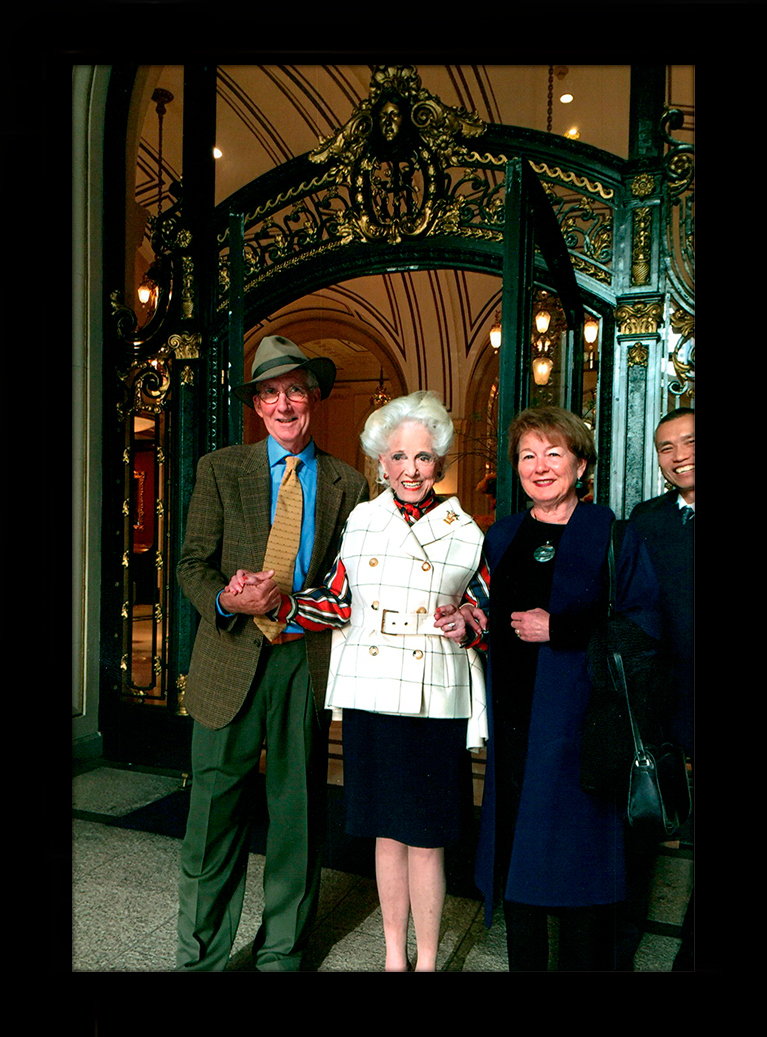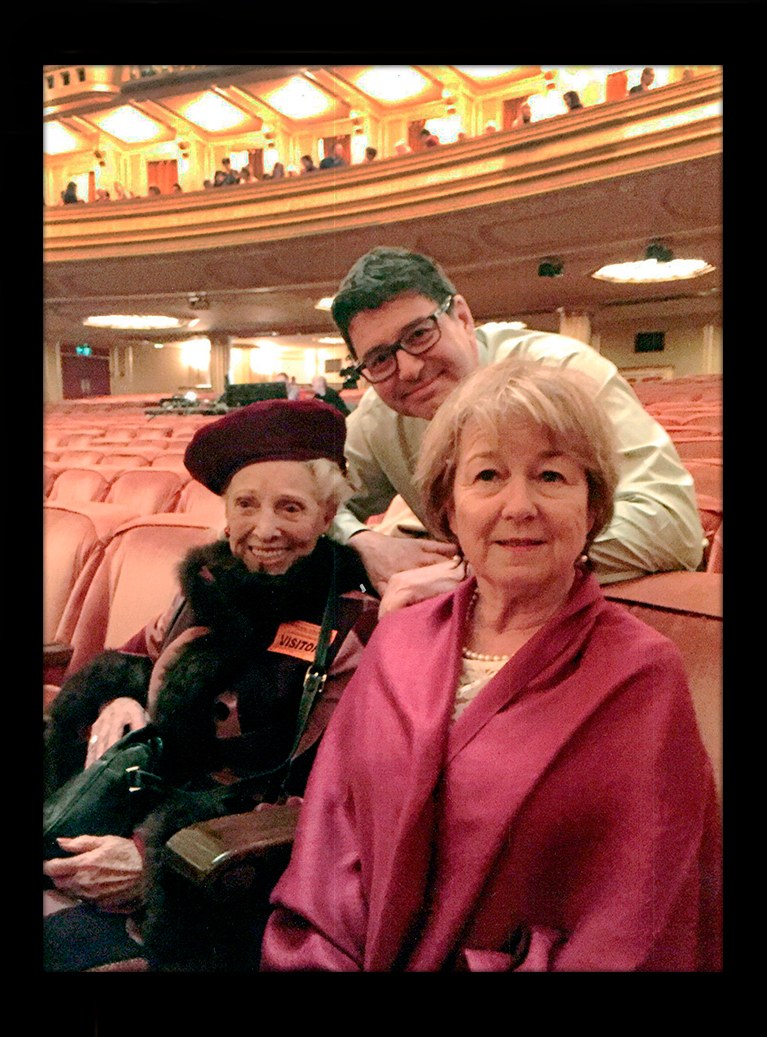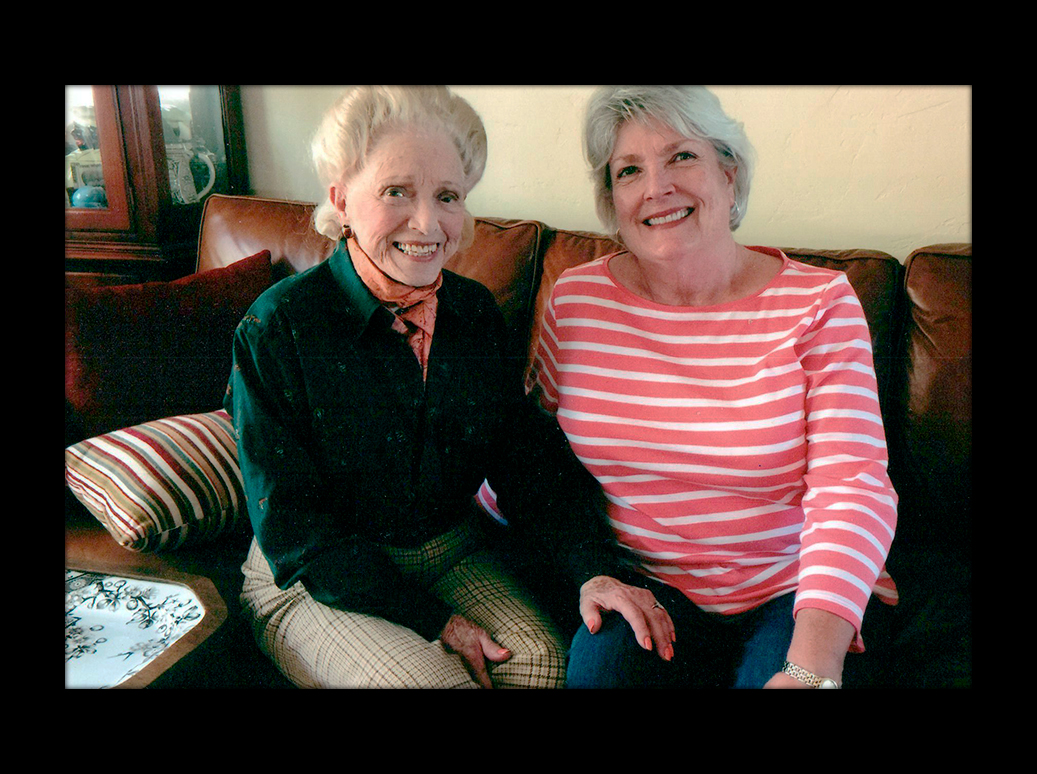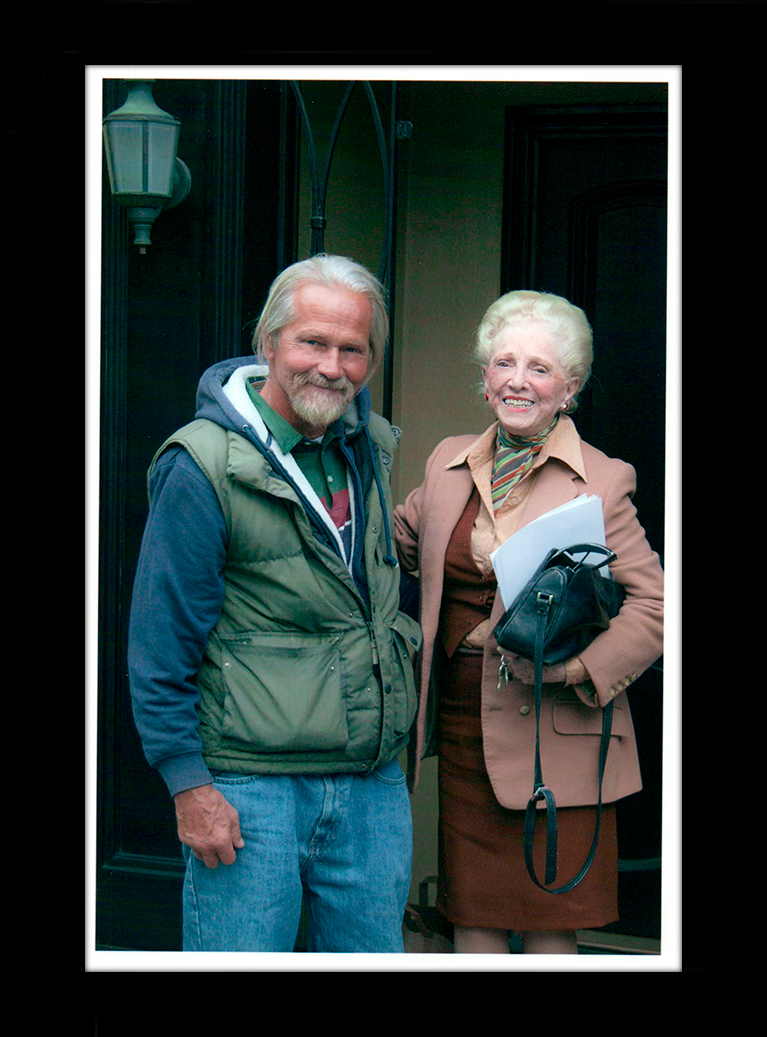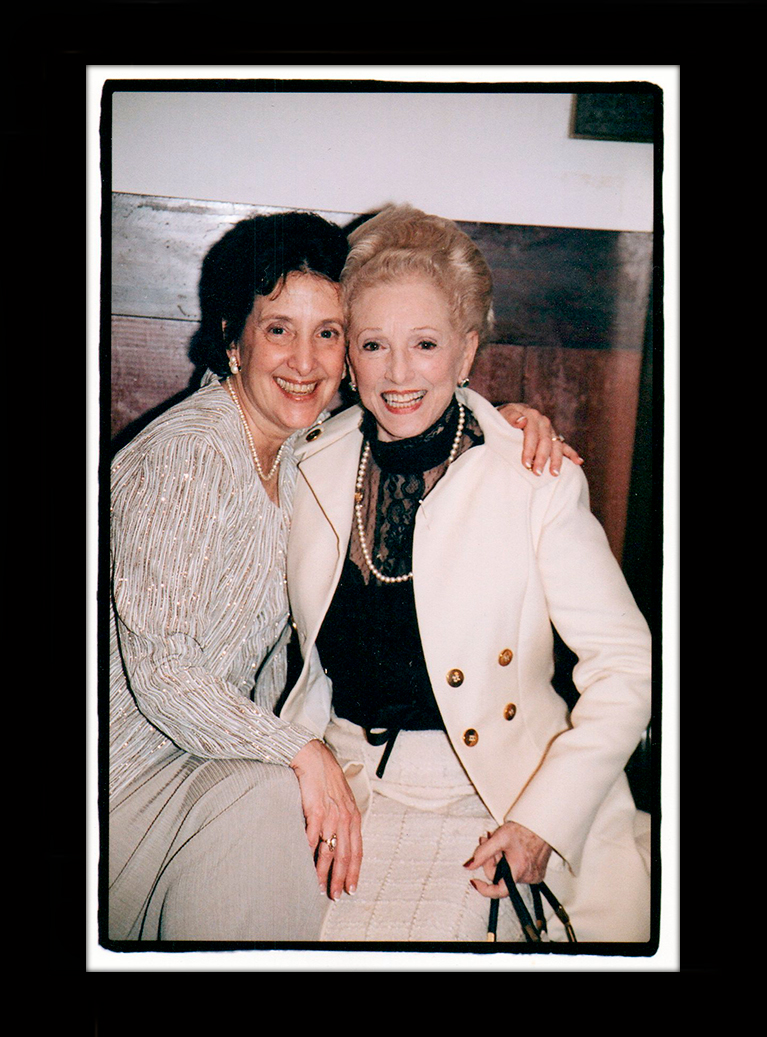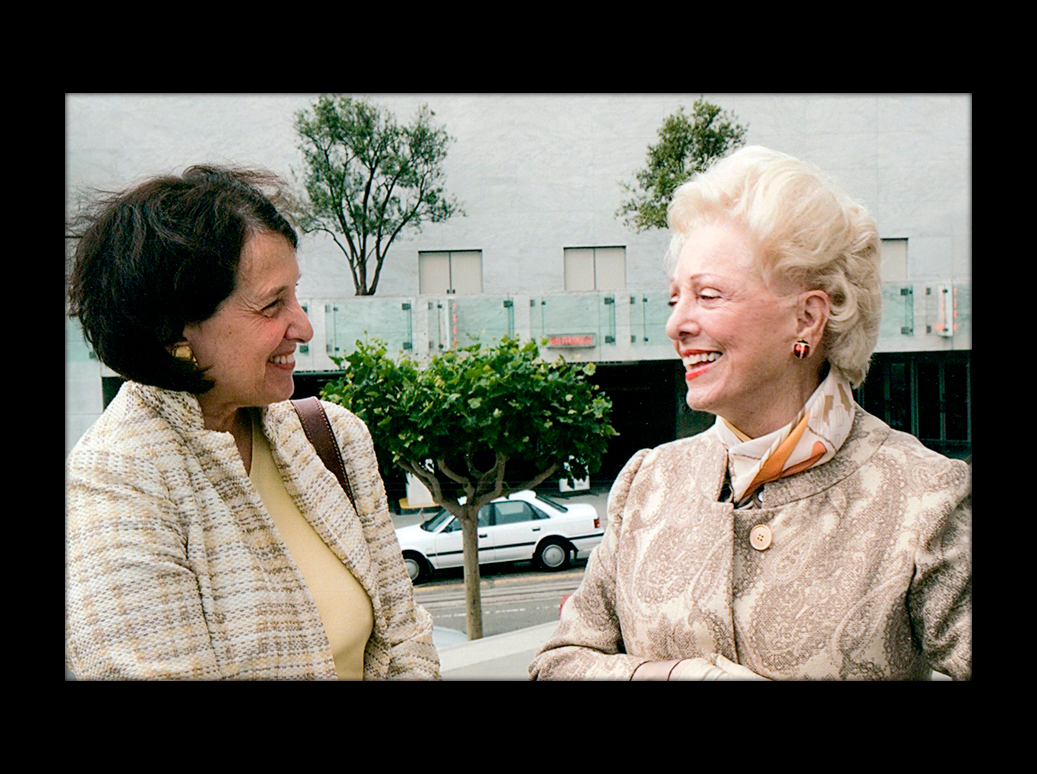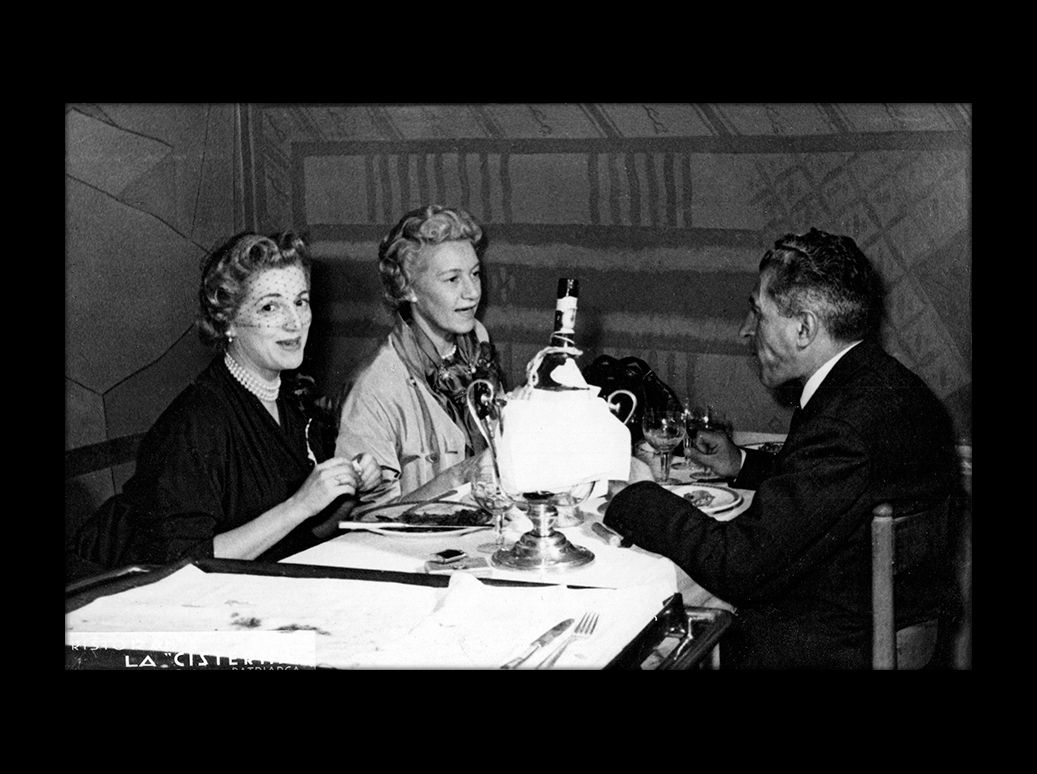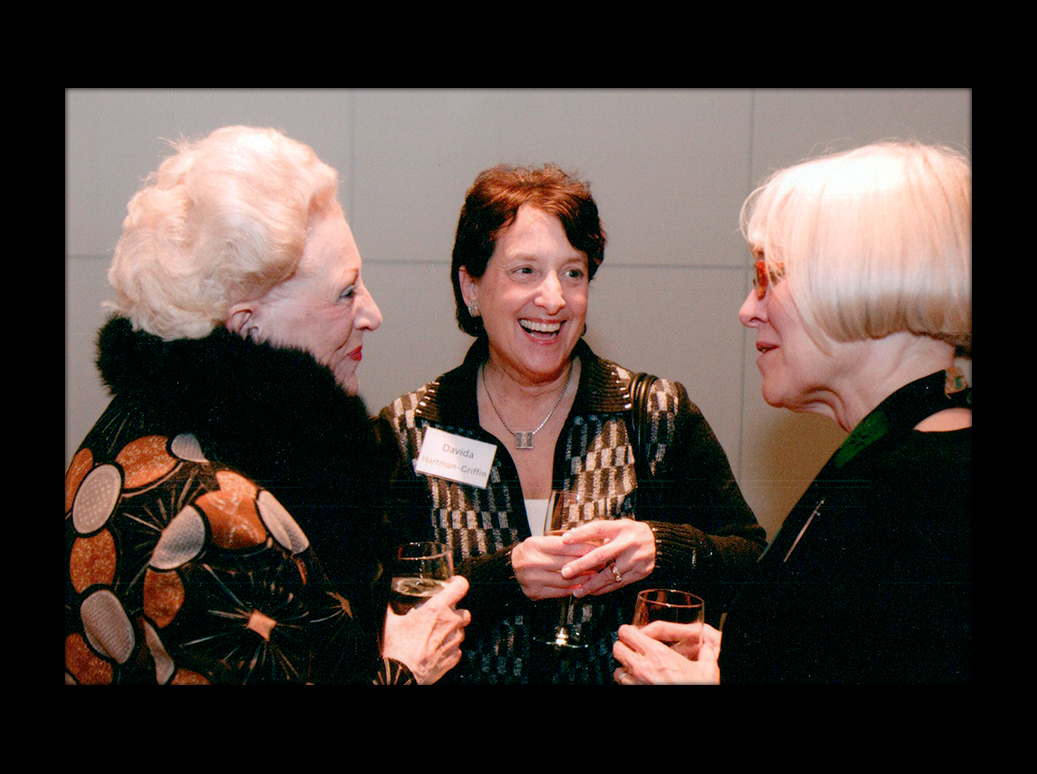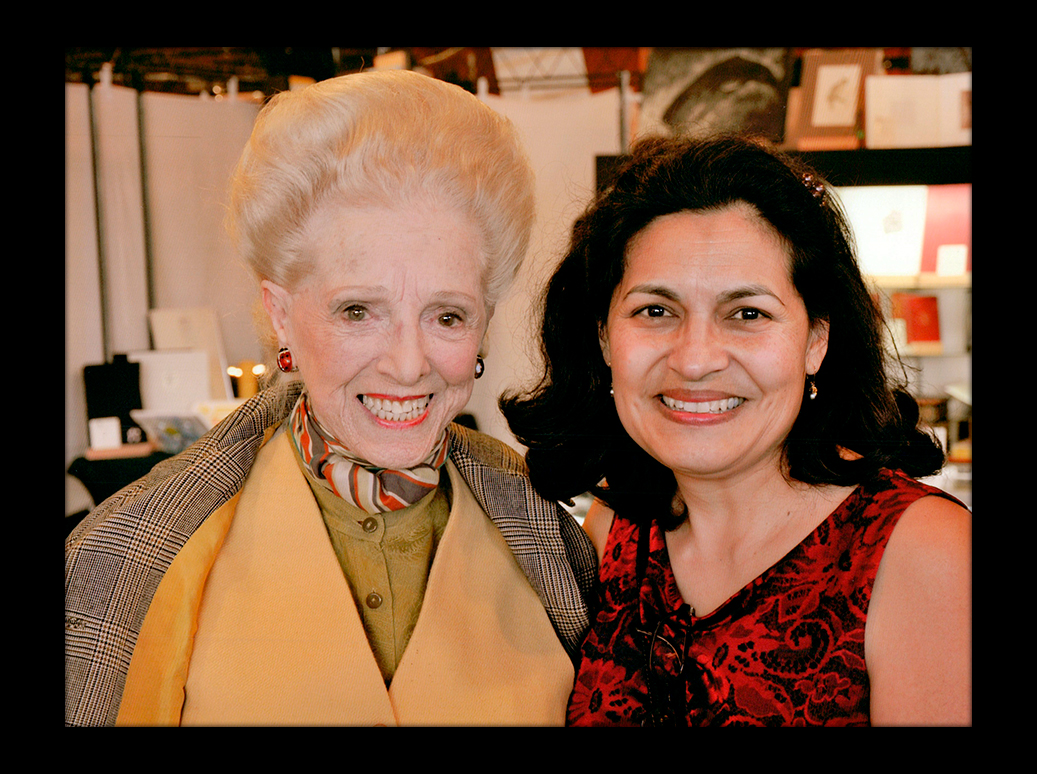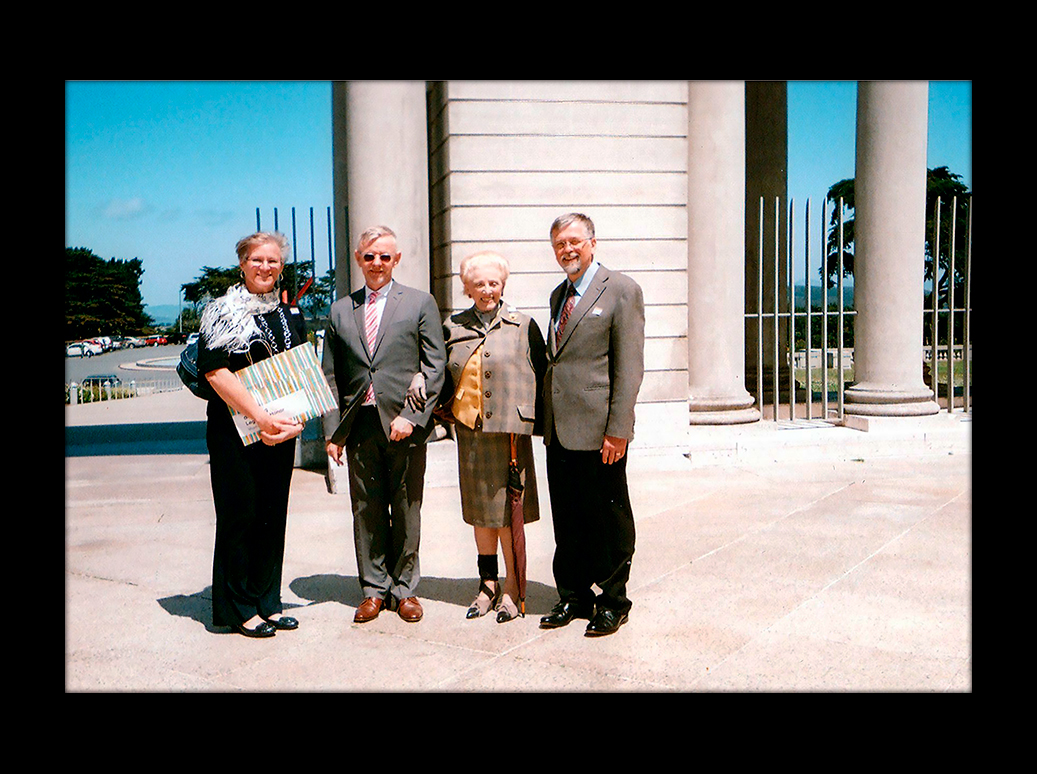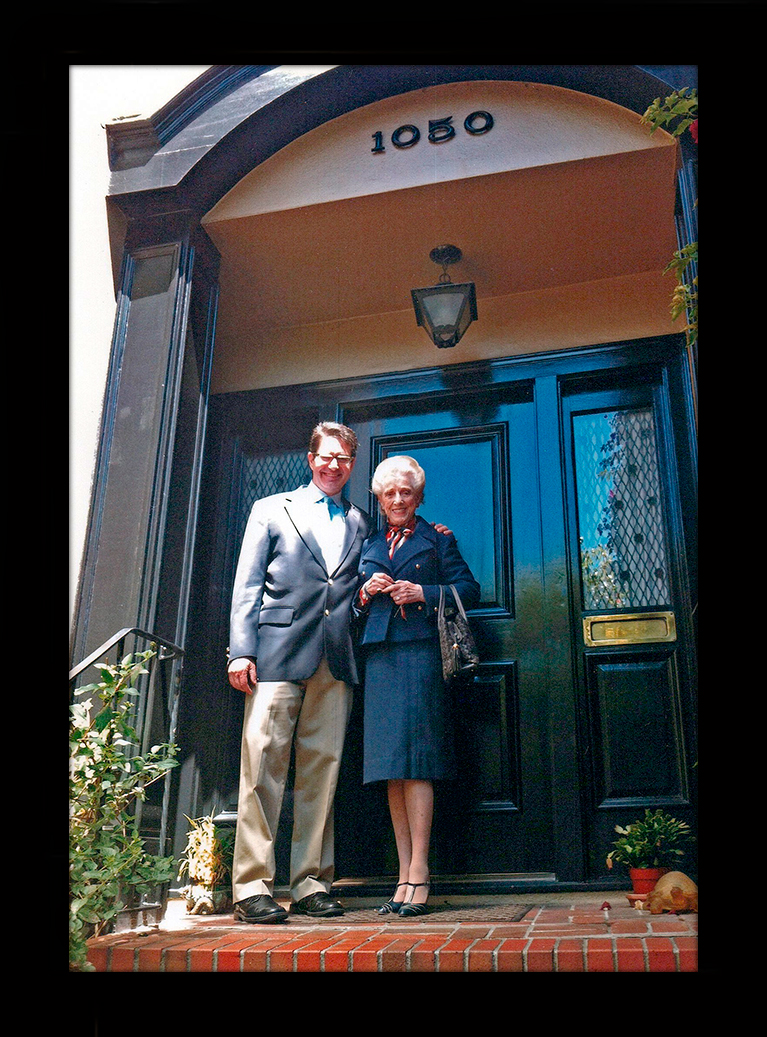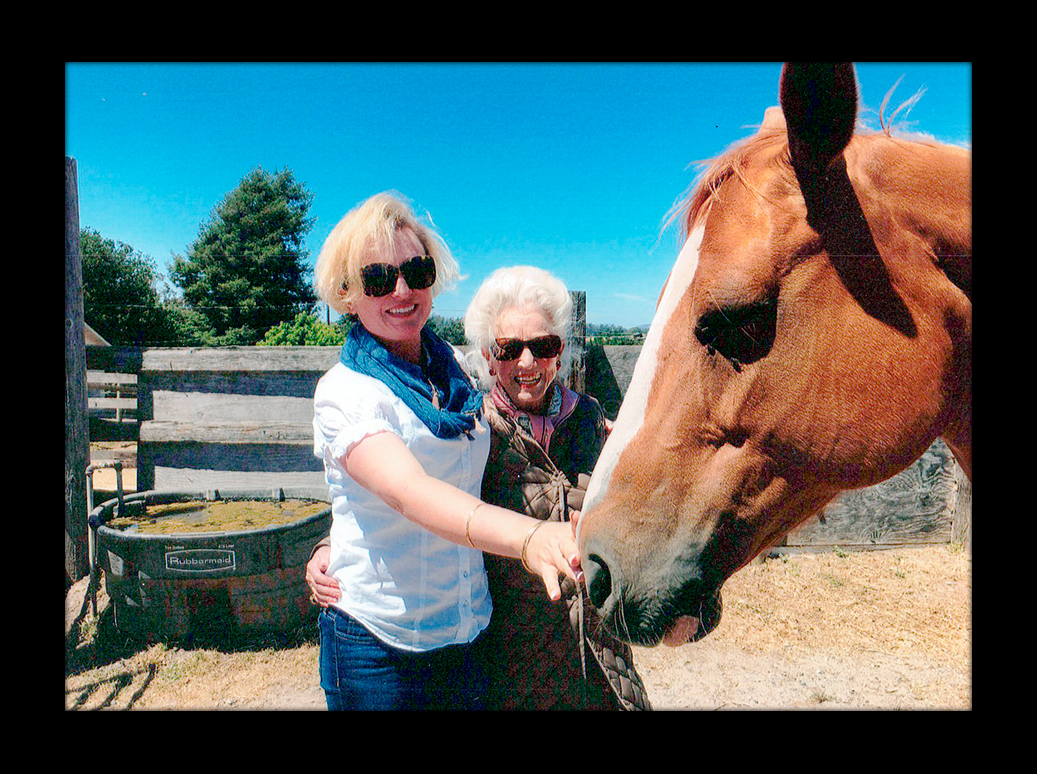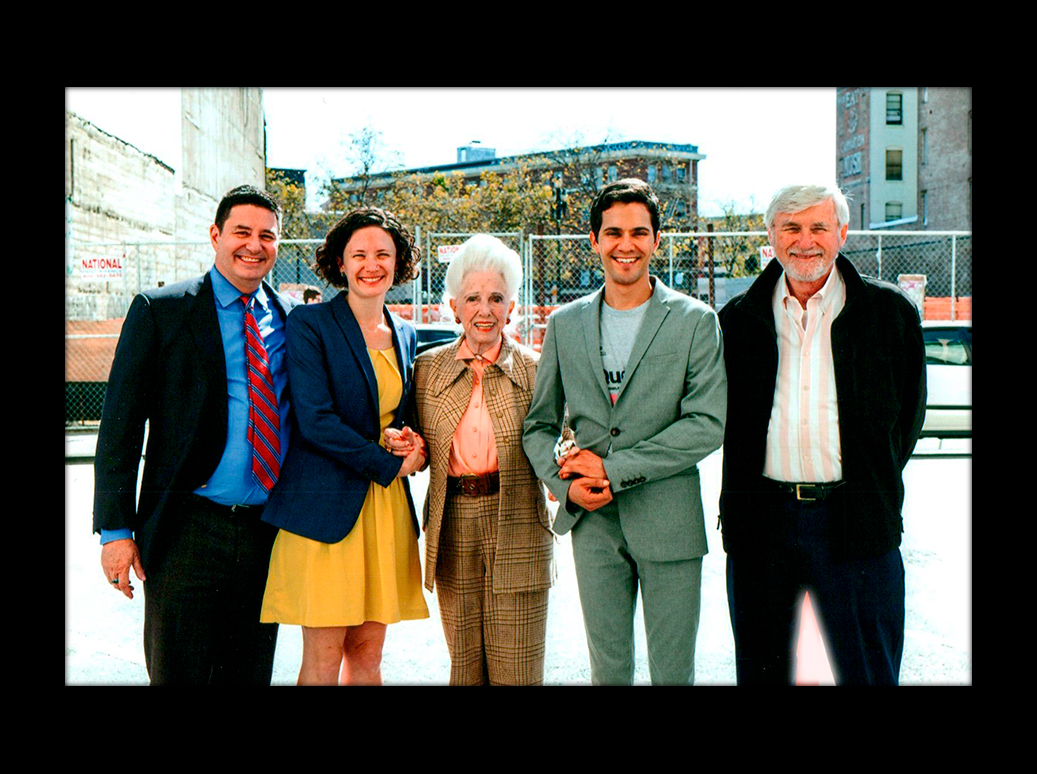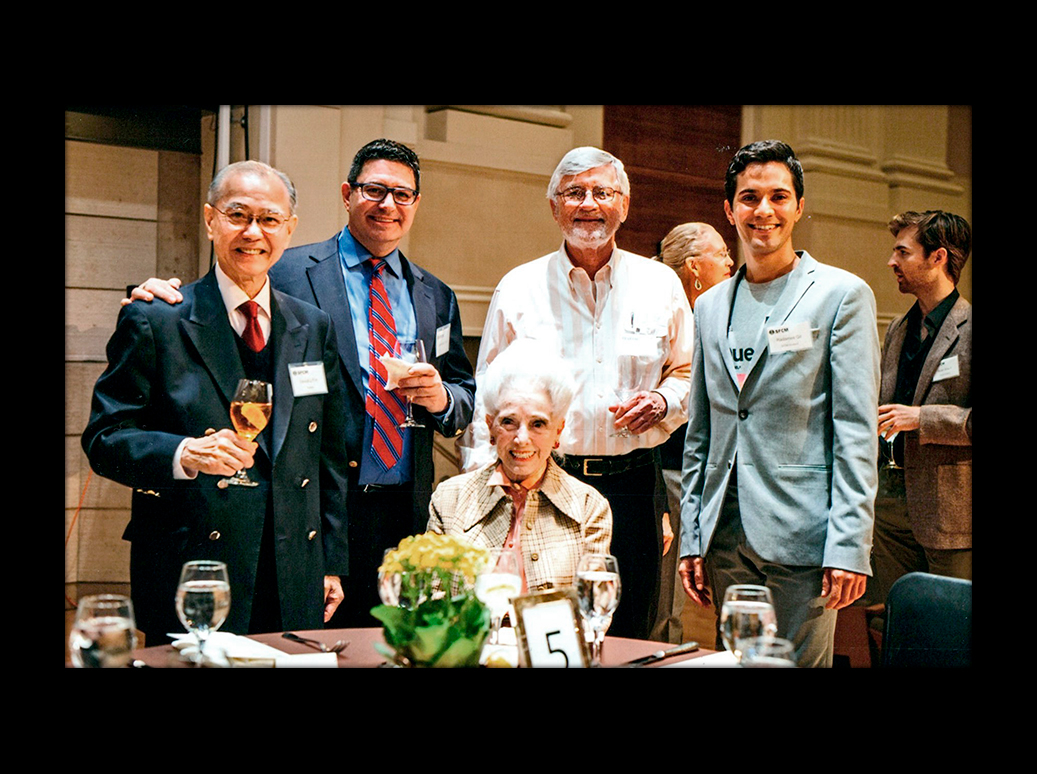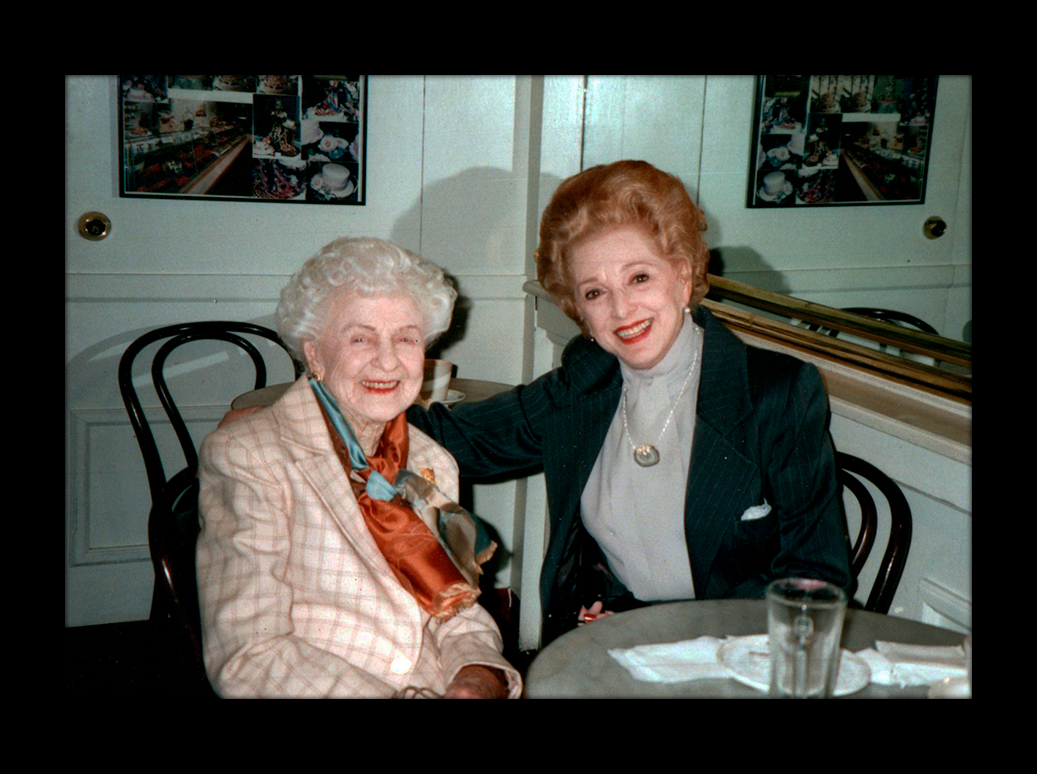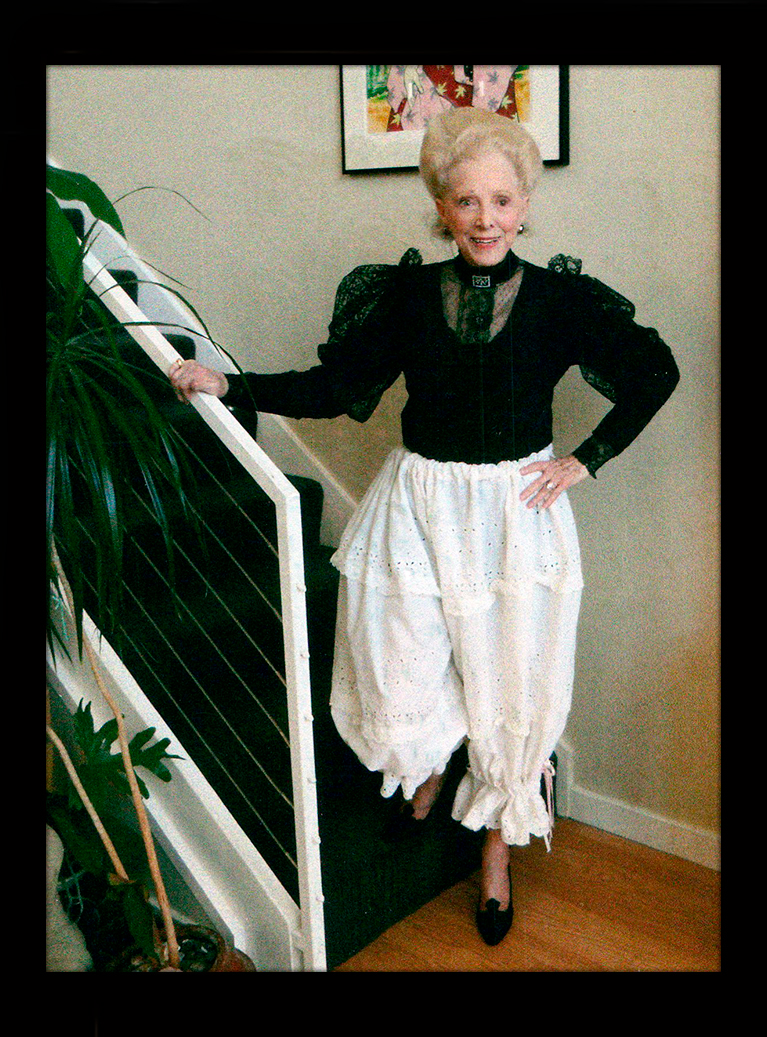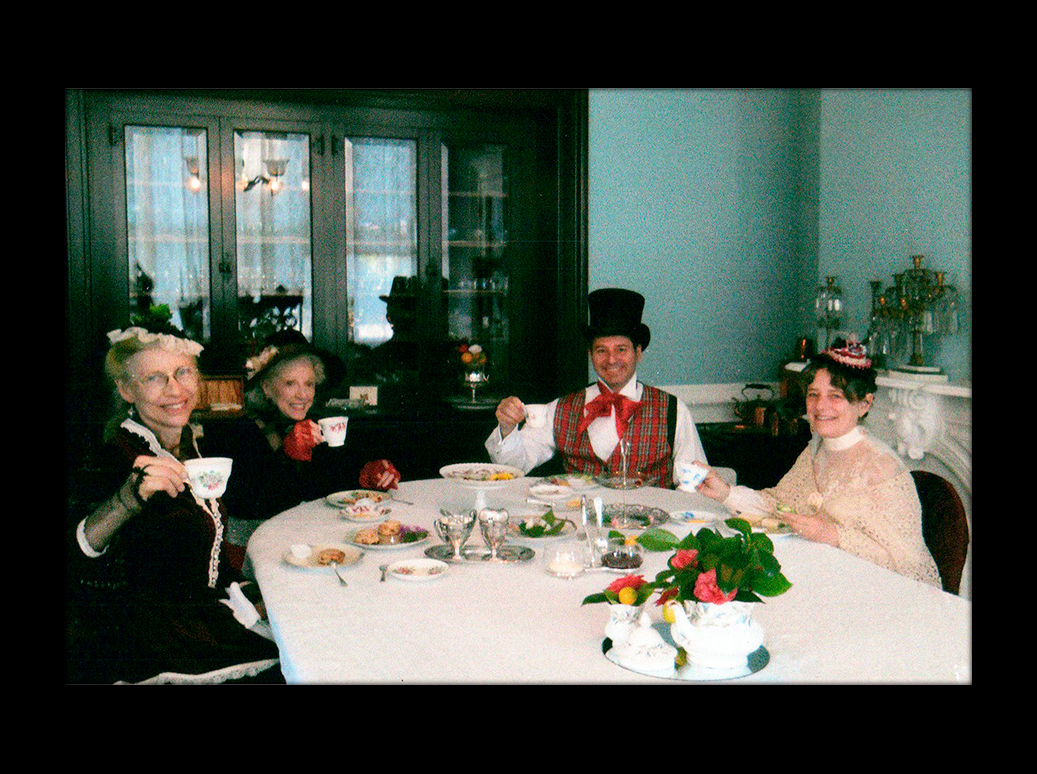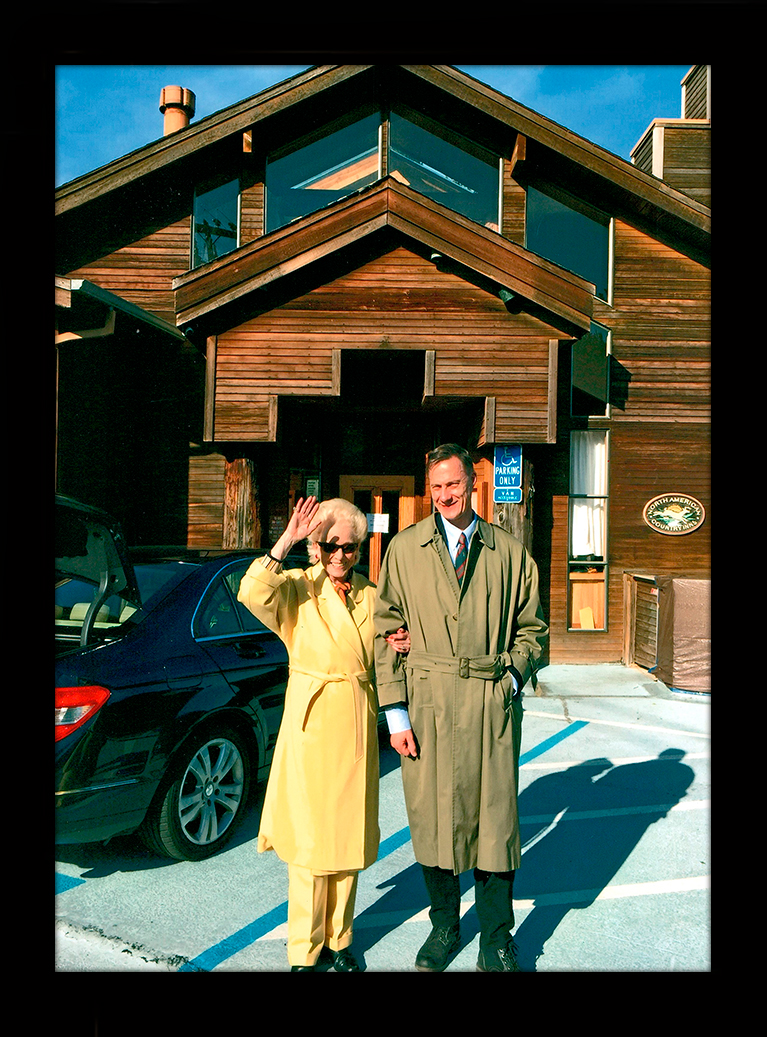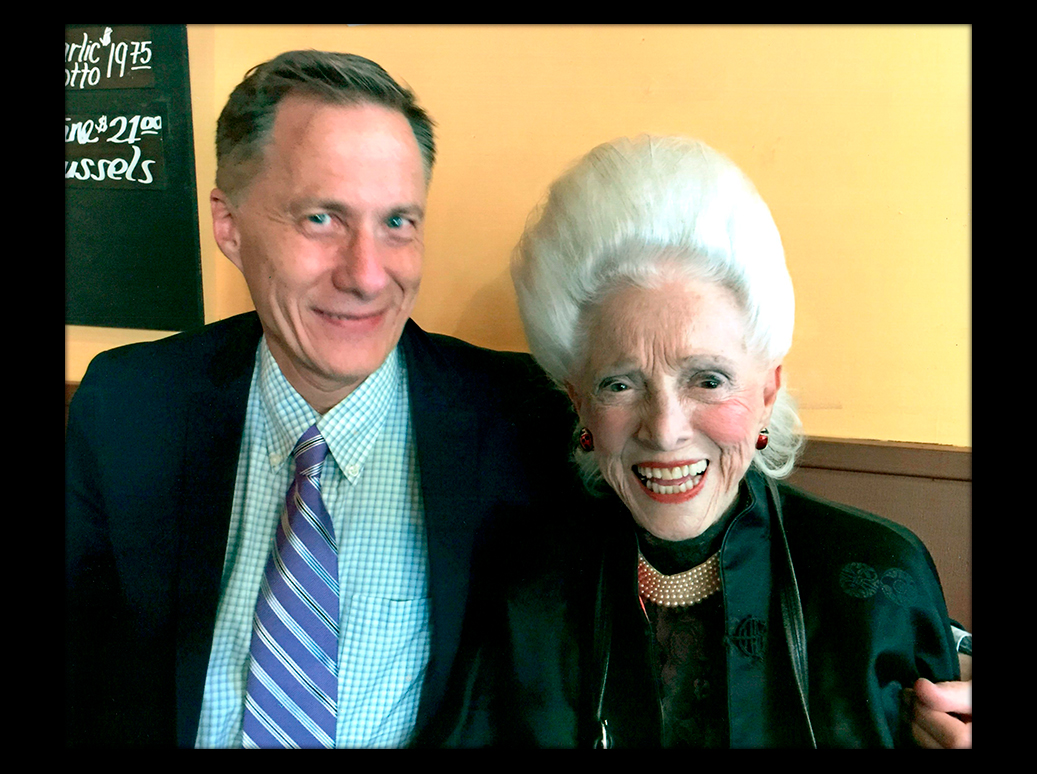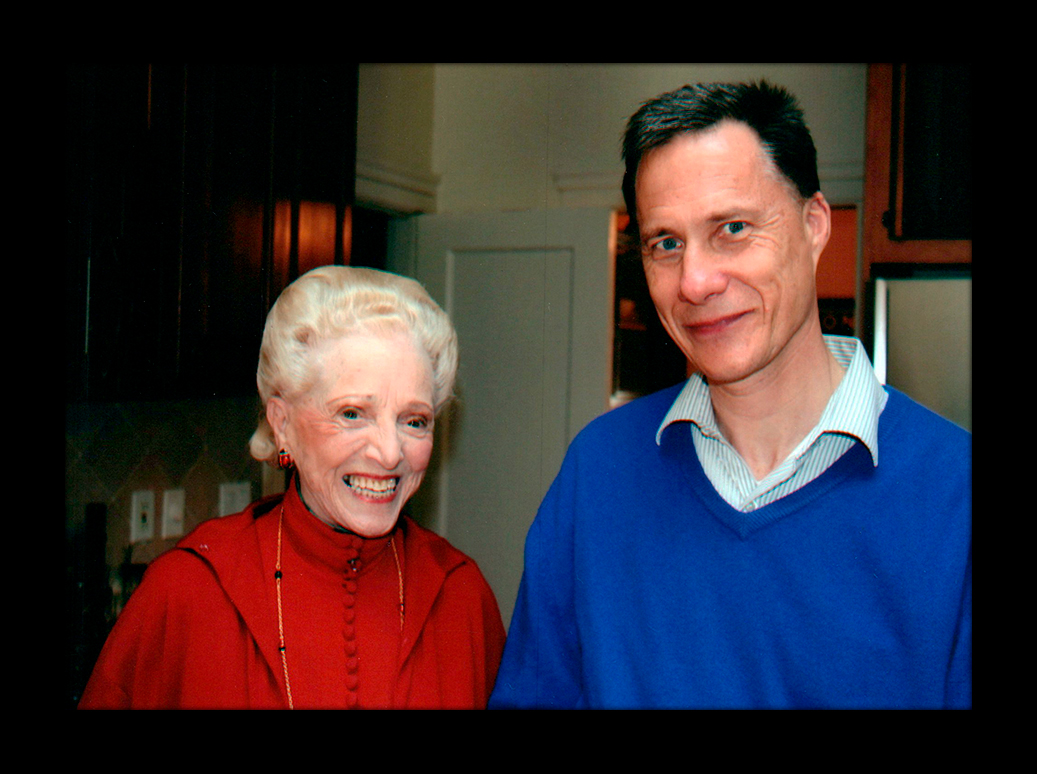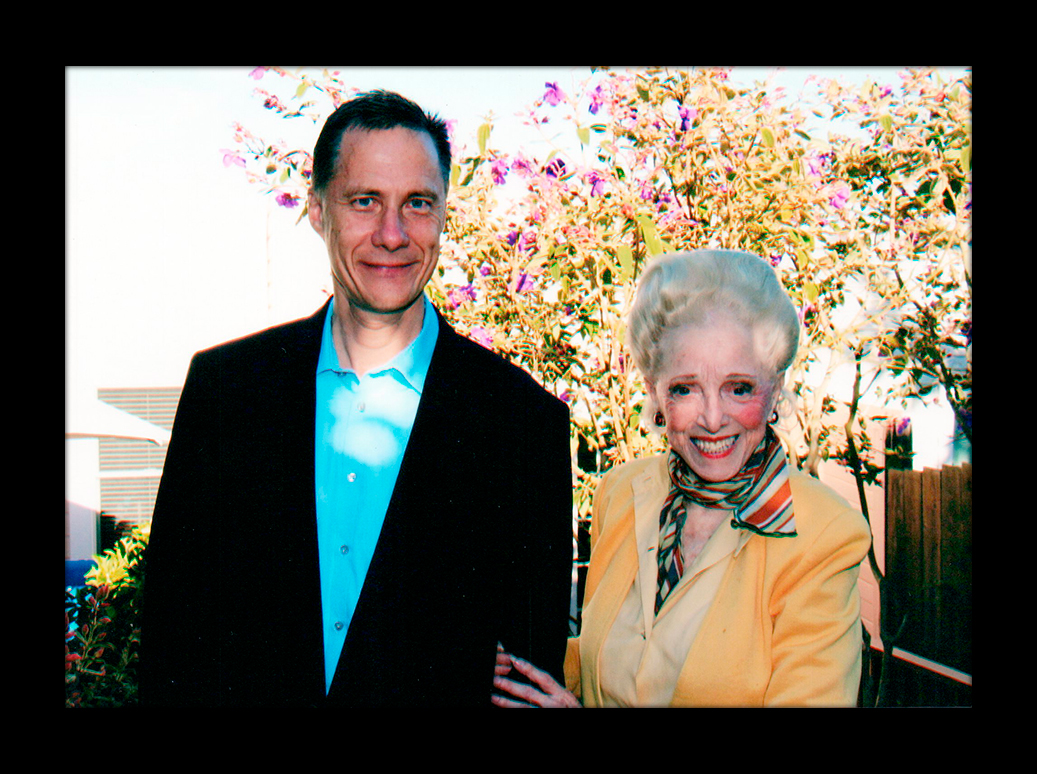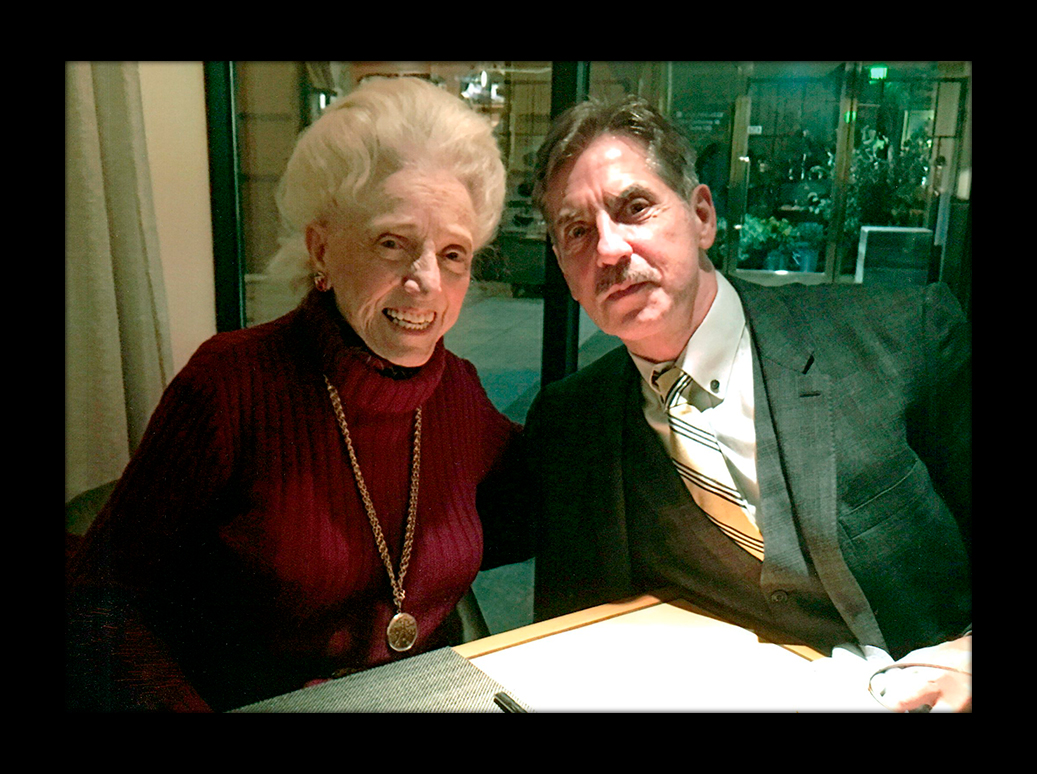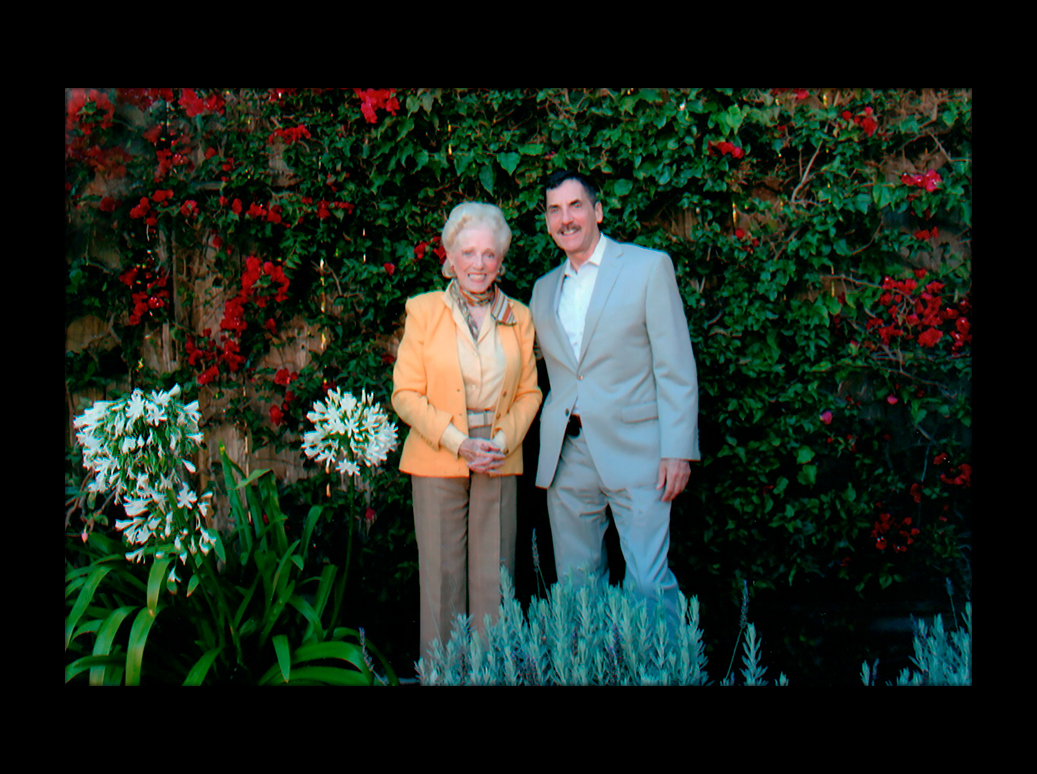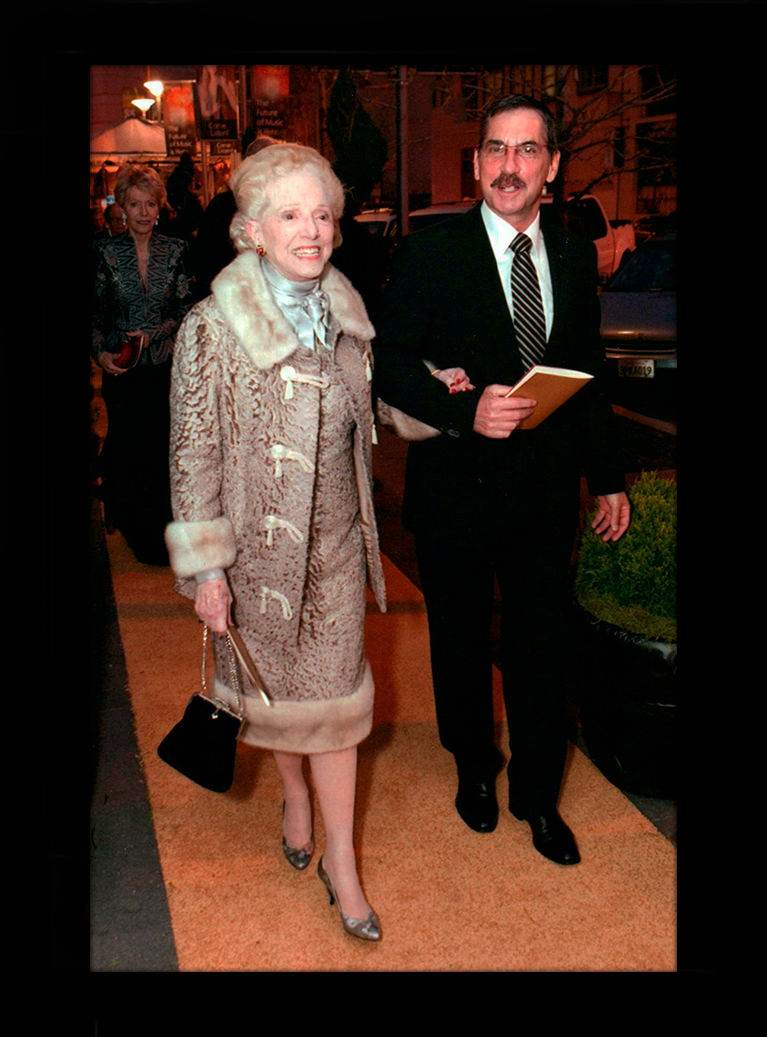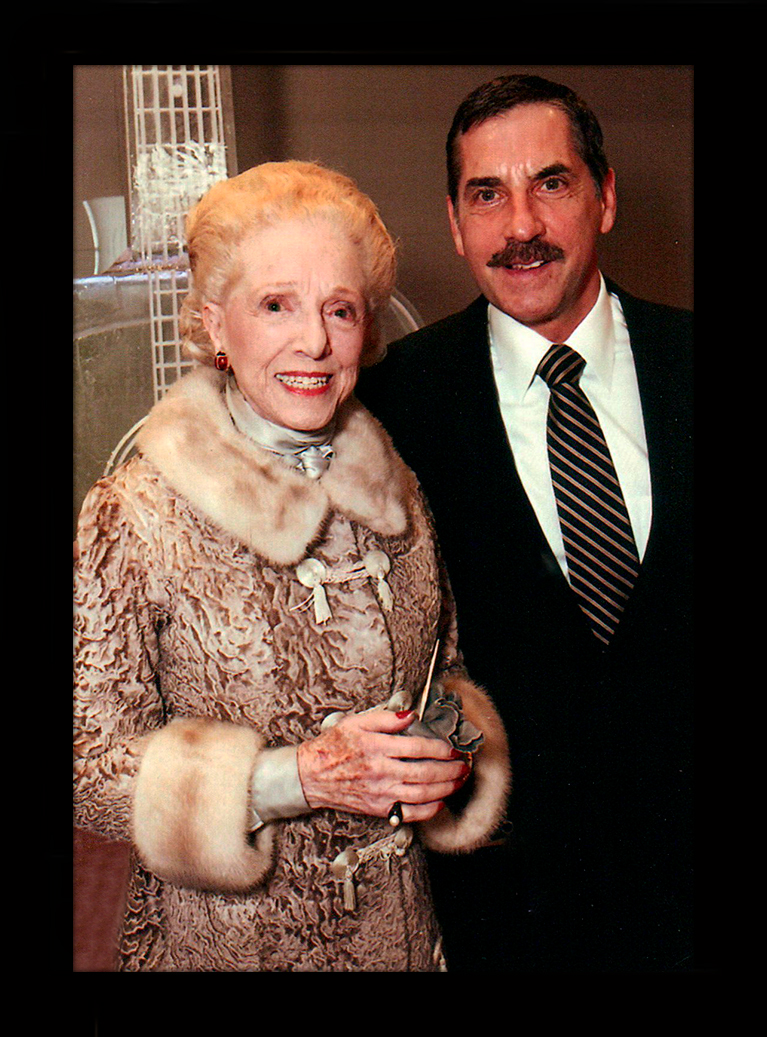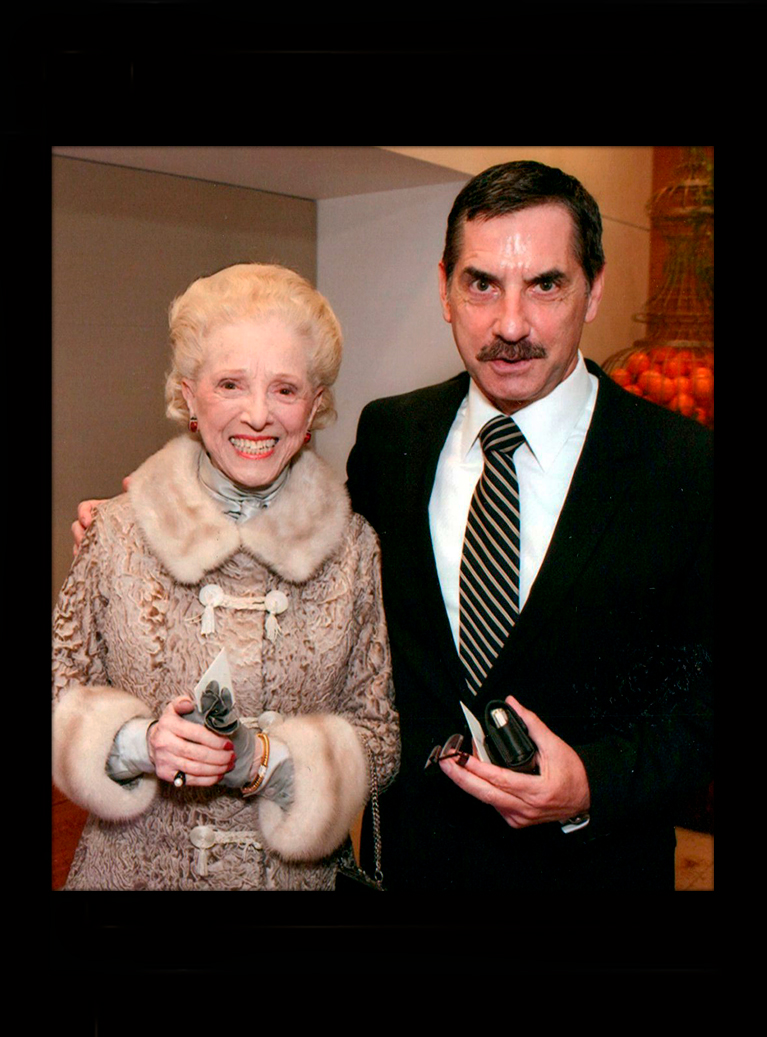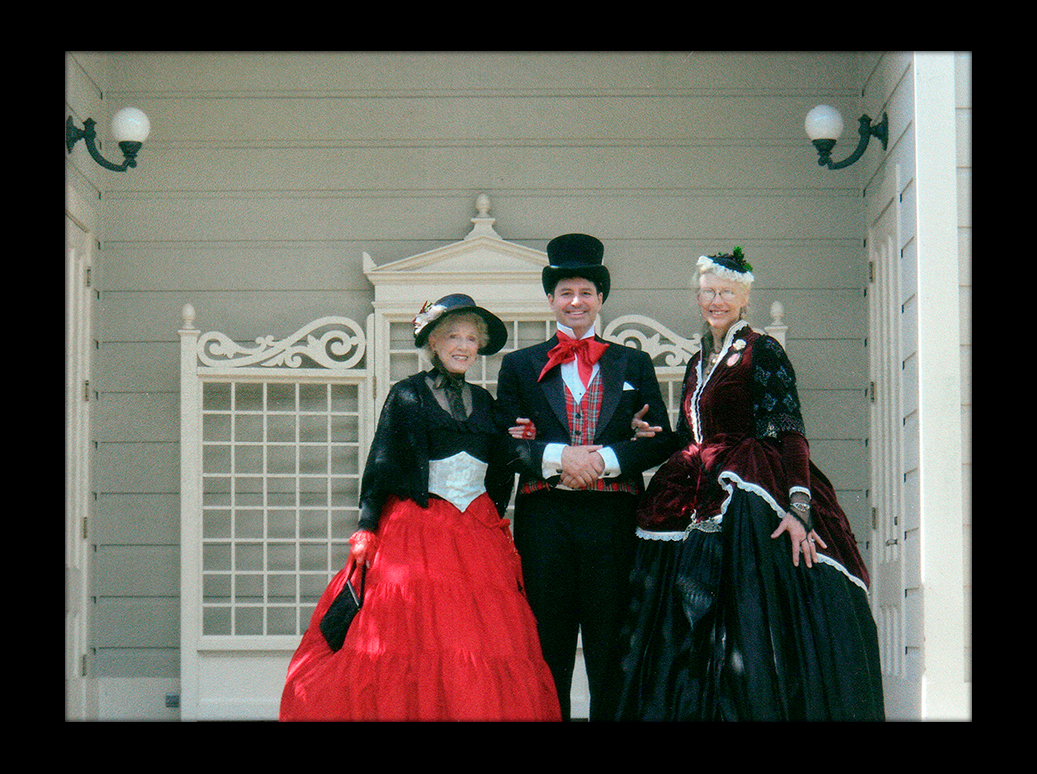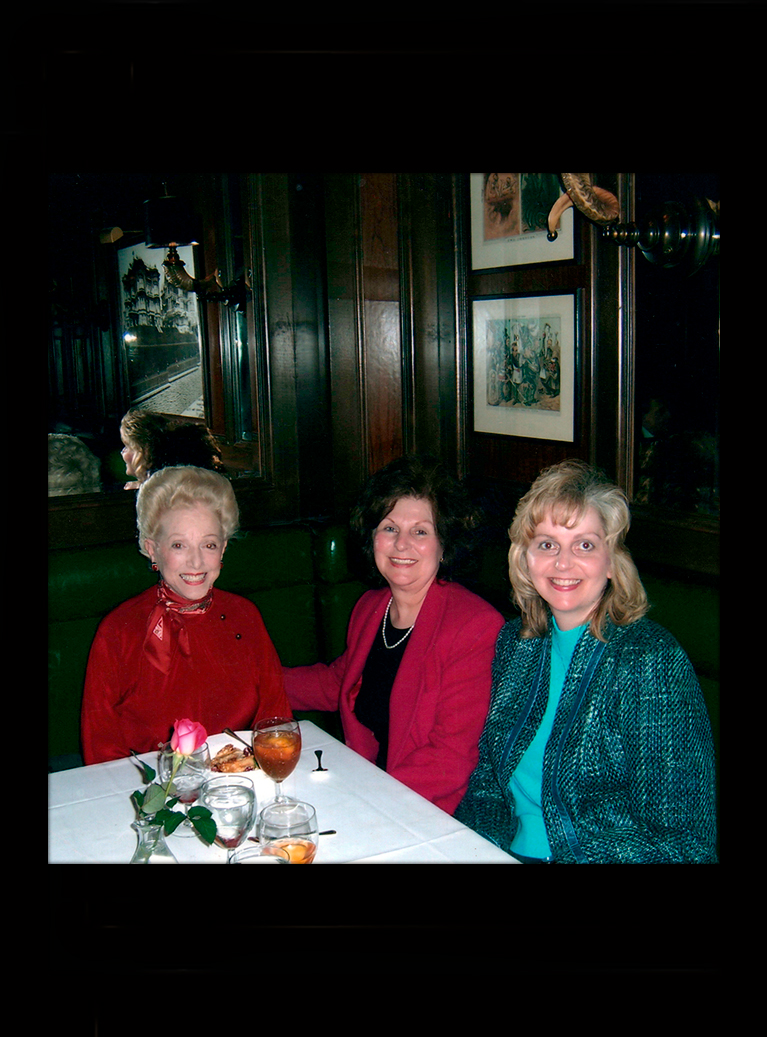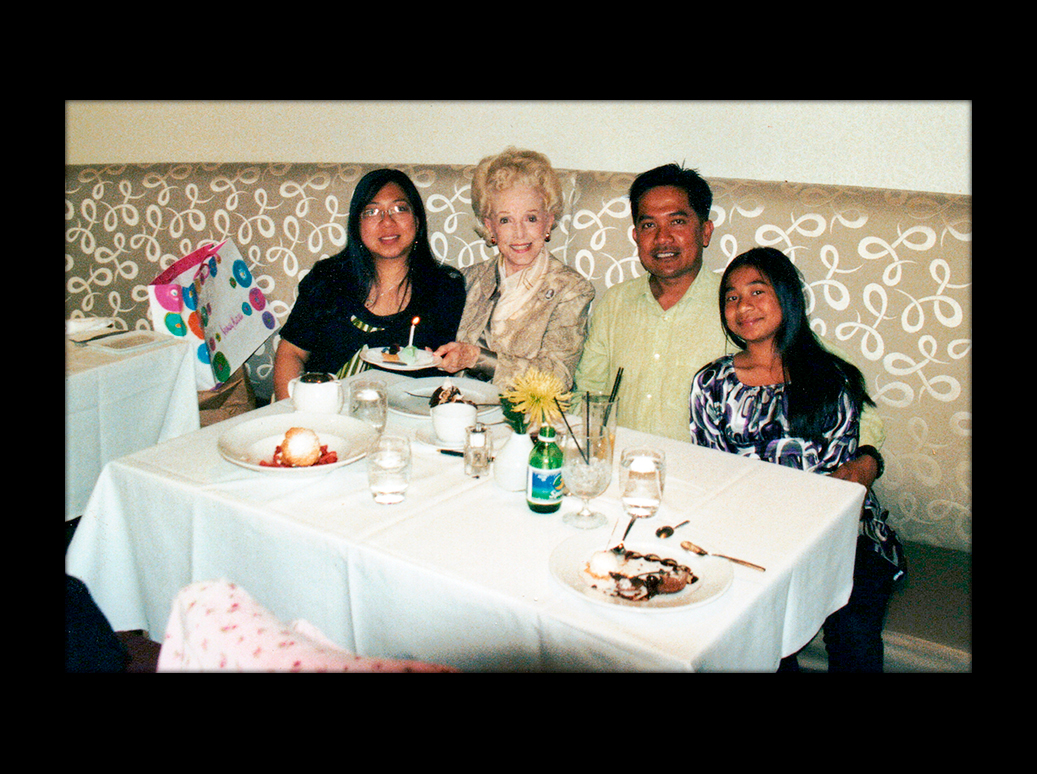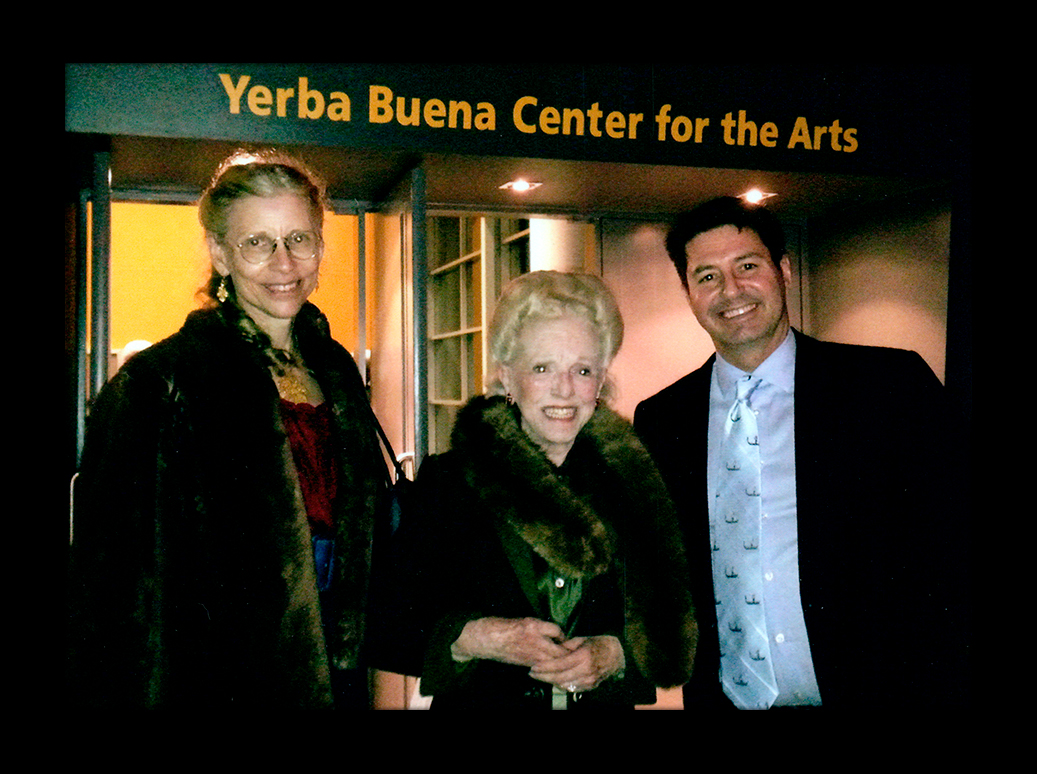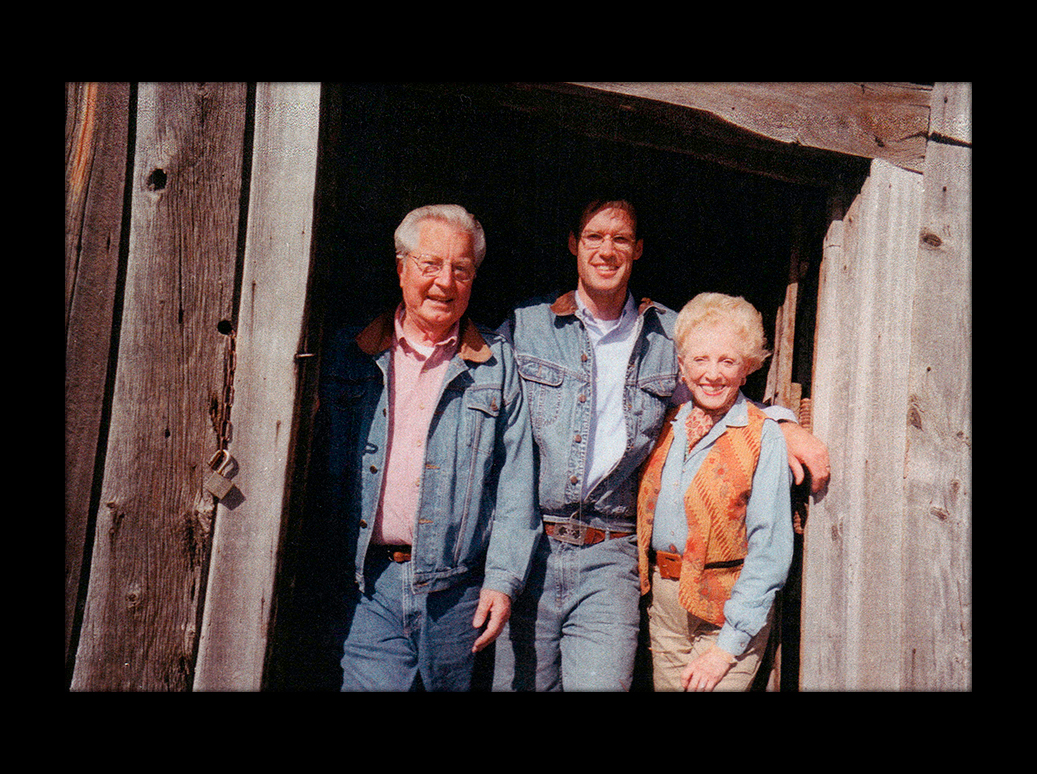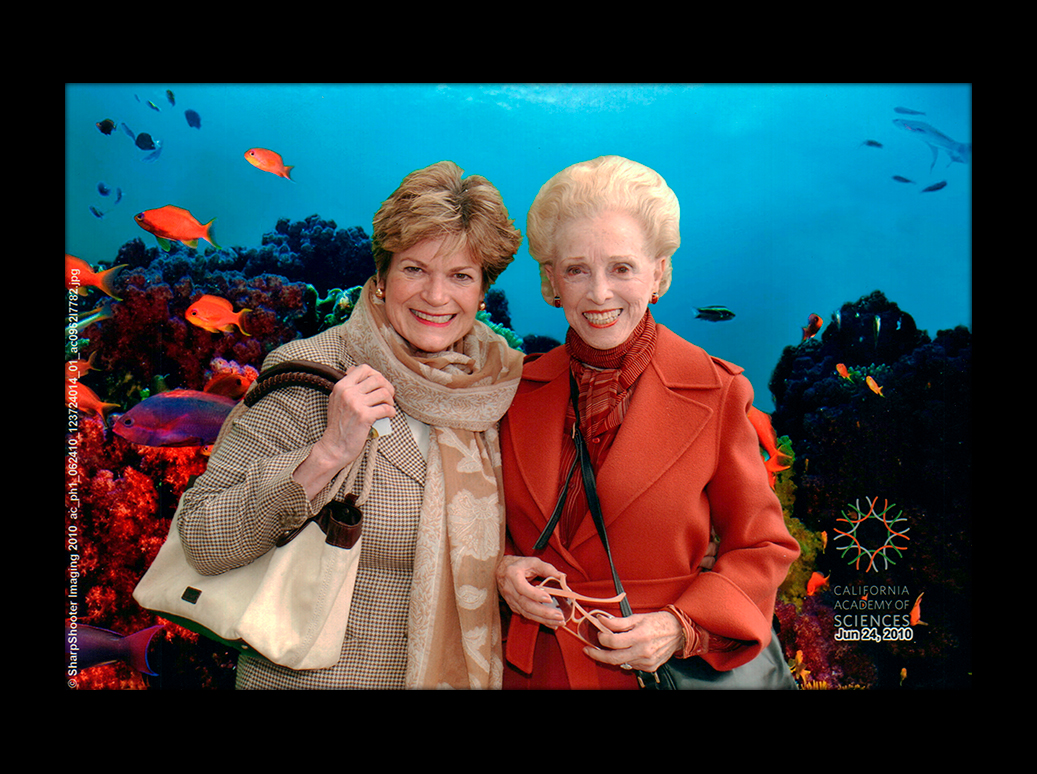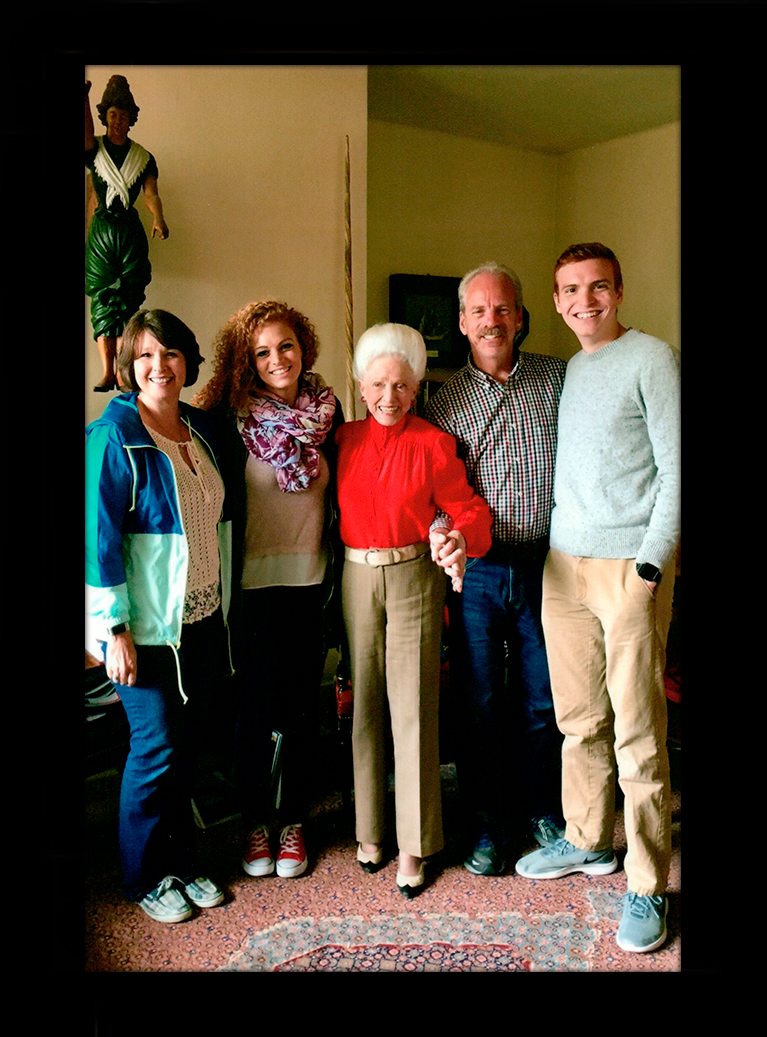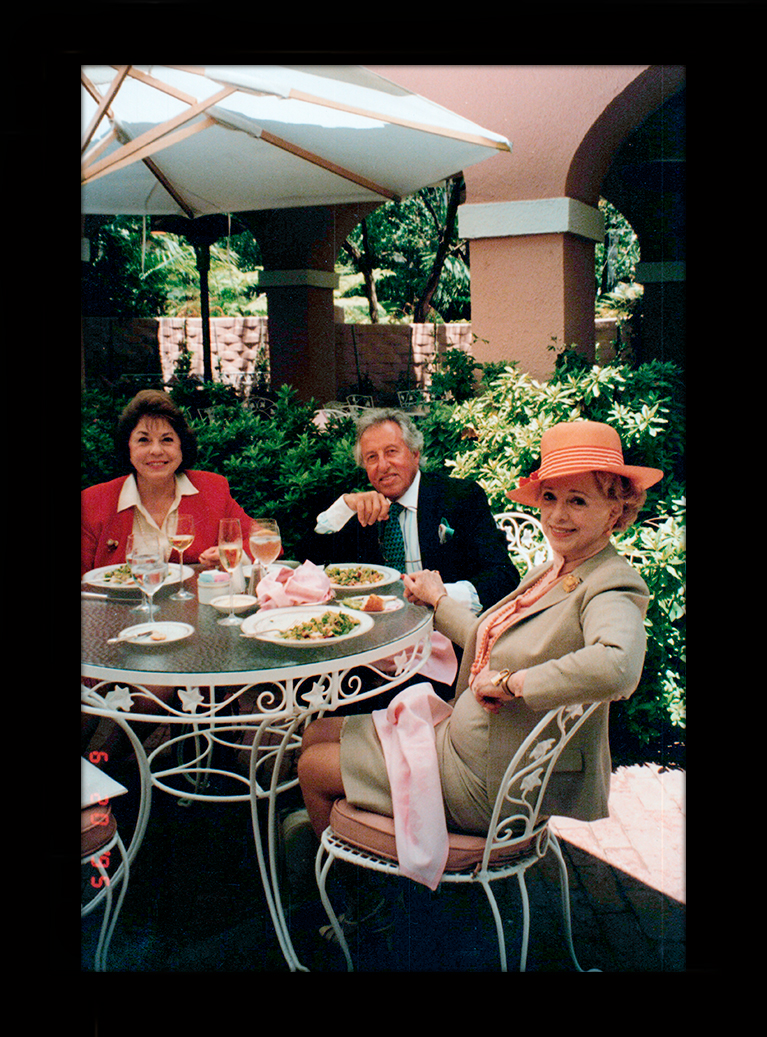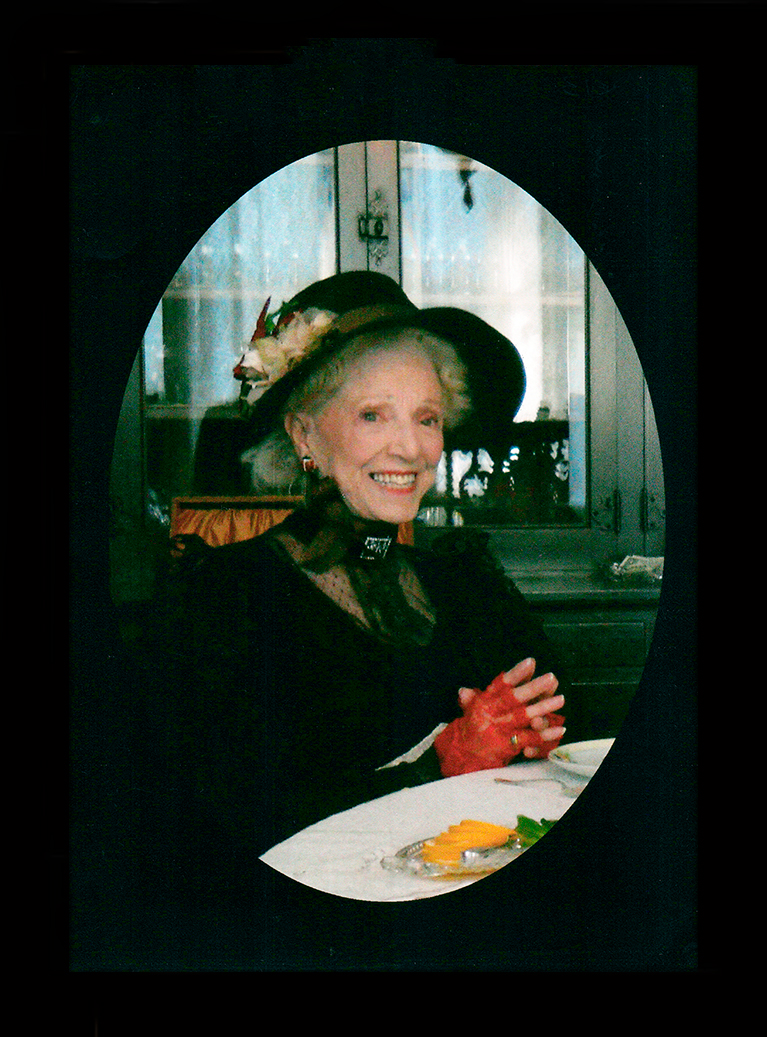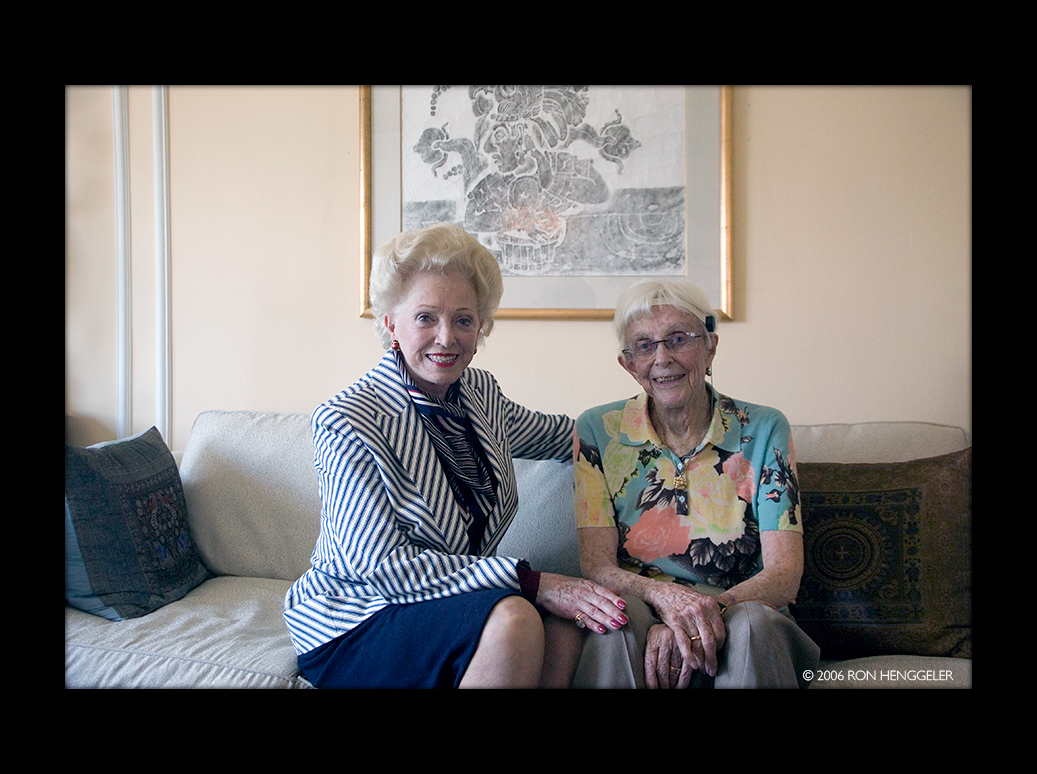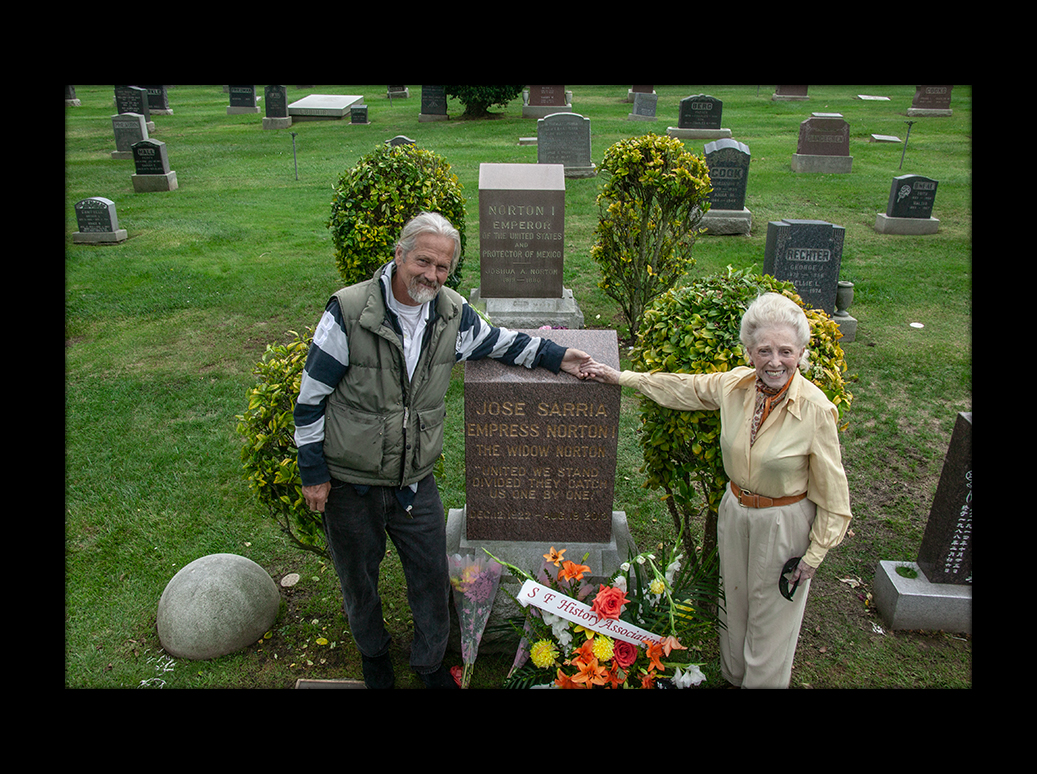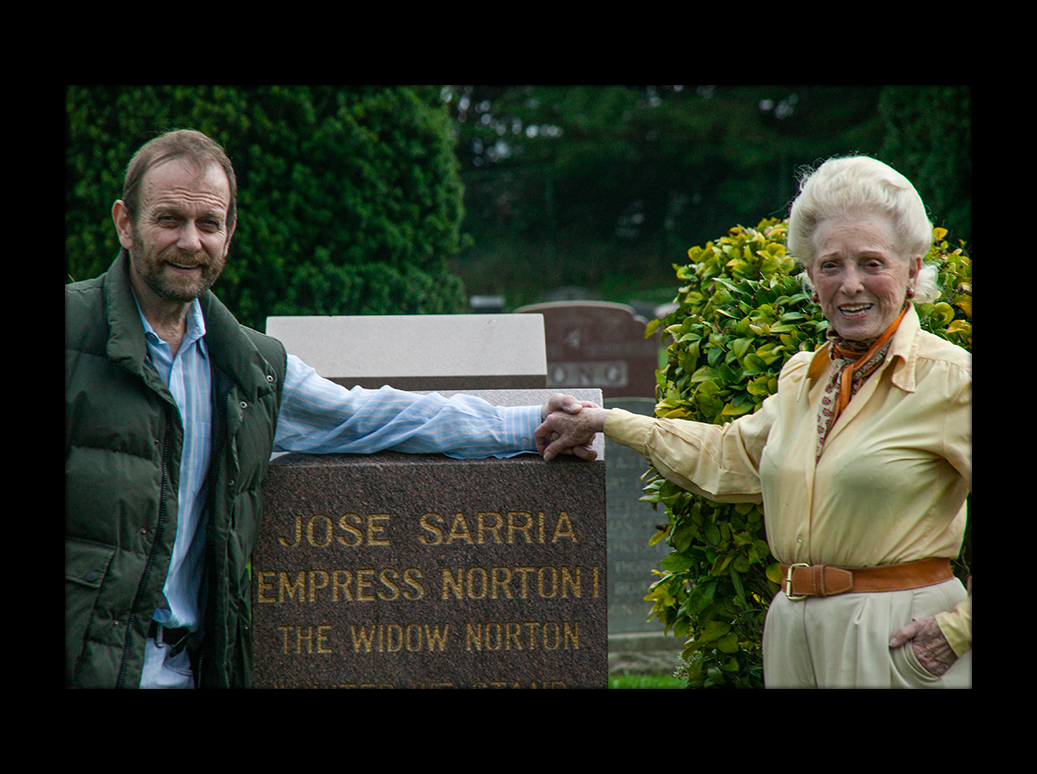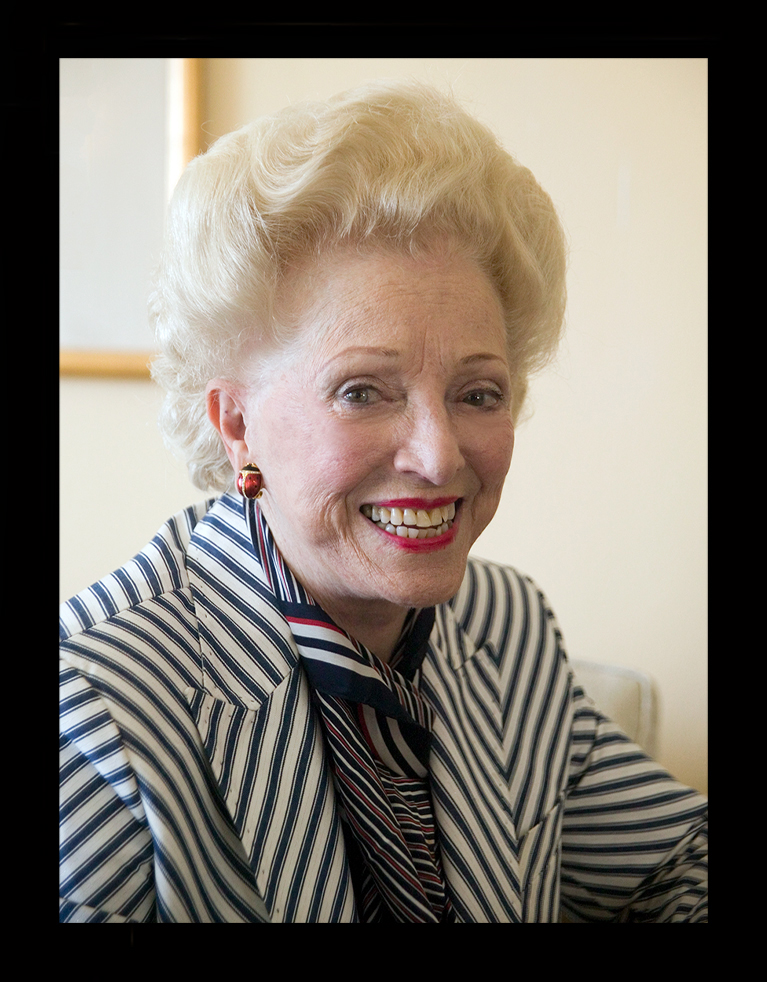RON HENGGELER |
June 7, 2023More photos of Mérí Jaye & friends |
||
Saying goodbye to our dear friend Mrs. Mérí Jaye |
||
(Excerpt from the obituary written by Paul Fees)Mérí Jaye, 102, groundbreaking designer, businesswoman, informed collector, and defender of the urban environment, died quietly at home on March 13.In a career that lasted nearly six decades and spanned three continents, Mrs. Jaye among other accomplishments designed a line of leather goods and opened a chain of retail outlets in Mexico, “Mérí Jaye Creaciones,” to feature them. As art director she helped to establish a fashion magazine in Mexico City, and she worked with airlines and marketing companies in the Americas and Europe to popularize air travel at a time when most transatlantic traffic traveled by sea. In what seems in that light like an ironic career move, she made her most acclaimed professional mark on the maritime travel industry.The Obituary |
||
|
||
|
||
|
||
|
||
|
||
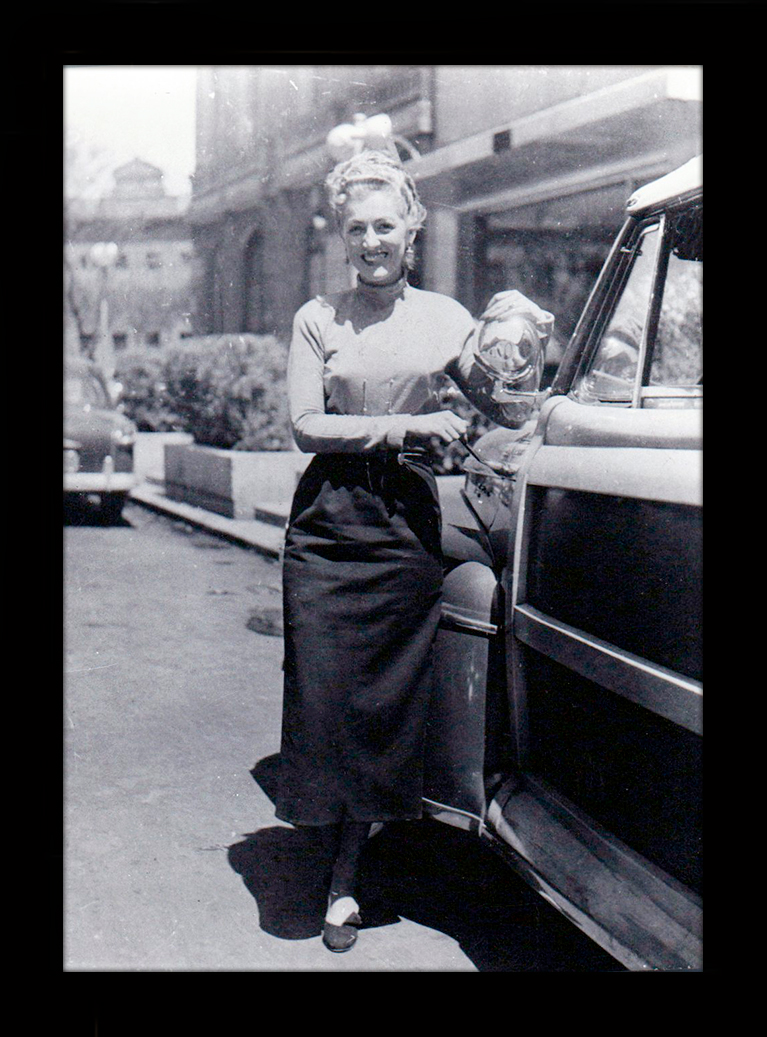 |
||
|
||
|
||
|
||
|
||
|
||
|
||
|
||
|
||
|
||
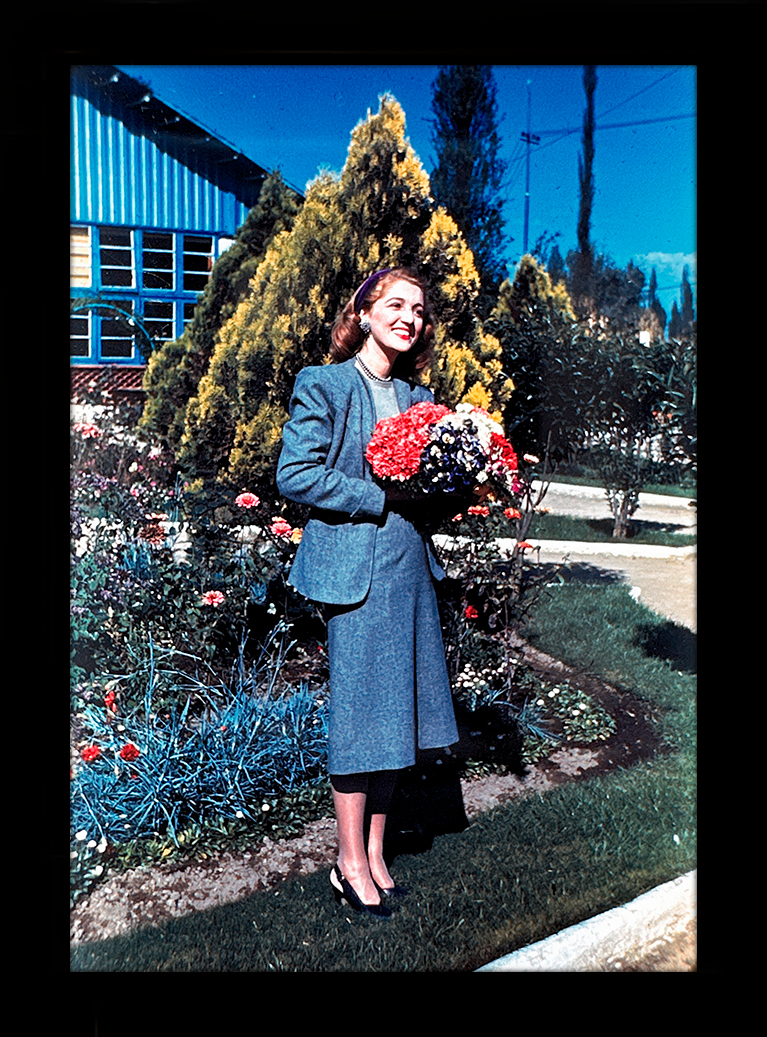 |
||
|
||
|
||
|
||
|
||
|
||
|
||
|
||
|
||
|
||
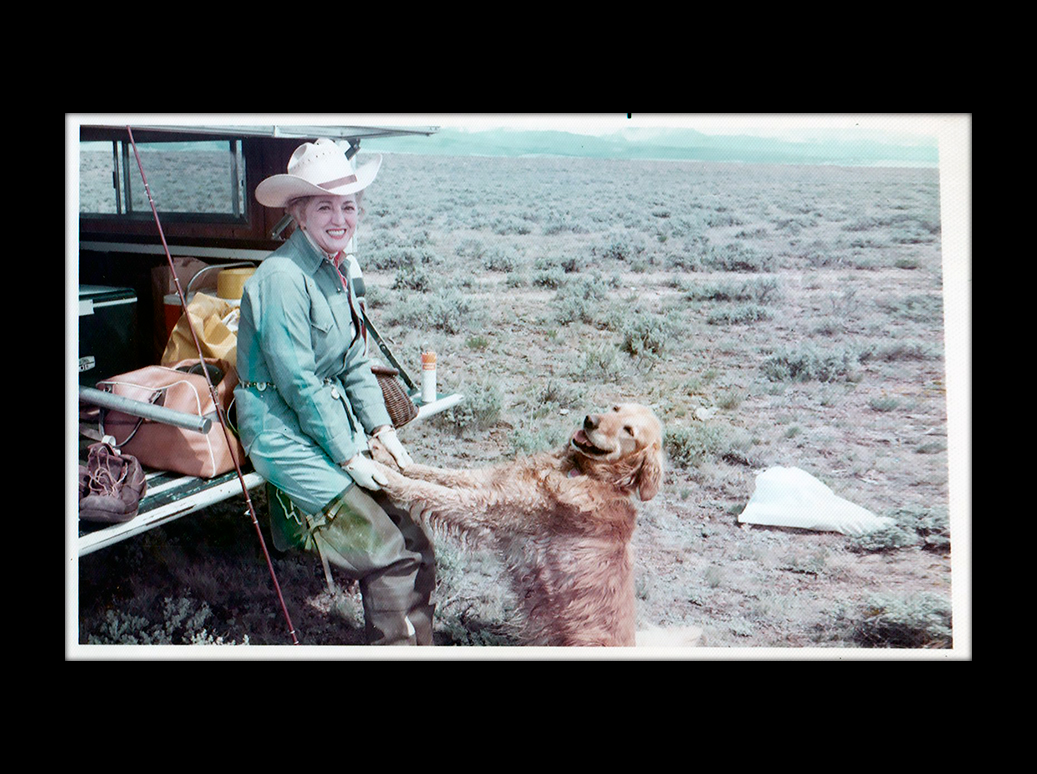 |
||
|
||
|
||
|
||
|
||
|
||
|
||
|
||
|
||
|
||
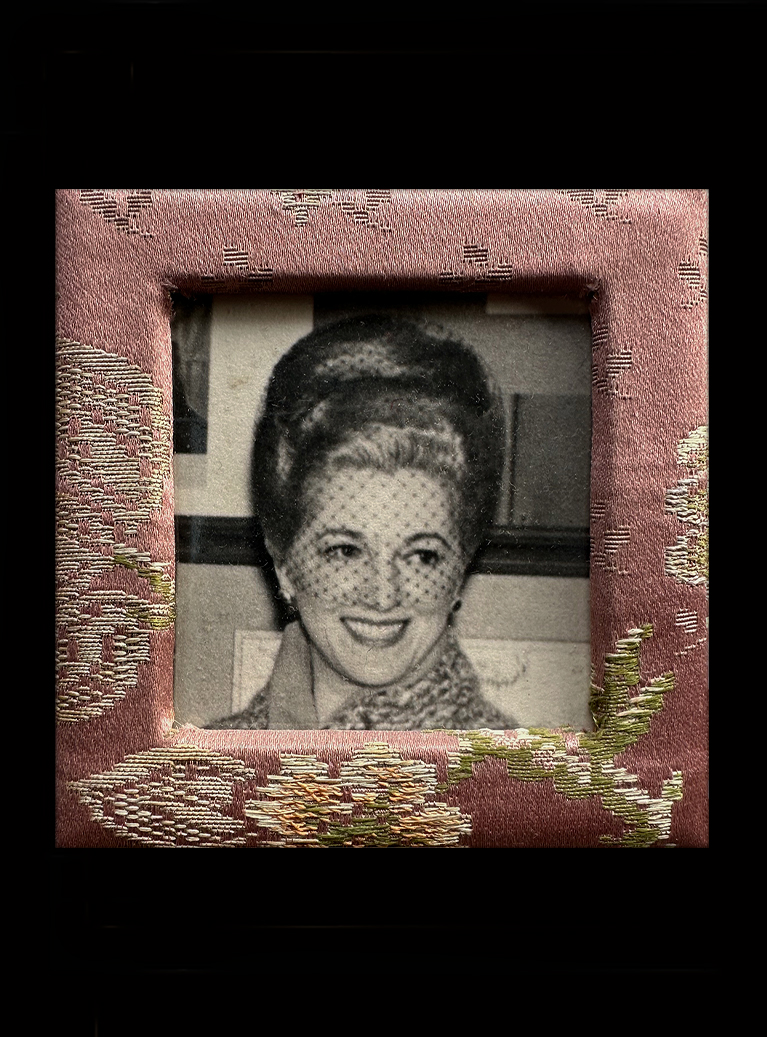 |
||
|
||
|
||
|
||
|
||
|
||
|
||
|
||
|
||
|
||
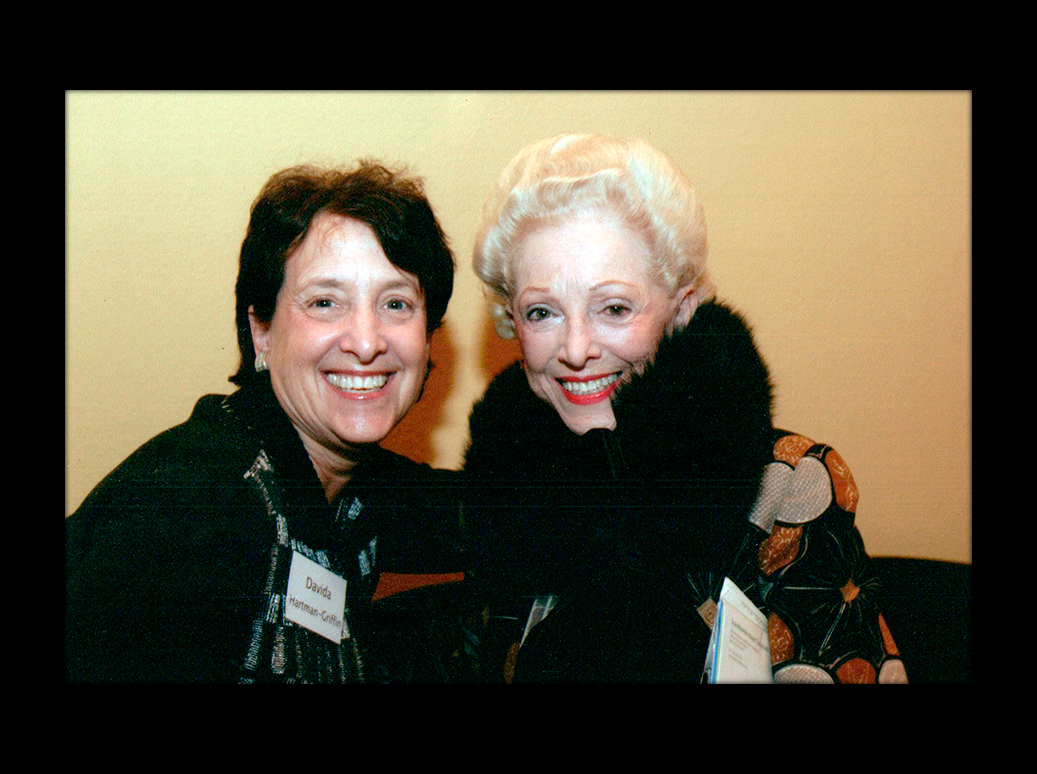 |
||
|
||
|
||
|
||
|
||
|
||
|
||
|
||
|
||
|
||
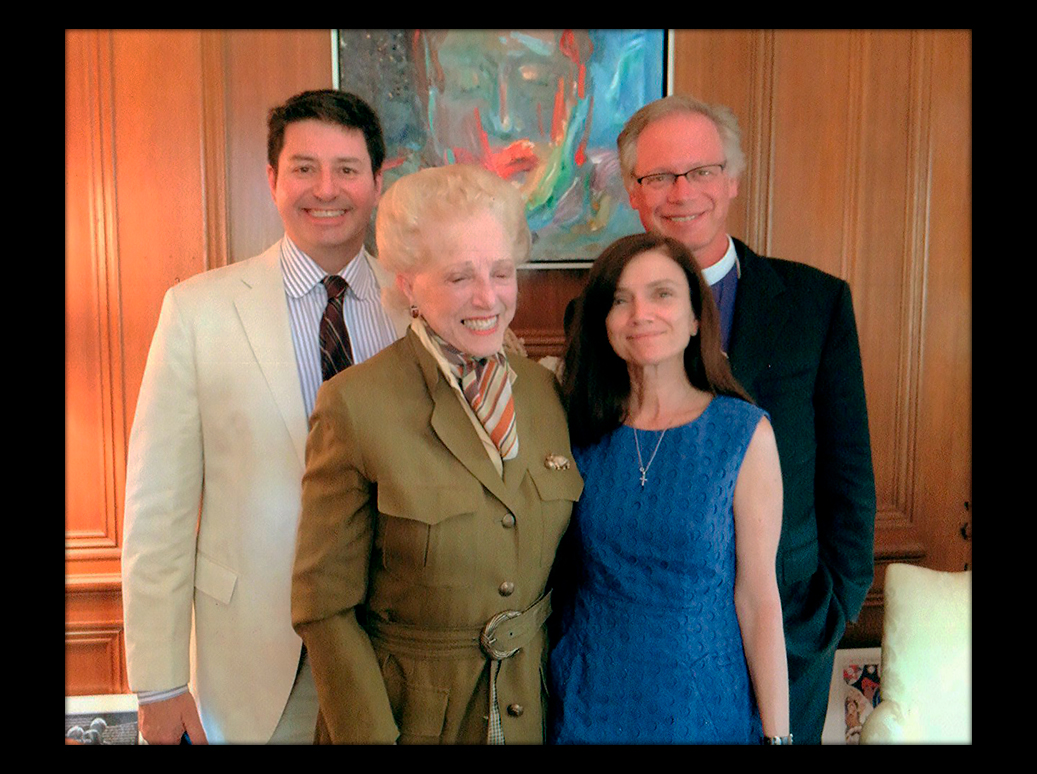 |
||
|
||
|
||
|
||
|
||
|
||
|
||
|
||
|
||
|
||
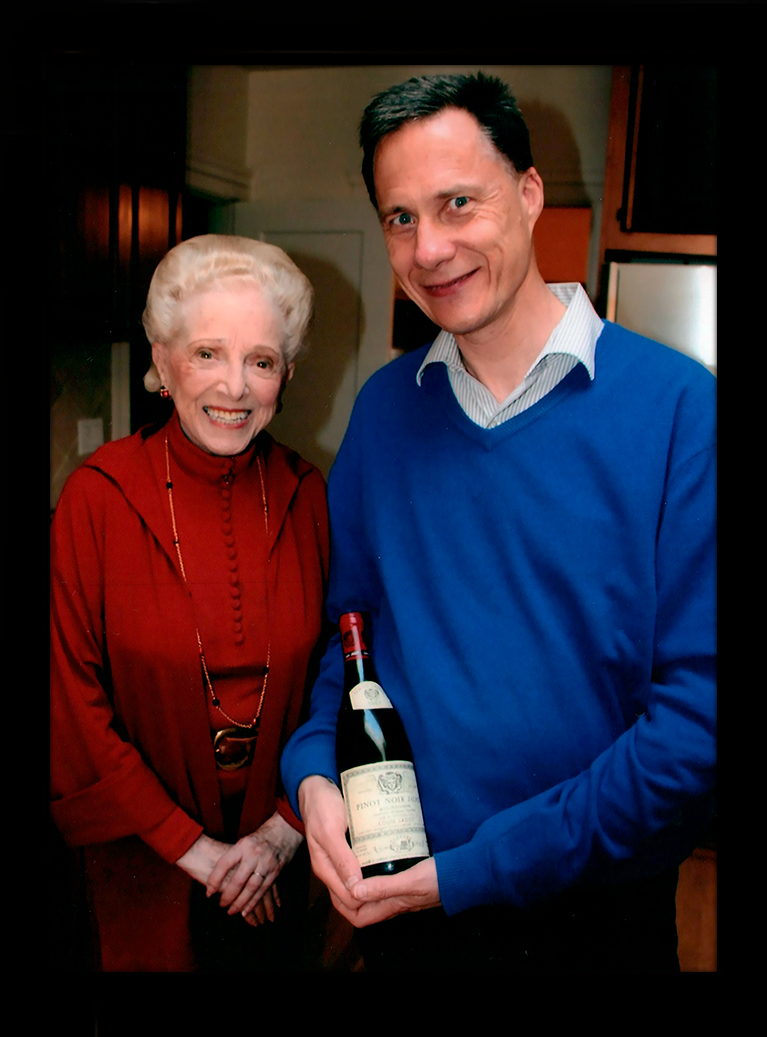 |
||
|
||
|
||
|
||
|
||
|
||
|
||
|
||
|
||
|
||
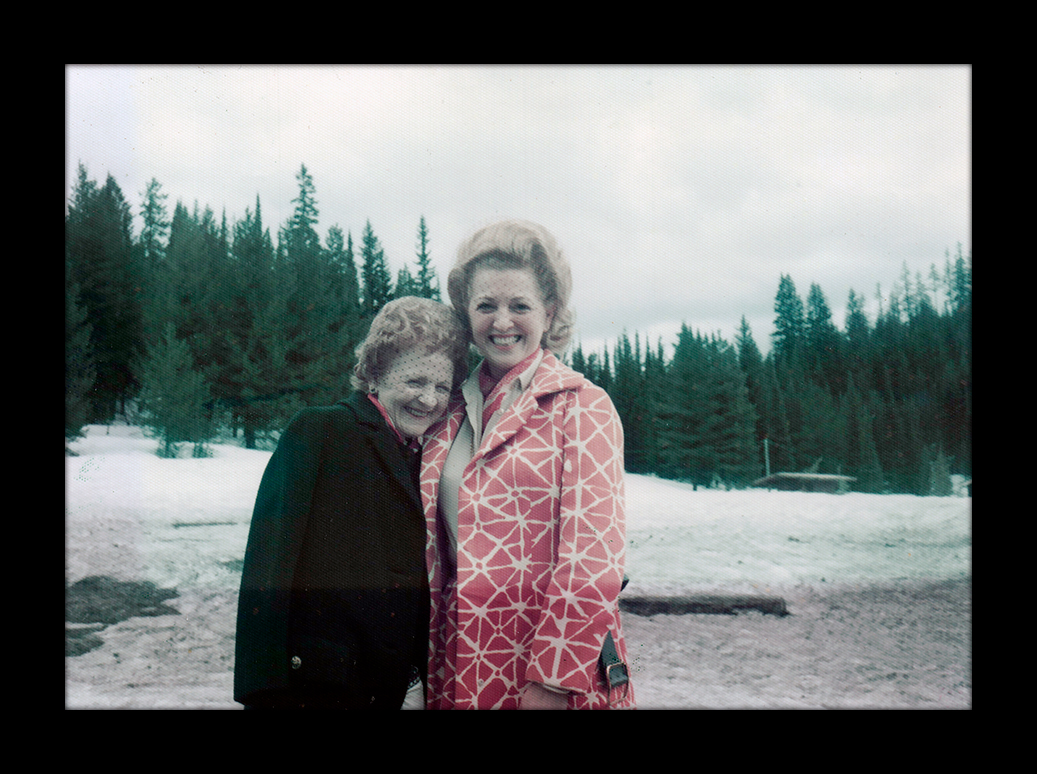 |
||
|
||
|
||
|
||
|
||
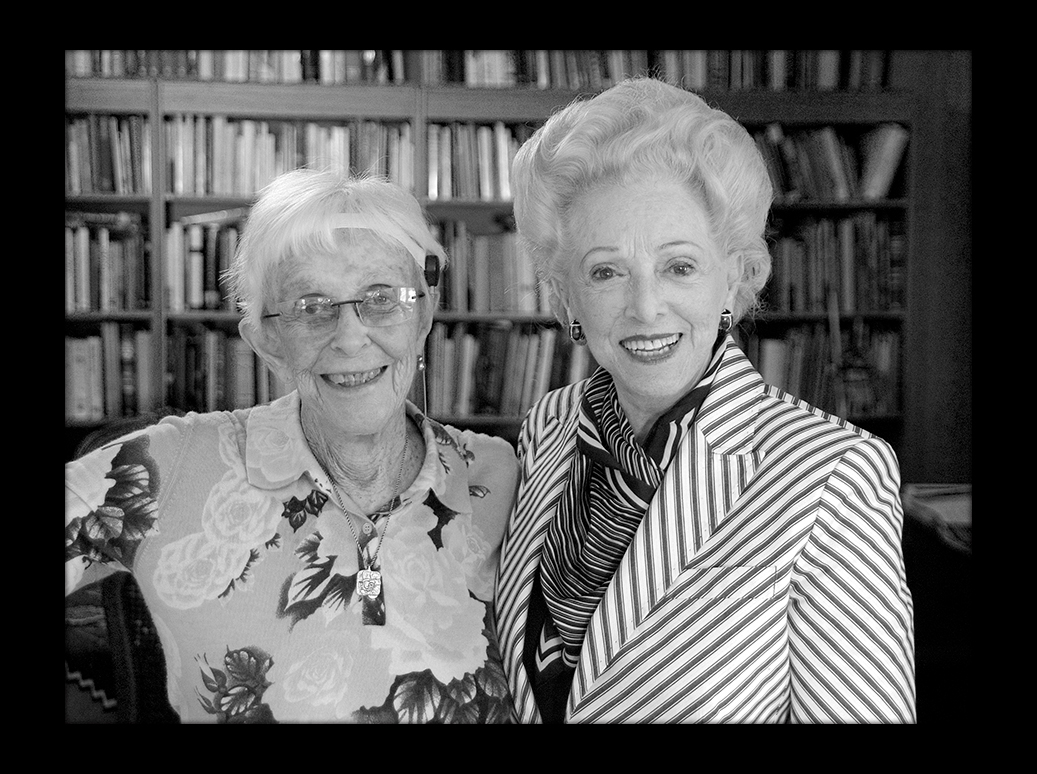 |
||
|
||
|
||
|
||
|
||
|
||
|
||
Click here for more photos |
||
Remembering Mérí Jaye with a gallimaufry of photos
|
||
Remembering Mérí Jaye circa 1940s |
||
Obituary written by Paul FeesMérí Jaye, 102, groundbreaking designer, businesswoman, informed collector, and defender of the urban environment, died quietly at home on March 13. In a career that lasted nearly six decades and spanned three continents, Mrs. Jaye among other accomplishments designed a line of leather goods and opened a chain of retail outlets in Mexico, “Mérí Jaye Creaciones,” to feature them. As art director she helped to establish a fashion magazine in Mexico City, and she worked with airlines and marketing companies in the Americas and Europe to popularize air travel at a time when most transatlantic traffic traveled by sea. In what seems in that light like an ironic career move, she made her most acclaimed professional mark on the maritime travel industry.In the mid-1950s she moved to San Francisco to do interior design and soon turned to a new challenge, re-imagining crew and passenger comfort for a class of cargo ships built for and operated by San Francisco-based American President Lines. The innovative head of APL, Ralph K. Davies, had already excelled at three careers in oil and government when in 1952 he acquired the struggling steamship company. In 1956 he retained Mrs. Jaye as an interior designer to redecorate APL’s corporate headquarters. Recognizing the way she could help revolutionize the passenger’s image of the “tramp steamer,” he urged Mrs. Jaye to work with partners to organize a business entity capable of taking on large-scale projects. As he sought to expand APL’s reach and its role in the industry, Davies took a chance in the male-dominated field to employ the vision and skills of Mérí Jaye and Associates to redefine the interiors of the cargo freighter for the 1960s and the future. Mrs. Jaye worked alongside APL’s naval architects as the new class of “Seamaster” cargoliners, “the largest and fastest cargo ships under any flag” according to Business Digest, were built in shipyards at Pascagoula, Mississippi, and at San Diego and Seattle.The President Van Buren, launched in 1967, was the first of a four-ship contract. Mrs. Jaye took the unusual step of deeply researching the life and times of the 8th president in order to bring a sense of historical authenticity into her designs, a process she followed for each subsequent addition to APL’s fleet. Never far from a book, she built a library of works on maritime history and the culture of seafaring as well as a notable collection of artworks, ship models, scrimshaw, and other artifacts related to the projects she worked on. For a series of ships commissioned by American Mail Lines for Asian commerce, Mrs. Jaye created passenger quarters and public spaces incorporating antique Chinese screens and other relevant objets d’art. One of her last maritime design projects in the 1980s for Delta Cruise Lines gave the same distinction to the San Francisco-based company’s South American shipping. Already by 1962 Mérí Jaye and Associates had a large creative presence in offices and studios on San Francisco’s Pier 39 on the Embarcadero, and Mrs. Jaye herself began to occupy a growing creative presence in the San Francisco Bay Area cultural scene as a patron of musicians, artists, and writers. Though her persona could seem flawlessly glamorous and dauntingly formal, her friends remember her warmth and wit and her generosity of spirit. One of her closest associates described her as a “big romantic, in love with love.”Mérí Jaye was born in Fort Worth, Texas, on December 15, 1920, the second daughter of Edna Marion Stuckey and Olin Jaye. Her father’s principal business was in oil field supply, but he also traded in petroleum futures and oil field leases and took the family to Argentina for a venture in the late 1920s. In the early 1930s Olin and Marion divorced, and Marion moved with her daughters, June and Mérí, to San Antonio. There Mérí was blessed, she said, to be accepted into the Sacred Heart Academy where the nuns emphasized rigorous scholarship while encouraging her to explore and develop her artistic talents. As a scholarship student, she helped earn her keep by doing things she loved: tutoring younger pupils in language arts, and in singing for religious services and assemblies. In fact, she seemed at first destined for a career in music when at 19 she was hired to sing for Henry King’s Dance Band in San Antonio and Dallas. In 1941 she appeared as the “new girl singer” with the famous Mack Rogers who gave her star billing as “The Lovely Mérí Jaye” when his popular dance orchestra and jazz band toured Texas and the Southwest. In Mexico City her dancing skills led her to a new career as a model. Modeling in turn gave her entrée to the world of fashion design. Coursework at the Universidad Nacional Autónoma de México and later at schools in Rome, Madrid, and Paris grounded her in the historical dimensions of her art and the techniques of interior design.As opportunities shrank during the Second World War, Mérí Jaye worked as an assistant to her father in his oil company, a position which not only helped her make ends meet but allowed her to expand her range of business contacts in the U.S. and Mexico. After the War she returned full-time to Mexico City and launched Mérí Jaye Creaciónes, S.A.. designing, manufacturing, and marketing shoes, handbags, and other leather fashion accessories. She built a boutique in Mexico City’s fashionable downtown and then opened several other retail outlets, controlling all aspects of construction, staffing, inventory, purchasing, and merchandising. At the time, Mexico City was a playground for Hollywood and the nascent post-War international “jet set.” Mérí Jaye’s growing presence in their fashion world led her to collaborations with airlines, department stores, and hotels in design and marketing. In 1950 she helped put together an arts and fashion look for the debut of the upscale magazine Vox and then produced some of the first fashion shows for Mexican television.By the early 1950s, she had taken on design and marketing projects in Europe and the United States for clients ranging from Nina Ricci to Air France. For almost a decade she lived and received her mail in hotels in Europe and New York. With the commission to adapt the interiors of San Francisco’s International Building to be the headquarters for American President Lines, Mrs. Jaye found a home.In 1962 she purchased one of the oldest residences on Russian Hill and began the long process of redesigning and updating it, converting it to a multistory French-style townhouse, finally moving in with her growing collections in 1966. The stability derived from a permanent home allowed Mrs. Jaye to indulge her passions for history and the arts. Over the next decades she became a presence in organizations such as the National Maritime Archives at Fort Mason, the California Book Club, and the San Francisco Conservatory of Music, and a friend and benefactor of the Palace of Fine Arts (the Legion of Honor) and Berkeley’s Bancroft Library. Perhaps her most visible contribution to the life of San Francisco is the repoussé bronze and wood installation in Nob Hill’s Grace Cathedral, “The Brotherhood of Man,” celebrating the birth of the United Nations in San Francisco in 1945. It was conceptualized and designed by Mérí Jaye, commissioned originally by Ralph K. Davies for the International Building, and executed by sculptor Rodney Winfield.Influenced by the noted Texas writer, folklorist, and advocate for liberal social causes, J. Frank Dobie, Mrs. Jaye nurtured an interest in western American history and art and especially in American Indians. Friendship with Dr. Robert Staffanson, a Montana-born orchestra conductor and social activist, led her to be a founding board member of the American Indian Institute which he established at Bozeman in 1973. She also served on the Foundation Board of the University of Montana’s Museum of Art. She turned the top floor of her home into a library and salon, furnished with Indian art and artifacts, which she fondly called the “Wigwam.”Despite her many friendships and public benefactions, Mrs. Jaye remained an intensely private person. She became locally famous for her battles to preserve landmark trees on Russian Hill and for the preservation of the Presidio for public use rather than commercial profit. Less well-known were her support and encouragement over the decades of young musicians, artists, and writers, and her conspicuous and consistent dedication to racial and social justice. Her legacy, she would say, is her example of making a difference as a woman prevailing in a man’s world, and in fostering the arts and music as democratic endowments, accessible to all.No services are planned at this time.In lieu of flowers, memorials may be made to the San Francisco Conservatory of Music (https://sfcm.edu), or to the Save the Redwoods League (www.nature.org). |
||
Newsletters Index: 2023, 2022, 2021 2020, 2019, 2018, 2017, 2016, 2015, 2014, 2013, 2012, 2011, 2010, 2009, 2008, 2007, 2006
Photography Index | Graphics Index | History Index
Home | Gallery | About Me | Links | Contact
© 2023 All rights reserved
The images oon this site are not in the public domain. They are the sole property of the
artist and may not be reproduced on the Internet, sold, altered, enhanced,
modified by artificial, digital or computer imaging or in any other form
without the express written permission of the artist. Non-watermarked copies of photographs on this site can be purchased by contacting Ron.
